Android 15 brings enhanced theft protection, private spaces for sensitive apps, improved multitasking on foldables, and updates to camera, and security.
The post Exploring the Key Features of Android 15: What’s New? first appeared on Trendy Gadget.
Android 15 brings enhanced theft protection, private spaces for sensitive apps, improved multitasking on foldables, and updates to camera, and security.
The post Exploring the Key Features of Android 15: What’s New? first appeared on Trendy Gadget.
It’s a tablet PC, a shower speaker, your car’s infotainment system, and a portable dashboard for everything from music to video to phone calls. Meet the Nomad – a tablet-speaker that isn’t designed for productivity… it’s designed for entertainment. With a powerful speaker system, a waterproof design, and mounts that let you place the Nomad anywhere, this device doubles as your shower speaker, your smart display, a Carplay/Android Auto-compatible infotainment system, a dedicated device for Netflix and Chill whether it’s in the bedroom, living room, or poolside, and even your perfect radio alternative when you’re camping. For ages, tablets have grown thinner and their speakers weaker… and smart speakers have remained tethered to their plug points. Nomad combines both in a durable, portable package so you can carry your entertainment with you, without compromising on literally anything.
Designer: UpBeat
Click Here to Buy Now: $249 $399 ($150 off) Hurry! Only 13 days left. Raised over $113,000
The Nomad isn’t a tablet. It isn’t a speaker. It isn’t a smart home hub like the Echo Show or the Pixel Tablet. It’s a little of everything, combined into one product that offers zero compromises if you know what you’re buying it for. It’s designed purely for entertainment, which means that sleek, laptop-bag-friendly profile is a non-issue. The device is rugged, doesn’t compromise on audio quality, and is made to be used everywhere, from in your shower to your car.
With its waterproof build and four-speaker array, the Nomad was crafted with audio at its core. This device excels as a portable entertainment hub, with an audio quality that outshines any tablet’s built-in speaker system—be it the shower, the backseat of a car, or your outdoor adventures. The 4 front-facing speakers and 2 subwoofers on the side deliver rich, resonant sound (at up to 94 decibels) that rivals traditional portable speakers. Combined with a battery life of over 20 hours for music playback, the Nomad is set to keep the party going without frequent recharges.
On the inside, the Nomad runs on Android, which means it’s ready for all your favorite streaming apps, plus it has a microSD slot for expanding storage and loading up on offline content. The 8-inch HD touchscreen has a striking brightness level of 1200 nits, 20% brighter than the iPad Pro which shines at 1000 nits, making it perfect for outdoor use. The display is responsive, has an anti-glare coating, and complements the overall build of the device—it’s rugged yet refined, a rare find in tablets with a focus on durability.
The built-in speaker is supplemented by microphones too, which means the tablet lets you interact with voice assistants, leave voice notes, or even take phone calls. That’s where the powerful speakers come in handy, allowing you to talk without cupping your ear to hear what the other person is saying. If you want to have a private conversation, just connect Bluetooth earbuds, or better still, use the 3.5mm jack on the Nomad to hook up your wired headphones. The only thing missing is an on-board camera, which means no photographs or even video calls.
Mounting options for the Nomad extend its functionality even further. It comes with a shower wall mount, which lets you easily slip the Nomad in while having a bath. The tablet is fully usable while bathing, so whether you’re watching a TV show or hosting your own bathroom karaoke, the Nomad lets you stay in control, unlike your phone or your Bluetooth speaker, which won’t go in the shower with you.
Outside the shower, a built-in kickstand lets you prop the Nomad up wherever you are. If you want to tether the tablet to a tree or the back of your car-seat for in-car entertainment, the tablet comes with a strap-on mount too. An optional add-on cup-holder mount lets you bring the tablet to the front seat, substituting your in-car radio or music player. When all fails, a tripod mount on the bottom lets you screw a tripod in, allowing you to position your tablet practically anywhere. And since it’s fully waterproof, you don’t have to worry about splashes or moisture damaging the device.
For in-car use, you’ve got built-in Android Auto and CarPlay compatibility, a standout feature that elevates the Nomad from a mere tablet to a full-fledged navigation and media console for your car. CarPlay integration makes the device invaluable for on-the-go use, especially if you prefer your tech streamlined and multipurpose. Mount it on a dashboard, and you have an instant navigation system paired with immersive sound quality, all accessible through the Android interface that many users will find familiar and easy to navigate.
Under the hood, the Snapdragon 662 processor keeps the Nomad humming along smoothly. Sure, it’s not the latest SoC on the market, but in a rugged device focused on reliability and battery efficiency, the Snapdragon 662 is a solid choice that provides a good balance of performance and energy efficiency. You’ll find it more than capable for streaming, navigation, and even some light gaming if the mood strikes. Although the exact battery capacity isn’t mentioned, the Nomad delivers 20 hours of audio on a full charge, and can be doubled thanks to an optional magnetic battery that snaps right on top, bringing its output to 40 hours of music, or 10 full hours of video. Both the tablet and the magnetic battery have USB-C charging, which means you can charge your Nomad anywhere.
The basic bundle starts at $249, which includes the Nomad itself along with the shower mount. The $340 Ultimate Bundle gets you all the other accessories too, like the strap-on mount, the cup mount, and that snap-on magnetic battery. No matter which bundle you pick, the Nomad ships globally, starting February 2025.
Click Here to Buy Now: $249 $399 ($150 off) Hurry! Only 13 days left. Raised over $113,000
The post This Rugged Android Tablet with 4 Speakers Is Your New All-Terrain Waterproof Entertainment Hub first appeared on Yanko Design.
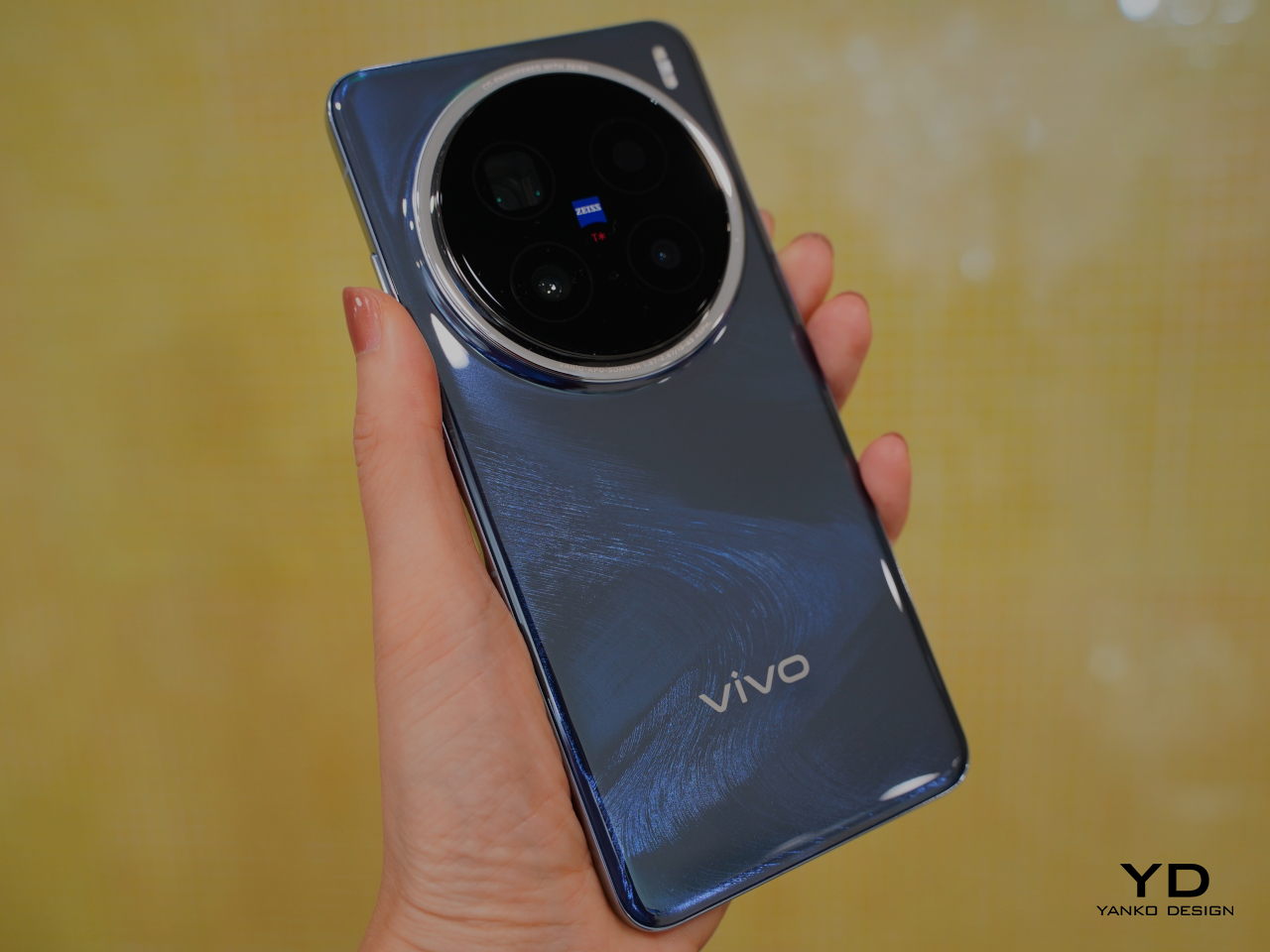
I’ve had the privilege of reviewing many phones, and although each experience is unique, few excite me as much as Vivo’s flagship X series. Having extensively used the Vivo X100 Pro as my go-to device for mobile photography, I was keen to explore the advancements in the new Vivo X200 series.
Launched in Beijing on October 14th, the series includes the X200, X200 Pro, and X200 Pro Mini. While the devices are expected to be available in other markets, Vivo has not yet revealed the details of their availability. For this review, we’ll focus on the Chinese version of the X200 Pro.
Continuing its partnership with Zeiss for the camera system, the X200 Pro aims to capture the attention of tech enthusiasts and content creators alike. In this review, we will explore the various aspects of the device, from its design and ergonomics to its performance and value, to determine how it stands against its competitors.
Designer: Vivo
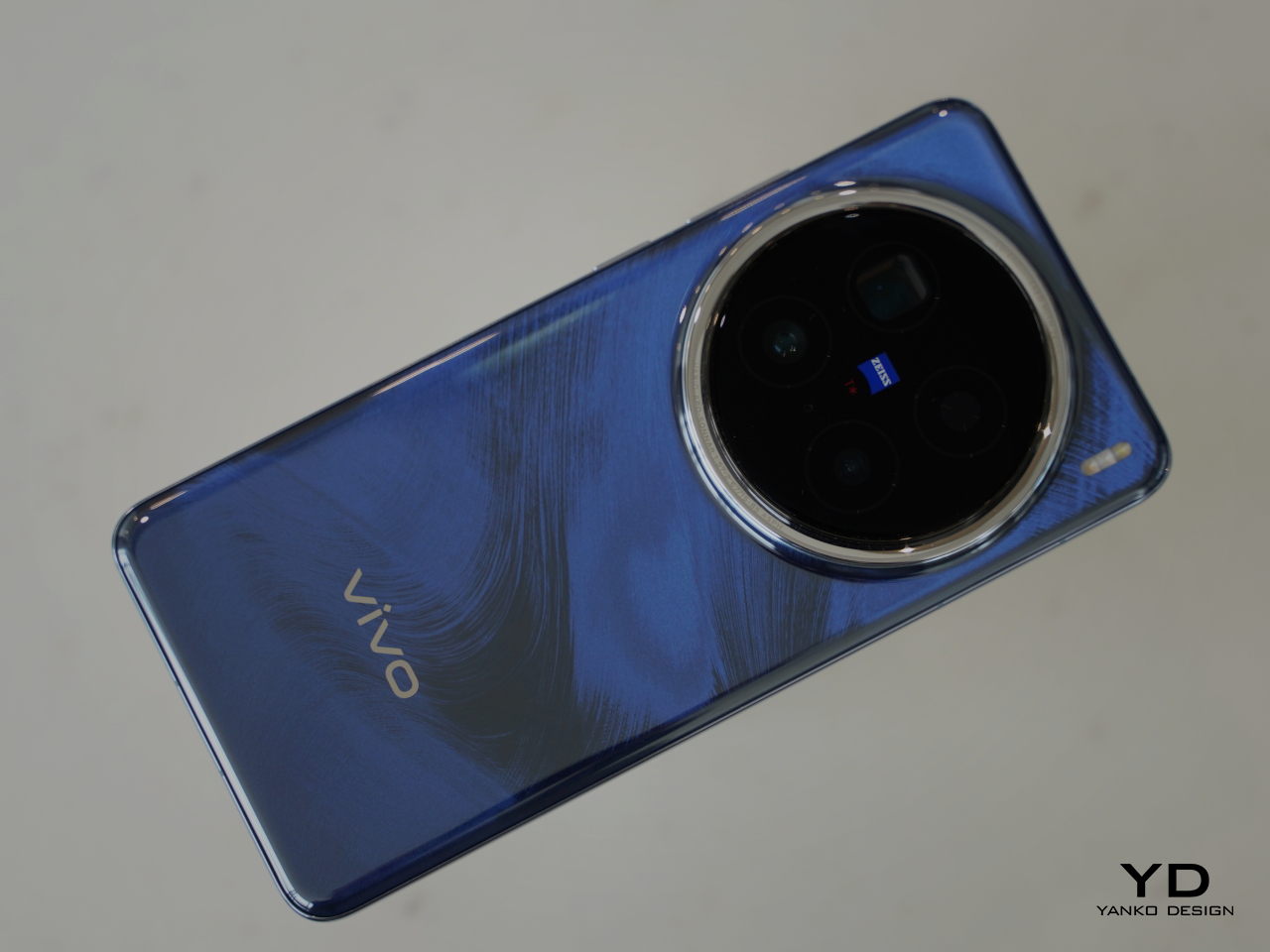
The Vivo X200 Pro maintains the design language of the X series with subtle yet significant changes. The most prominent design element is, of course, the camera island. Now slightly larger, it features a perfectly symmetrical design, moving away from the off-centered ‘Halo’ ring.
Branding elements have been streamlined, with ‘Vivo/Zeiss Co-engineered’ relocated to the upper camera ring, enhancing the device’s minimalist appeal. Being the Chinese version, it is devoid of CE markings, emphasizing a sleek, uninterrupted design.
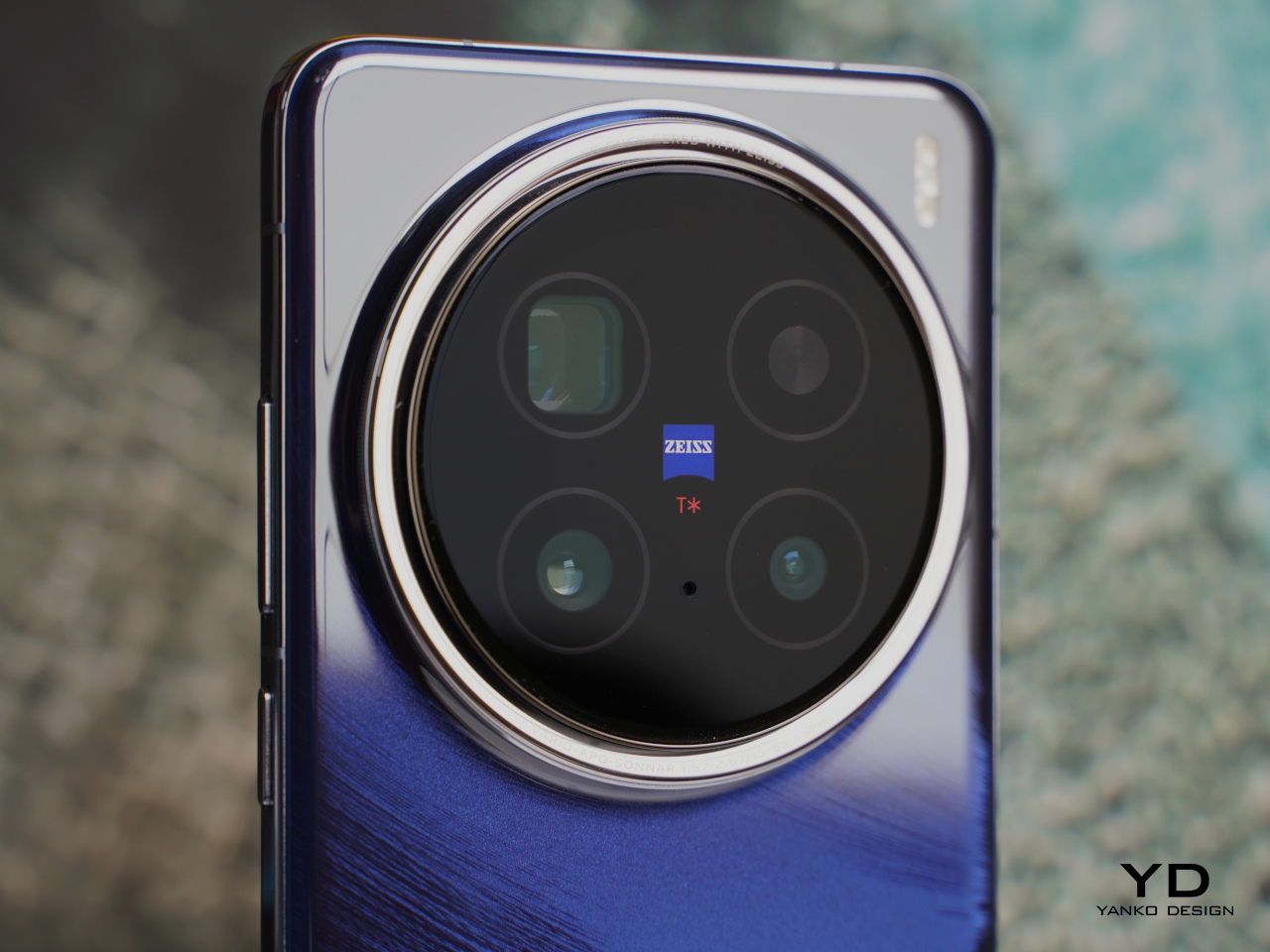
Available in Sapphire Blue, Titanium Grey, Moonlight White, and Carbon Black, the device offers both glossy and matte finishes. The Sapphire Blue review unit we received, inspired by ocean waves, is visually striking but prone to fingerprints, necessitating frequent cleaning. Aside from Sapphire Blue, the other variants lean more towards understated appeals.
Embracing a micro-curvature design, the Vivo X200 Pro offers a comfortable grip despite its substantial dimensions – 162.36mm in length, 75.95mm in width, and varying thickness of 8.49mm for Sapphire Blue, Titanium Grey, and Moonlight White, and 8.20mm for Carbon Black.
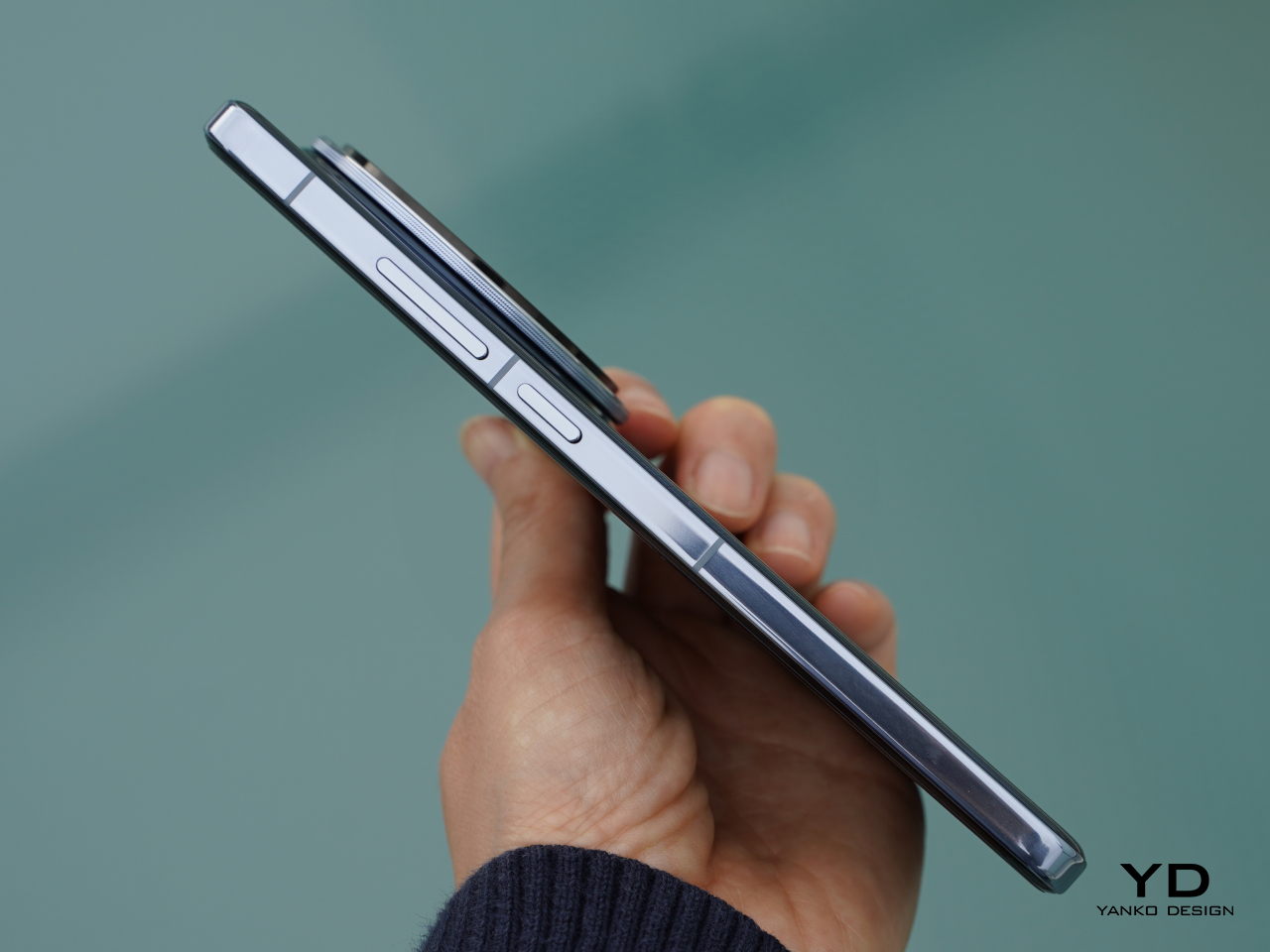
With the large camera island, the Vivo X200 Pro is not a lightweight phone. The Sapphire Blue, Titanium Grey, and Moonlight White variants weigh 228g, whereas the slightly thinner Carbon Black variant weighs 223g. Despite its weight, the flat frame improves grip and usability, enabling larger power and volume buttons that further enhance overall ergonomics.
The quad-curved screen allows for seamless edge swiping, improving navigation. A repositioned ultrasonic fingerprint scanner, placed about 1.6 inches (or 4 cm) from the bottom edge, facilitates a smooth transition from unlocking to usage, exemplifying Vivo’s focus on ergonomic refinement.
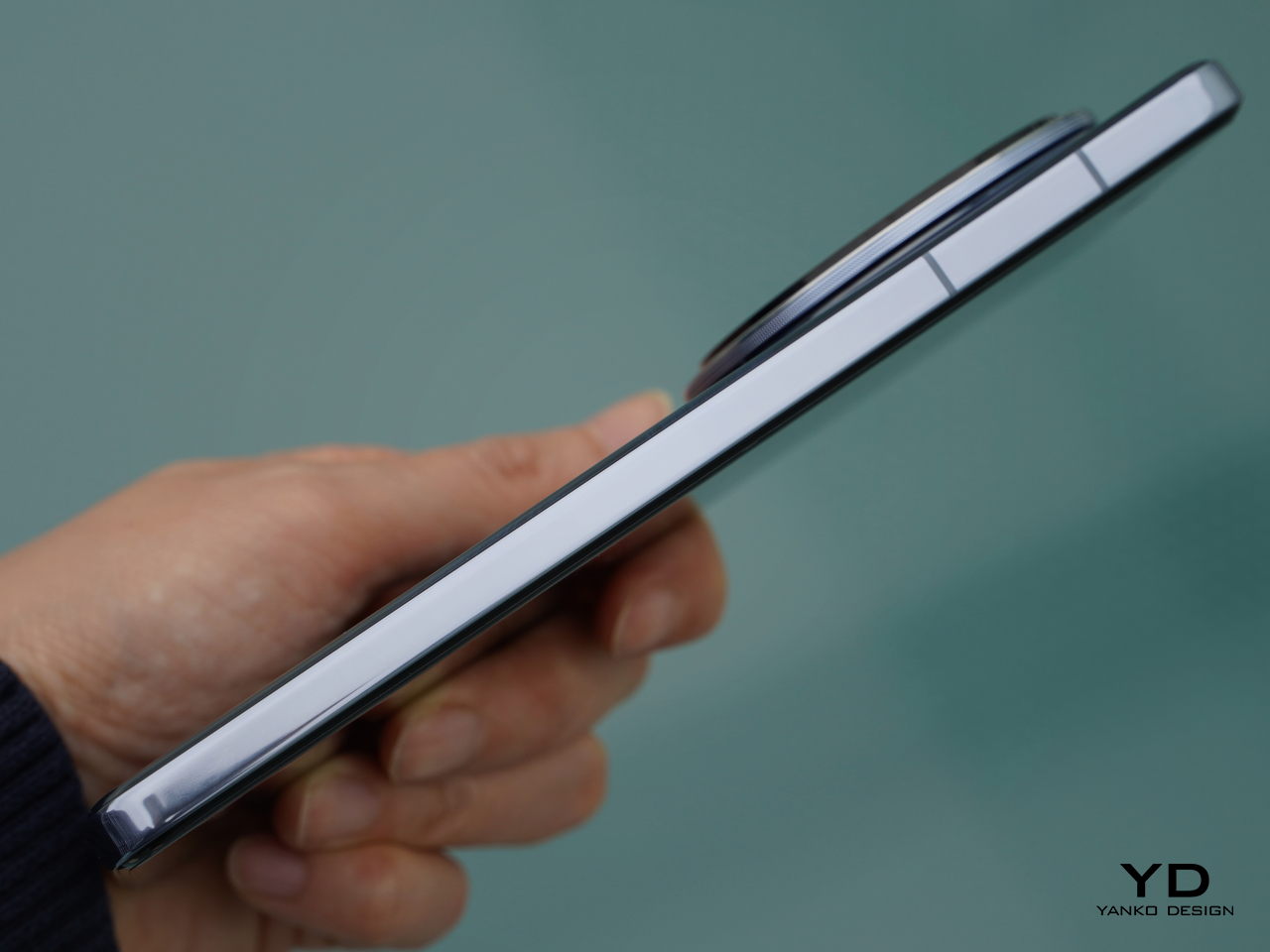
The Vivo X200 Pro features a sophisticated triple-camera system co-developed with Zeiss, utilizing Vivo’s own V3+ imaging chip. The primary camera is a 50MP equipped with the Sony LTY-818 sensor, featuring a 1/1.4-inch sensor size, ZEISS T* coating, an f/1.57 aperture, and Optical Image Stabilization (OIS).



While this sensor, developed in collaboration with Sony, is smaller than its predecessor’s 1-inch version, Vivo claims improvements in power efficiency and HDR performance. Photos captured with the main camera showcase excellent dynamic range, vibrant yet natural color reproduction, and accurate white balance even in low light and challenging lighting conditions.
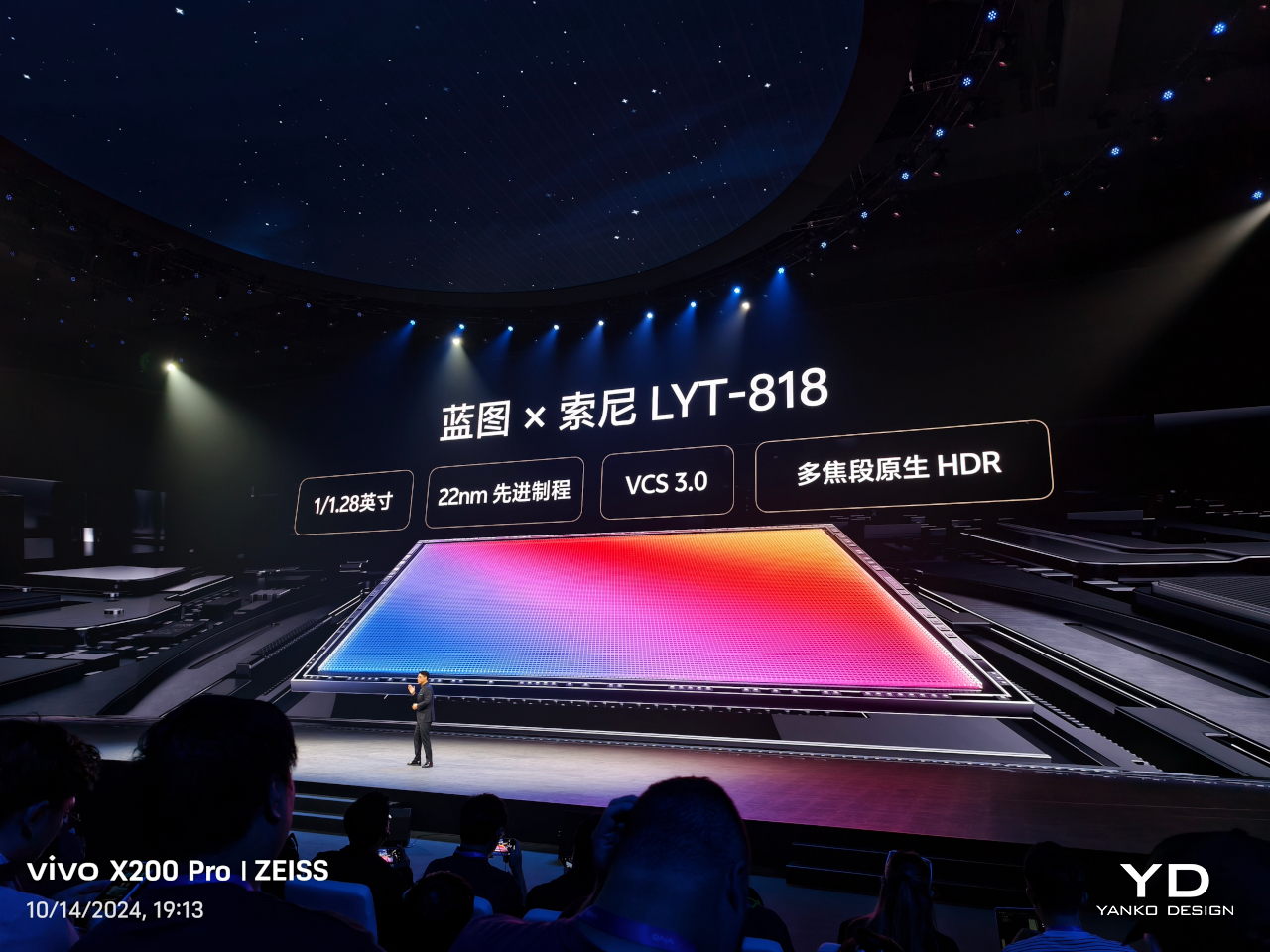
Main, 1x
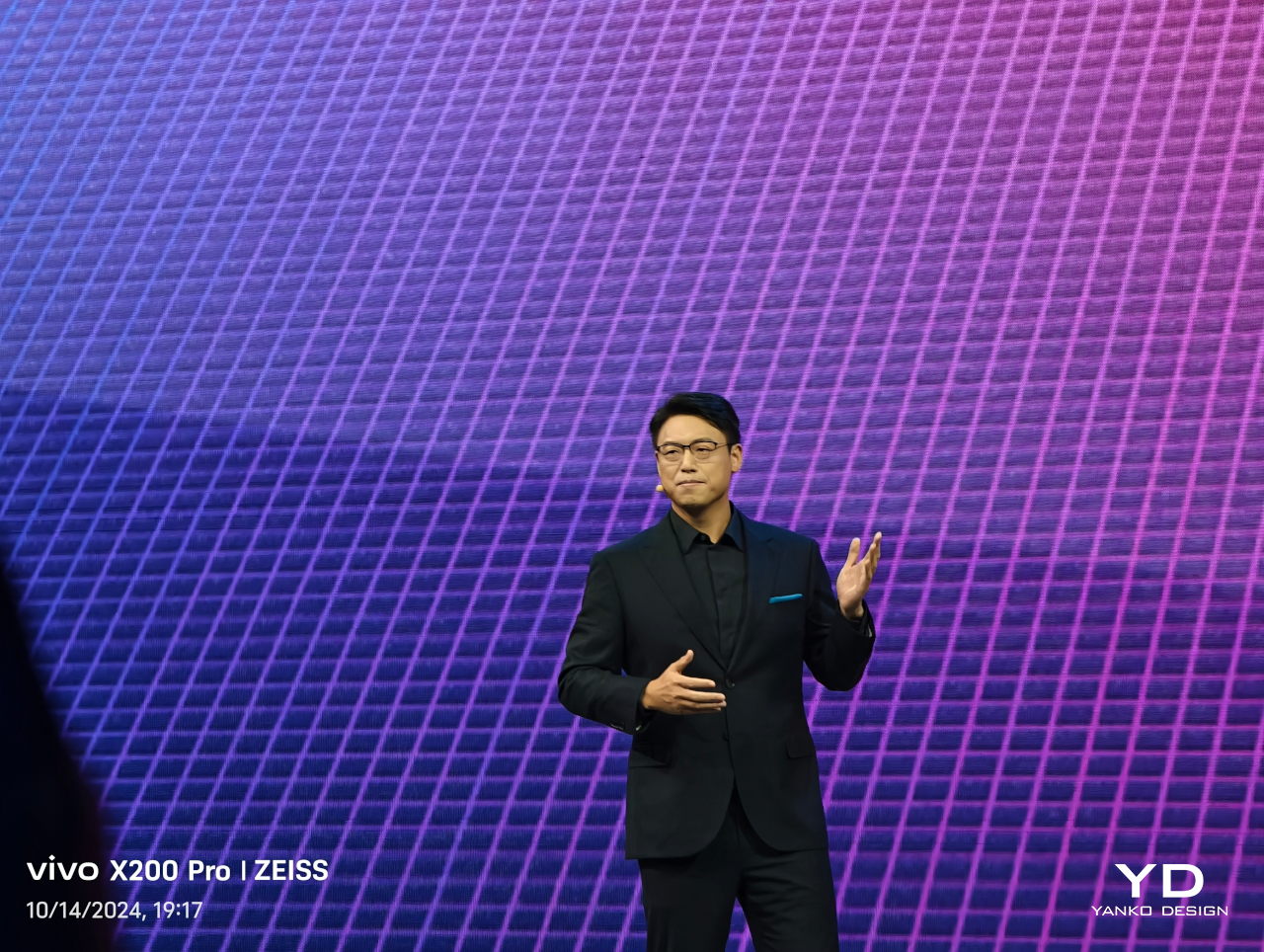
Telephoto, 230mm, 10x

Telephoto, 460mm, 20x
The 200MP ZEISS APO periscope telephoto camera is a standout feature, boasting a 1/1.4-inch sensor, the largest currently available for a periscope camera, f/2.67 aperture, OIS, and ZEISS T* coating. The telephoto offers 3.7x optical zoom and doubles as a macro camera, providing flexibility for various photographic scenarios.

Main, 23mm, 1x

Telephoto, 85mm, 3.7x

Telephoto Macro, 230mm, 10x

Telephoto Macro, 85mm, 3.7x
The photos from the telephoto camera deliver the excellence you would expect from a Vivo flagship: rich color, excellent dynamic range, and great depth. However, computational sharpening becomes pronounced beyond 10x zoom. On the other hand, thanks to the short focal distance of telephoto macro mode, you can capture impressive macro photos without needing to get close to the subject.
The portrait mode at all focal lengths – 23mm, 35mm, 85mm, and newly added 135mm- takes stunning photos in most scenarios. The telephoto portrait camera exhibits a big improvement in sharpness and detail compared to the X100 Pro.

Telephoto, Portrait, 135mm

Telephoto, Portrait, 85mm

Telephoto, Portrait, 135mm (Night)
The ultra-wide 50MP camera, equipped with a 1/2.76-inch sensor and f/2.0 aperture, completes the system. The 15mm focal length ultra-wide camera has a somewhat narrower field of view. Because the field-of-view is not very wide, I imagine people would just use the main camera unless the ultra-wide is absolutely necessary.
Photos taken with the ultra-wide lens are decent but occasionally appear overly vibrant, leading to a slightly unnatural look in some conditions. This characteristic might appeal to users who prefer vivid images, but others may find it less desirable.
Despite its strengths, some users may notice significant lens flare when photographing under bright sunlight. This is not unique to the Vivo X200 Pro, as lens flare is a common issue across many cameras, including professional ones. However, it is notably pronounced in certain conditions with this device. Vivo may address this in future software updates.


The Vivo X200 Pro can record 4K 120fps on the main and telephoto cameras, while the ultra-wide and front-facing cameras can shoot up to 4K 60fps. The main camera can also record 8K 30fps but is limited to either 1x or 2x. The phone supports 4K 60fps 10-bit Log video recording. The video footage is well-stabilized and offers great dynamic range, even in low-light conditions.
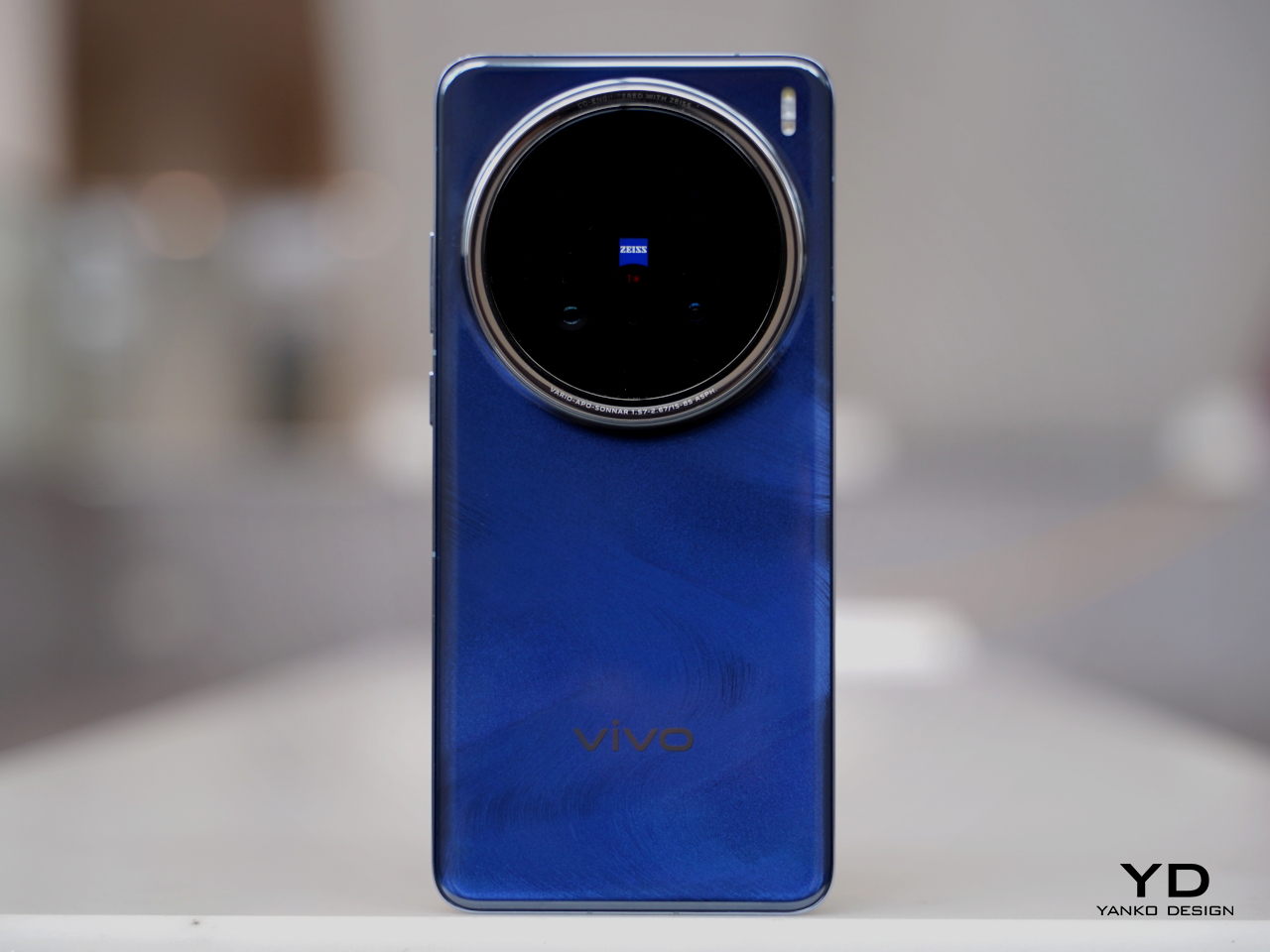
While the Vivo X200 Pro excels in mobile imaging, the camera user interface is not very intuitive and could use refinement. For instance, the photo mode carousel lets you choose between Landscape mode, Portrait mode, Photo, Video, Portrait Video, and Pro mode, but accessing the humanistic street snap camera mode requires swiping up from Photo mode. Additionally, the feature to adjust video playback speed in 1/10x increments is appreciated, yet it is somewhat hidden within the “Trim” section of the video editing UI, which could be more accessible.
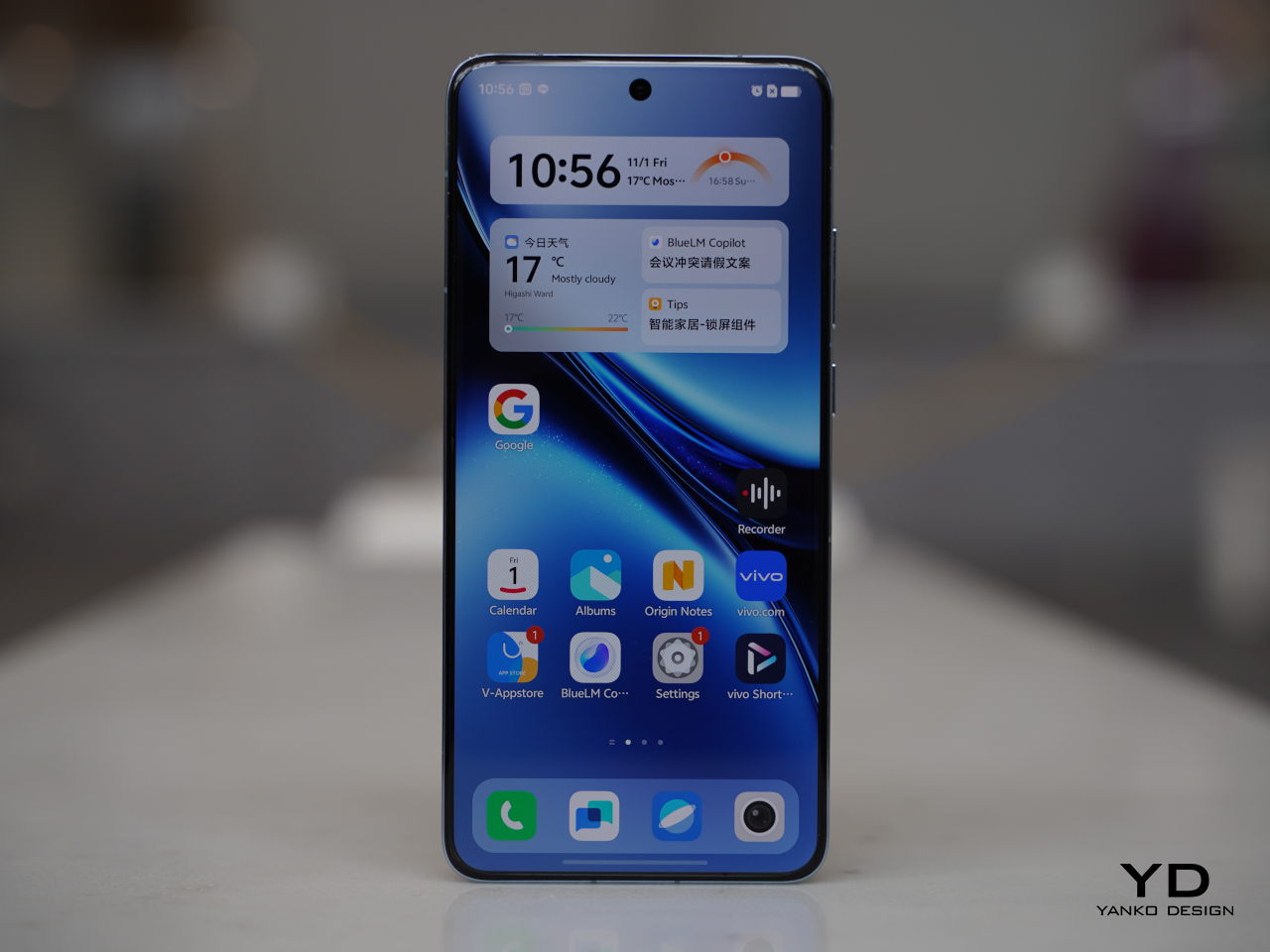
Vivo’s commitment to imaging goes beyond its camera system and extends to the display as well. The Vivo X200 Pro boasts a 6.78-inch AMOLED display that supports LTPO (0.1 to 120Hz). With a resolution of 2800 x 1260, a peak brightness of 4,500 nits, and a pixel density of 452 ppi, the display delivers exceptional clarity and vibrant colors in all lighting conditions. The display’s 2,160Hz PWM dimming feature aims to reduce eye strain, while the quad-curved design enhances aesthetics and ergonomics.
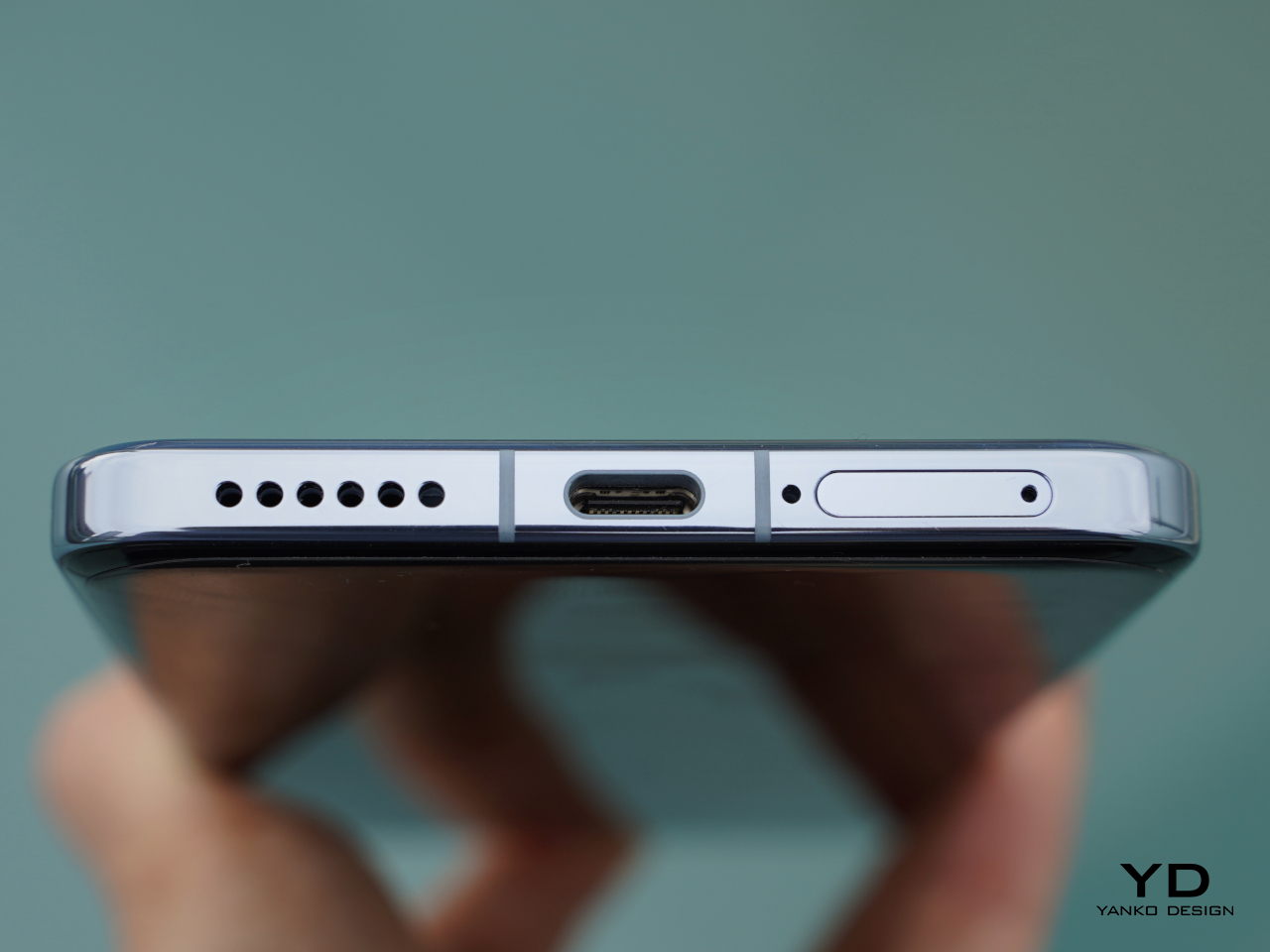
A 6,000mAh battery powers the device, providing ample energy for extended usage. The phone supports 90W wired charging for rapid power replenishment, as well as 30W wireless charging for added convenience. These features ensure that the device remains ready for prolonged use.
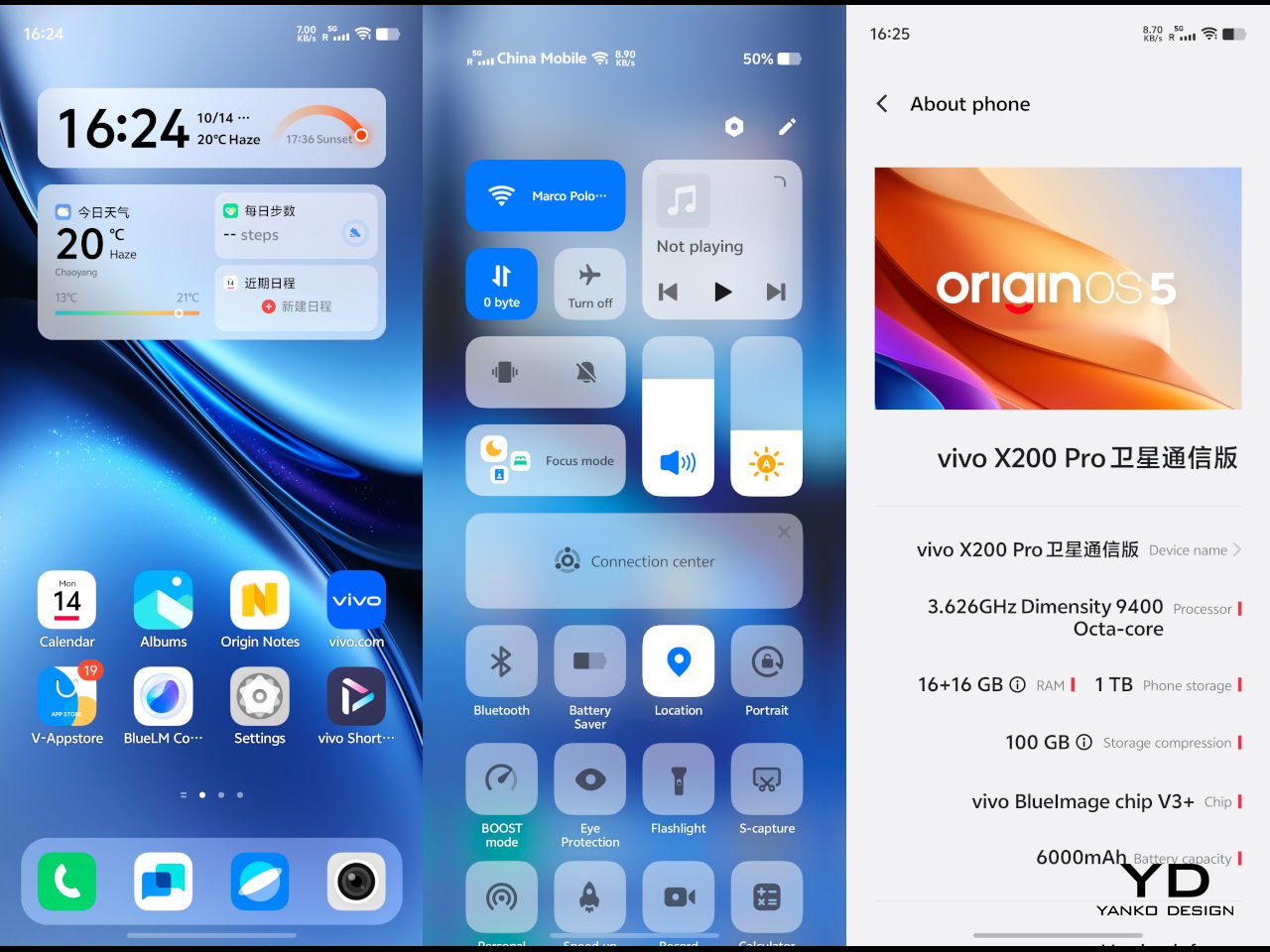
The device features MediaTek’s newest 3nm chip, the Dimensity 9400, coupled with LPDDR5X RAM of up to 16GB and UFS4.0 storage of up to 1TB. The Chinese version of the Vivo X200 Pro comes with OriginOS 5 and Android 15 right out of the box. This is particularly impressive, as the Pixel 9 series had not yet received the Android 15 update at the time of the X200 Pro’s release.
The Vivo X200 Pro incorporates features aimed at enhancing durability and longevity, reflecting a partial commitment to sustainability. An IP68 rating offers significant resistance to dust and water, helping to protect its internal components. The durable glass has an improved drop resistance, according to Vivo, potentially reducing the need for frequent repairs or replacements due to accidental damage.
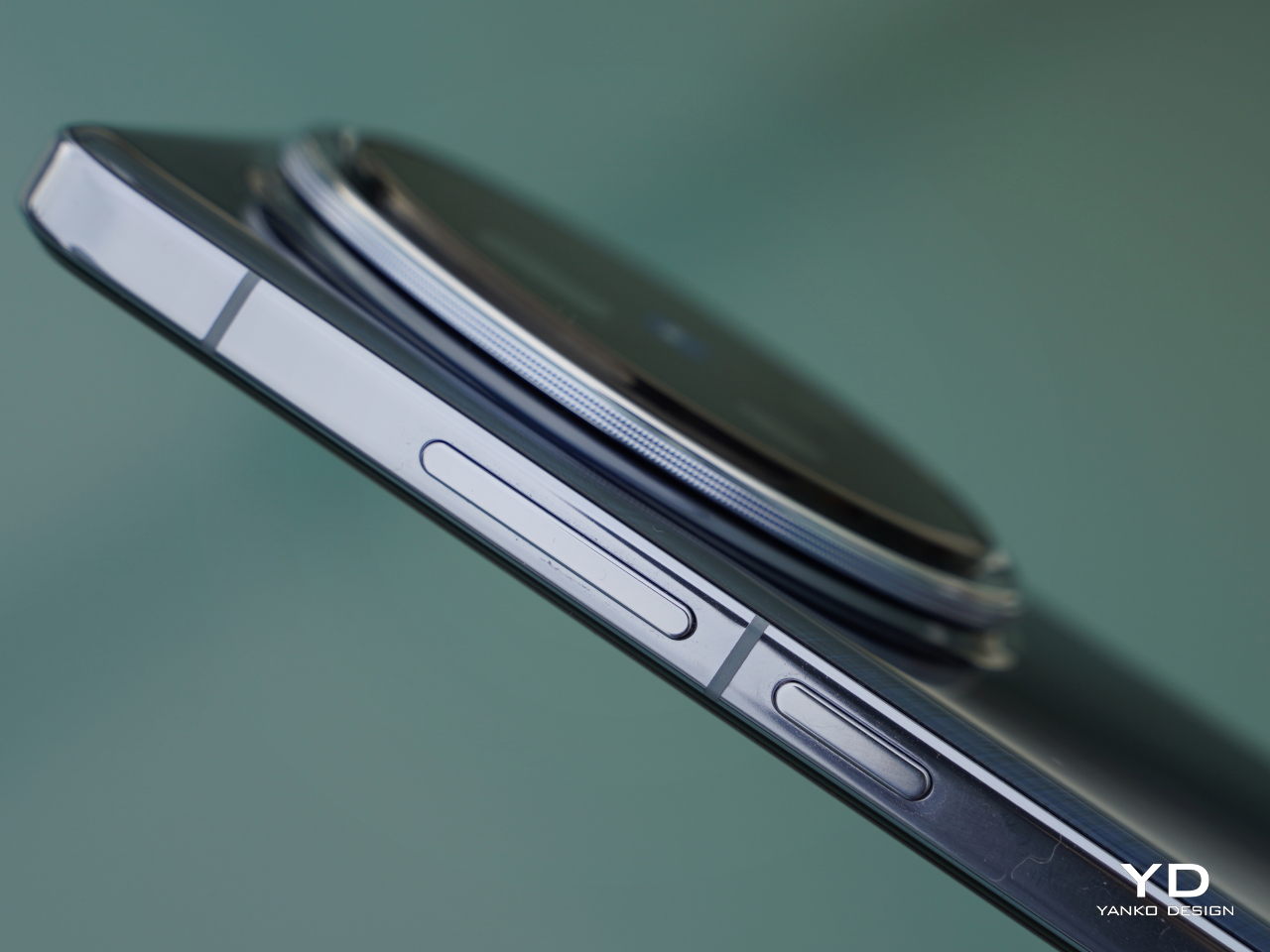
While these features contribute to the device’s durability, there is room for improvement in overall sustainability. Vivo could consider using recycled materials in the device’s construction to better align with environmentally friendly practices. Overall, while the Vivo X200 Pro demonstrates some commitment to durability, enhancing sustainability efforts could provide additional value to eco-conscious consumers.
The Vivo X200 Pro is positioned as a flagship device, offering a range of advanced features and robust performance. In terms of pricing, the Chinese version of the Vivo X200 Pro starts at 4,299 yuan (approximately $590 USD) for the 12GB+256GB configuration and goes up to 5,499 yuan (approximately $770 USD) for the 16GB+1TB configuration. This pricing places the device competitively within the flagship smartphone market, providing a compelling blend of cutting-edge technology and features at a relatively accessible price point.
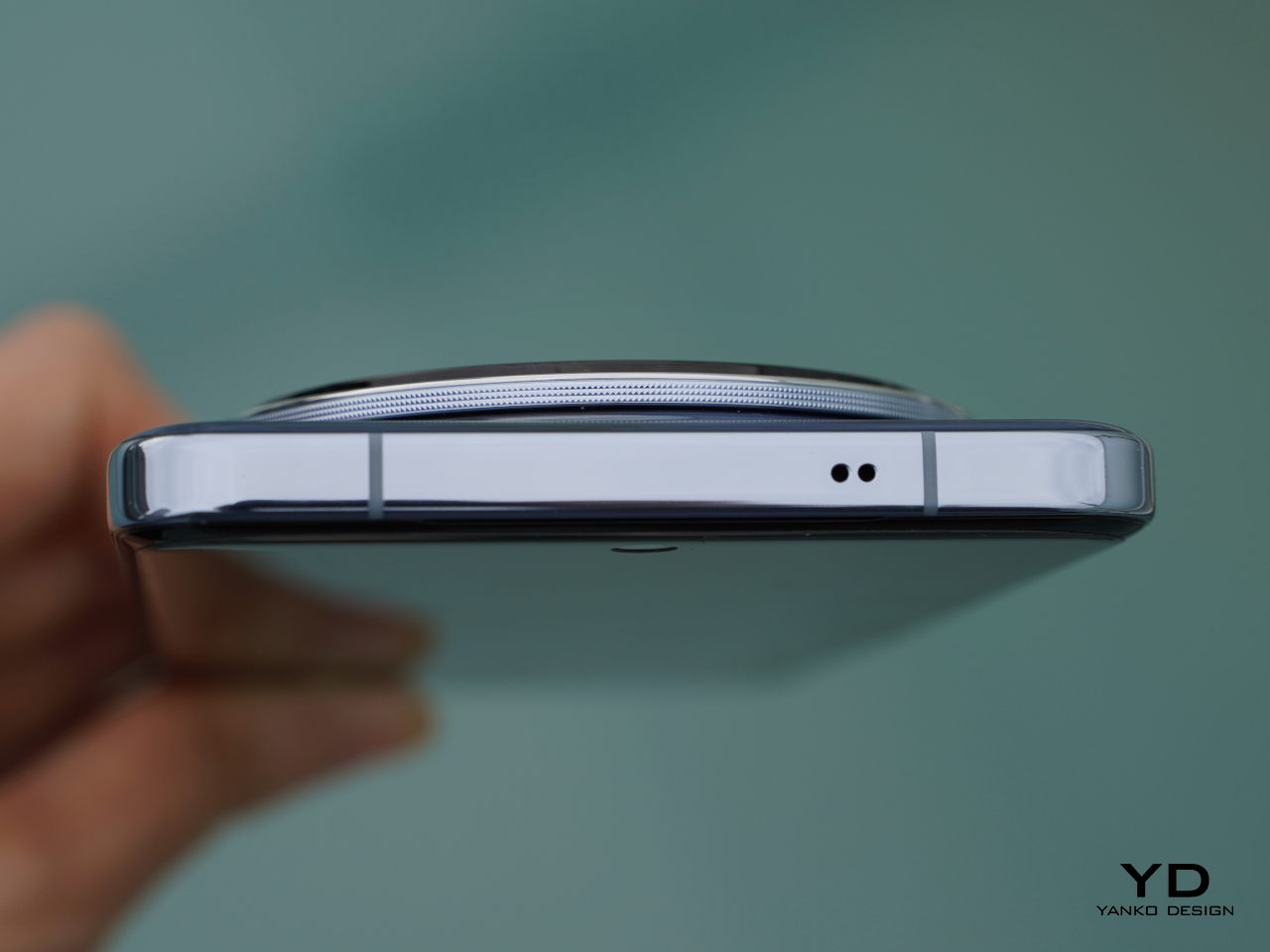
Of course, we have to wait to see if Vivo maintains this competitive pricing for markets outside of China. Although the Vivo X200 Pro may not seem like a huge leap from the X100 Pro in terms of camera performance, for users looking to extend their telephoto reach, the Vivo X200 Pro’s advanced zoom capabilities make it an attractive upgrade.
The Vivo X200 Pro is a standout in the flagship smartphone market, thanks to its advanced camera system co-developed with Zeiss. With versatile focal lengths, including a new 135mm option for portrait mode, and telephoto macro capabilities, it caters to mobile photography enthusiasts seeking creativity and flexibility in capturing stunning images. The vibrant 6.78-inch LTPO AMOLED display, a large and powerful battery, and the latest MediaTek Dimensity 9400 enhance the user experience for extended usage.
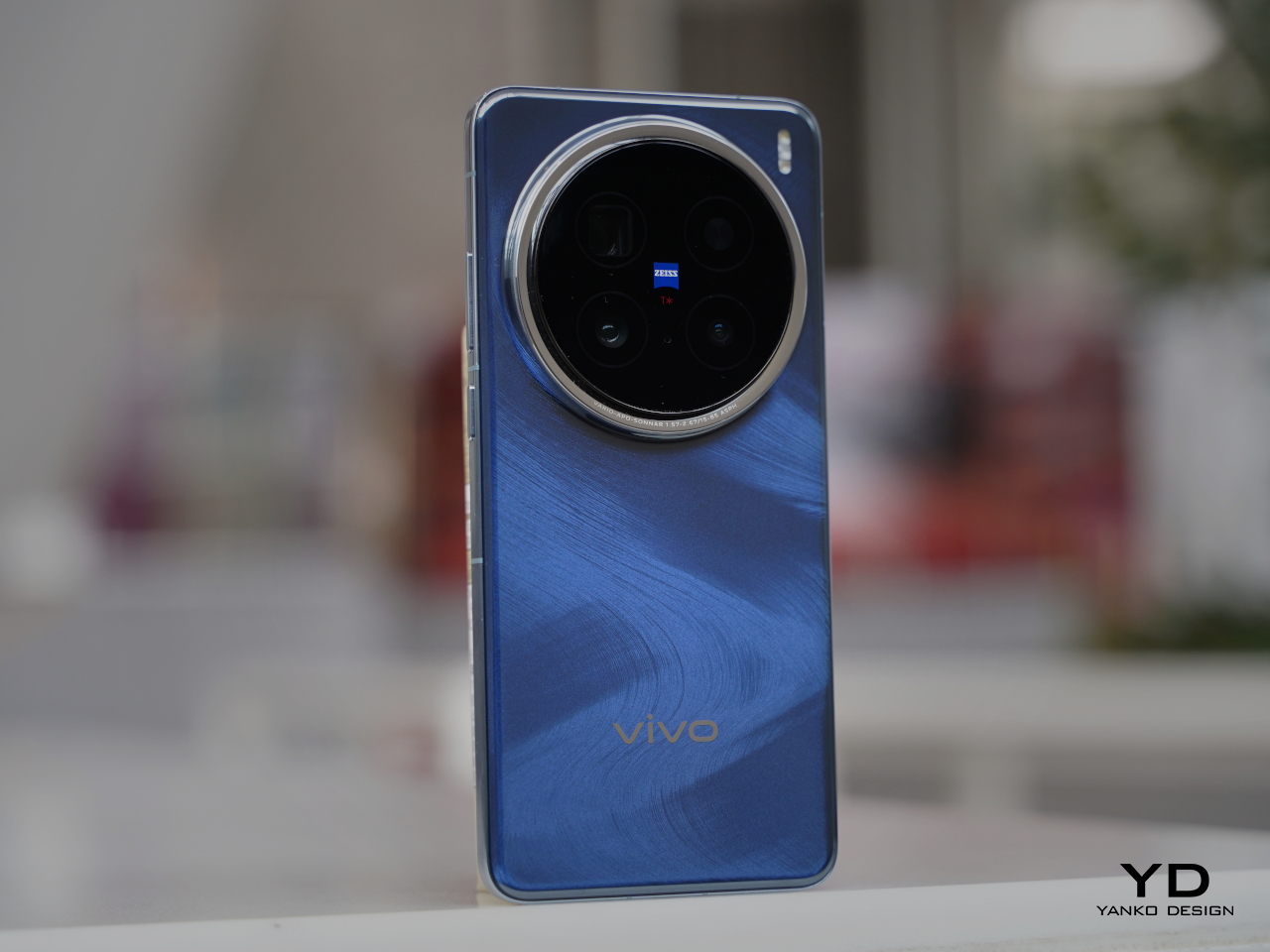
Competitively priced, the Vivo X200 Pro offers significant value for those prioritizing advanced photography and video features. Minor UI and ergonomic improvements could further solidify its position as a leader in mobile technology. Overall, the X200 Pro is an excellent choice for users seeking a high-performance smartphone with exceptional camera capabilities.
The post Vivo X200 Pro Review: A Flagship Reaching Further in Mobile Photography first appeared on Yanko Design.
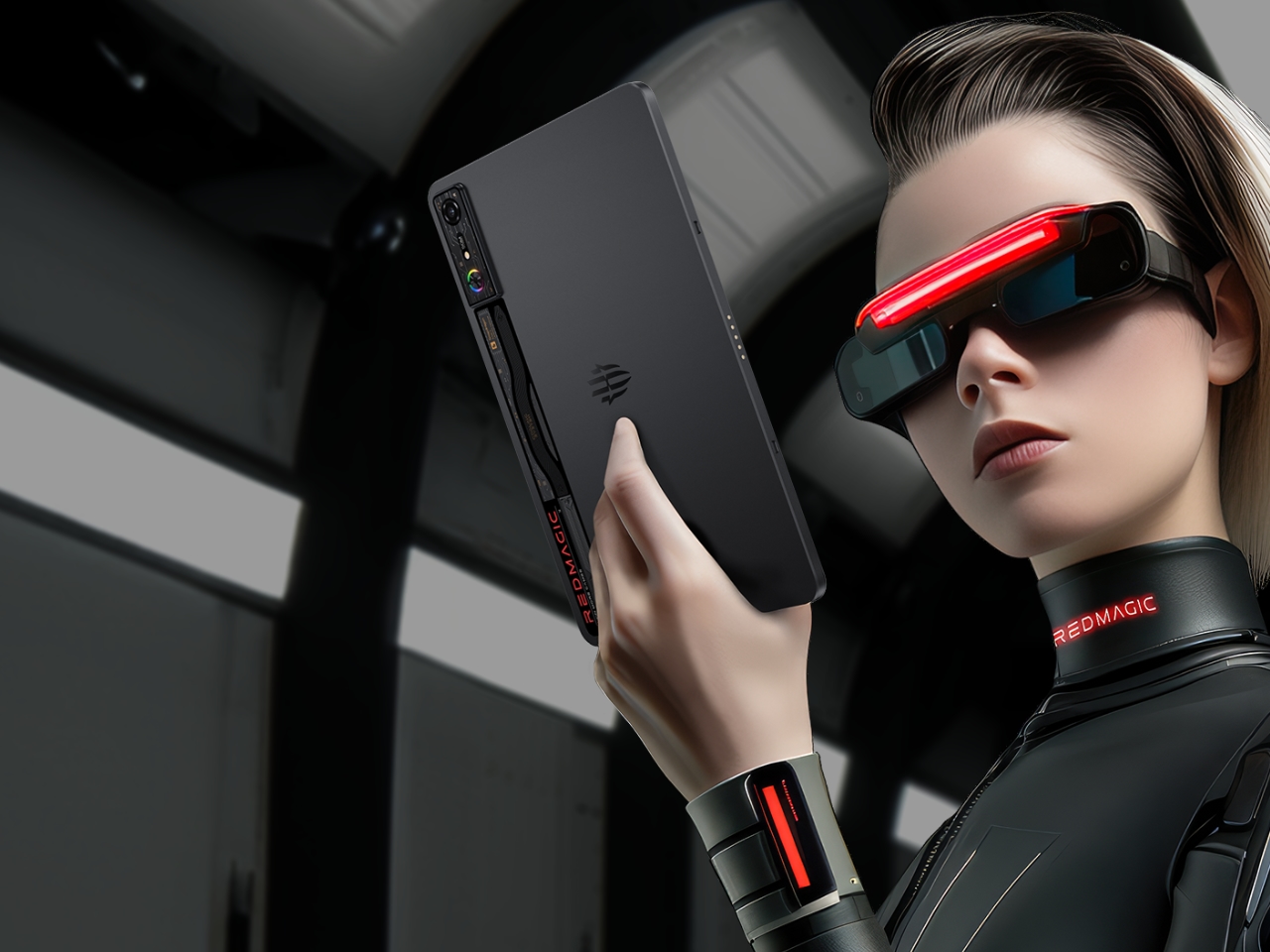
The REDMAGIC Nova Gaming Tablet steps into the market with serious intentions, built for gamers who demand peak performance from their devices. This tablet integrates the latest Snapdragon 8 Gen 3 Leading Edition processor with a sophisticated 9-layer cooling system, positioning it as a top contender for competitive gaming. Designed with both power and aesthetics in mind, the Nova ensures long gaming sessions without sacrificing style or performance.
Designer: REDMAGIC
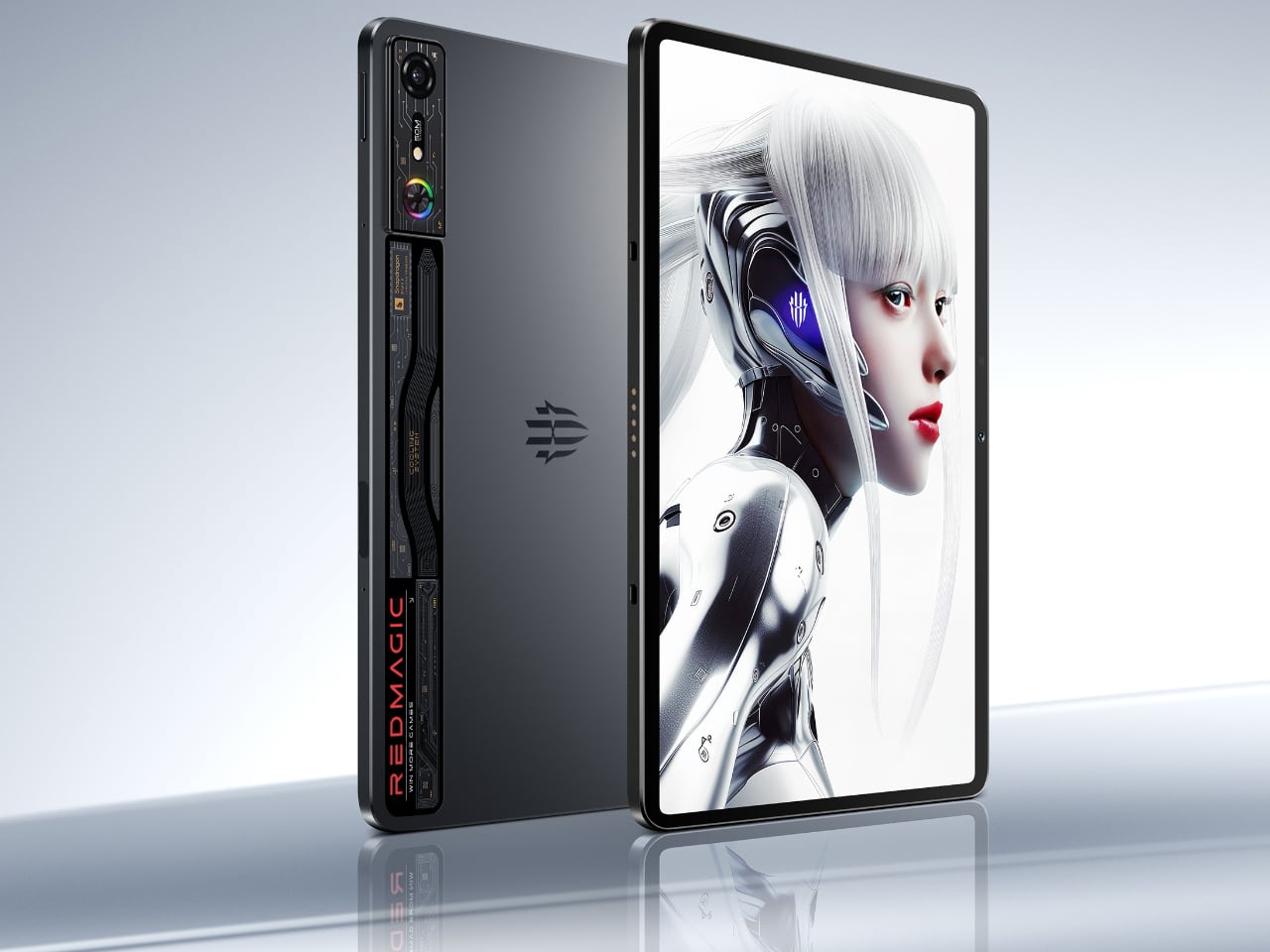
This gaming tablet takes a bold approach to design without overlooking the practicalities gamers need. Weighing just 520 grams, the body is crafted from aviation-grade aluminum, balancing durability with lightweight portability. Its 10.9-inch display offers a 2.8K resolution and a 144Hz refresh rate, delivering fluid, crisp visuals that enhance the immersive gaming experience.
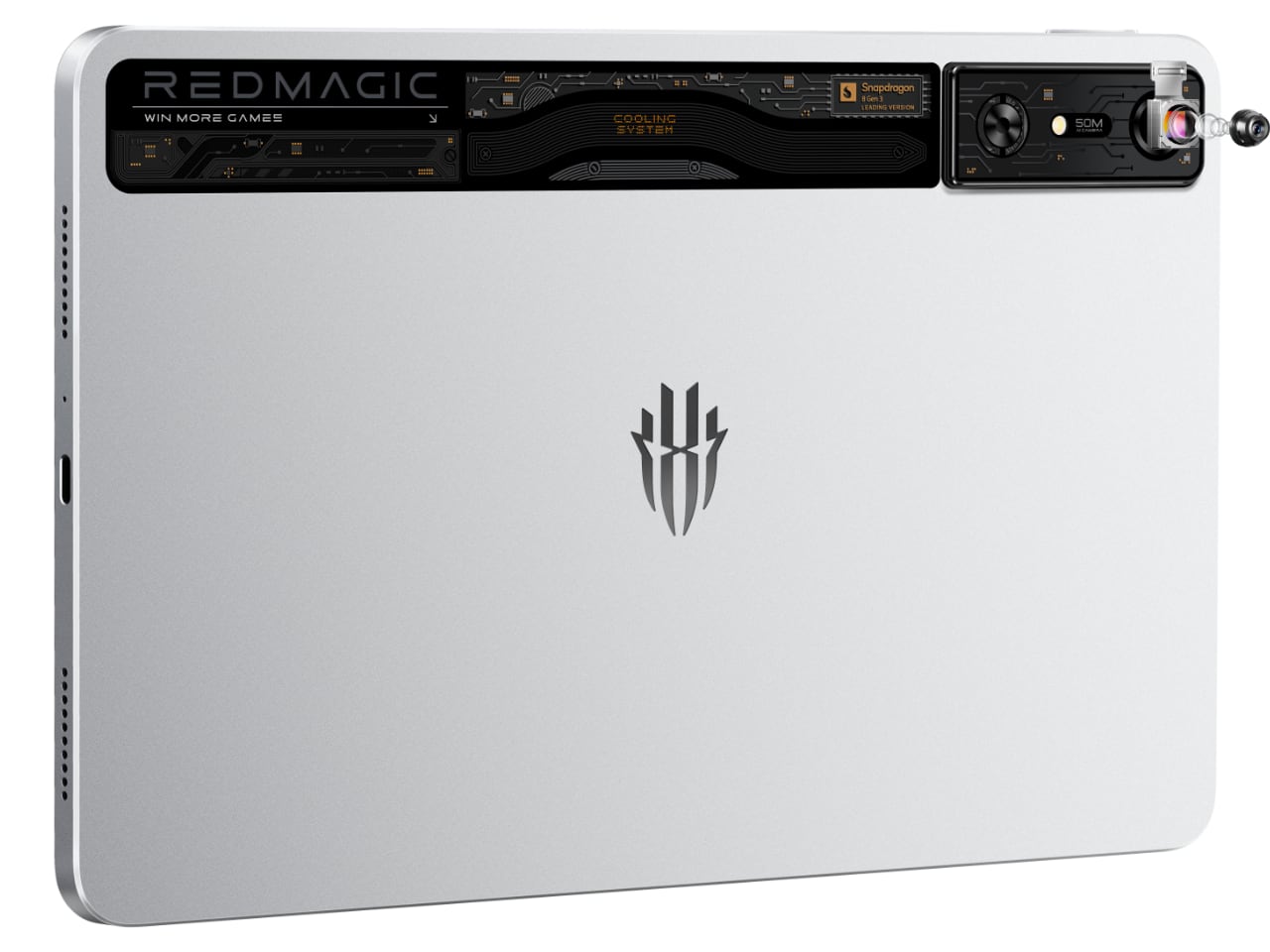
One of the most vivid features is its transparent aluminosilicate glass section, which exposes the tablet’s inner workings, enhanced by customizable RGB lighting. This gives it a distinctive edge, combining a futuristic look with functionality. Whether you’re gaming on the go or in a competitive setting, the Nova is a visually striking device that is durable enough to withstand extended use.
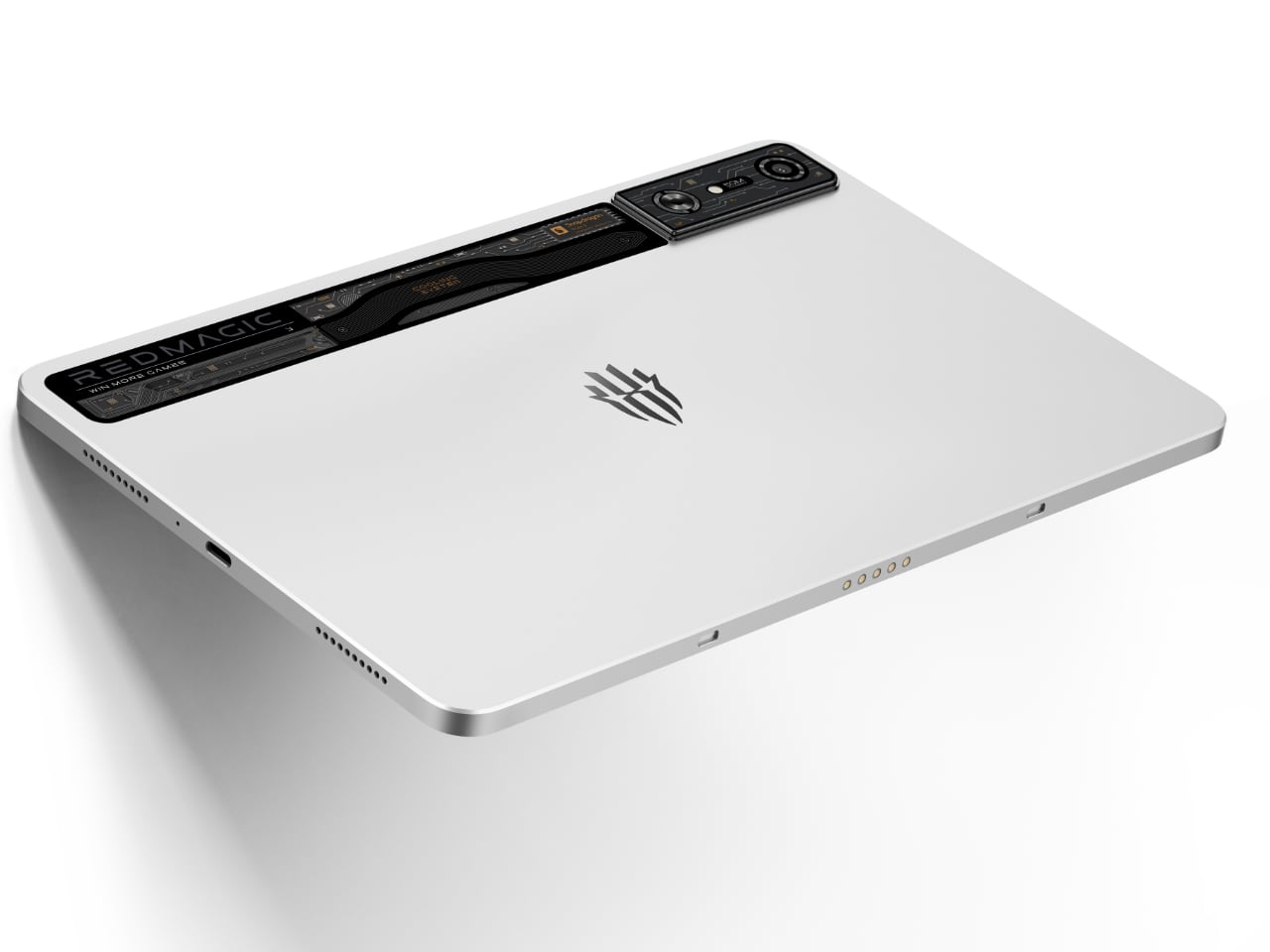
Many gaming tablets struggle with heat during extended sessions, but the Nova offers a solution. Equipped with a 9-layer cooling system and a 20,000 RPM internal fan, this tablet reduces core temperatures by up to 25°C. The result is consistently smooth performance, even when playing graphically demanding games for hours at a time.
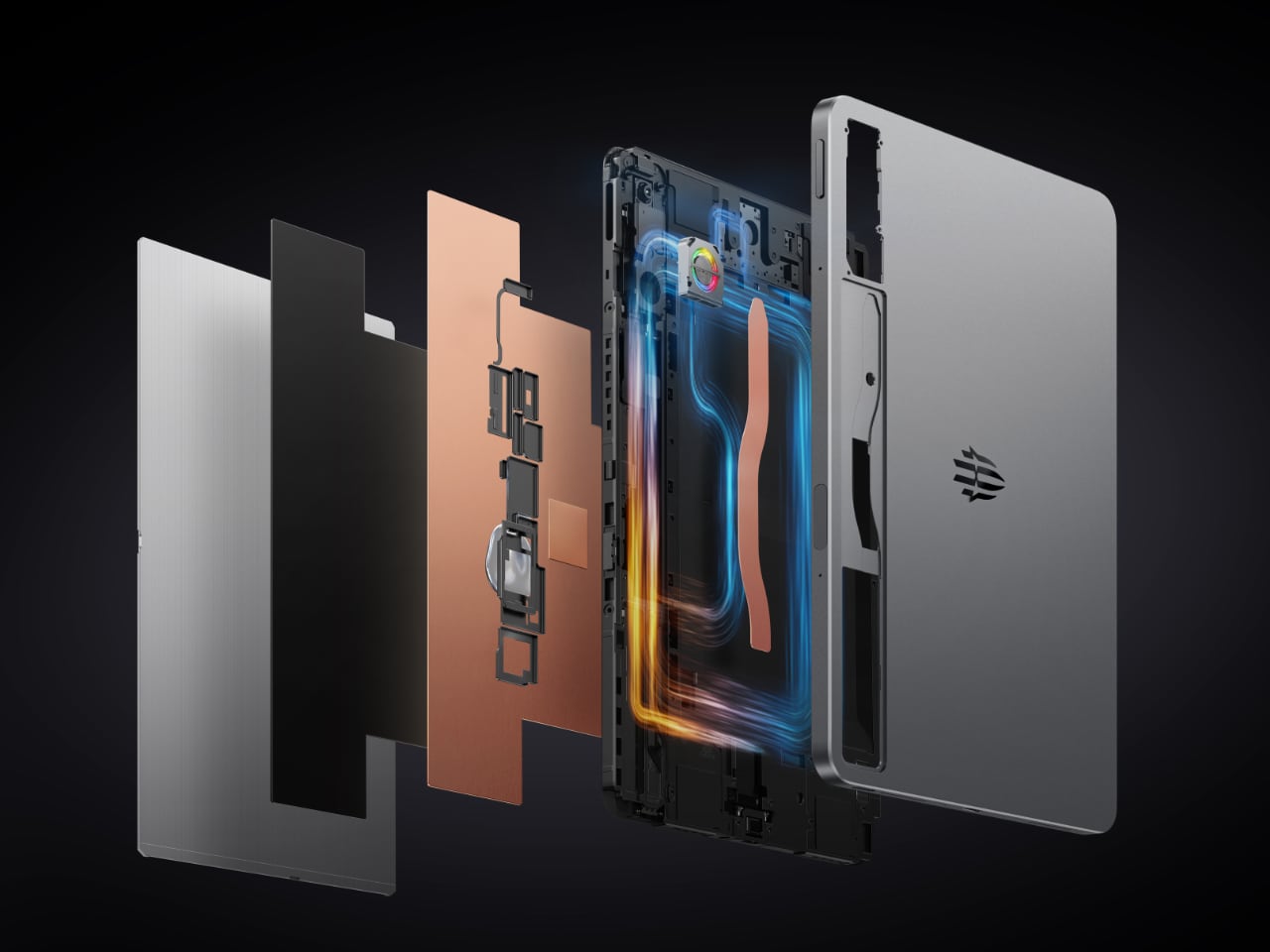
Heat management isn’t just about keeping the tablet comfortable to hold—it directly affects in-game performance. The 3D heat pipe and internal circulation system keep the device cool under pressure, maintaining frame rates and responsiveness. Gamers no longer need to worry about overheating or lag during crucial moments in games like Genshin Impact or Fortnite.
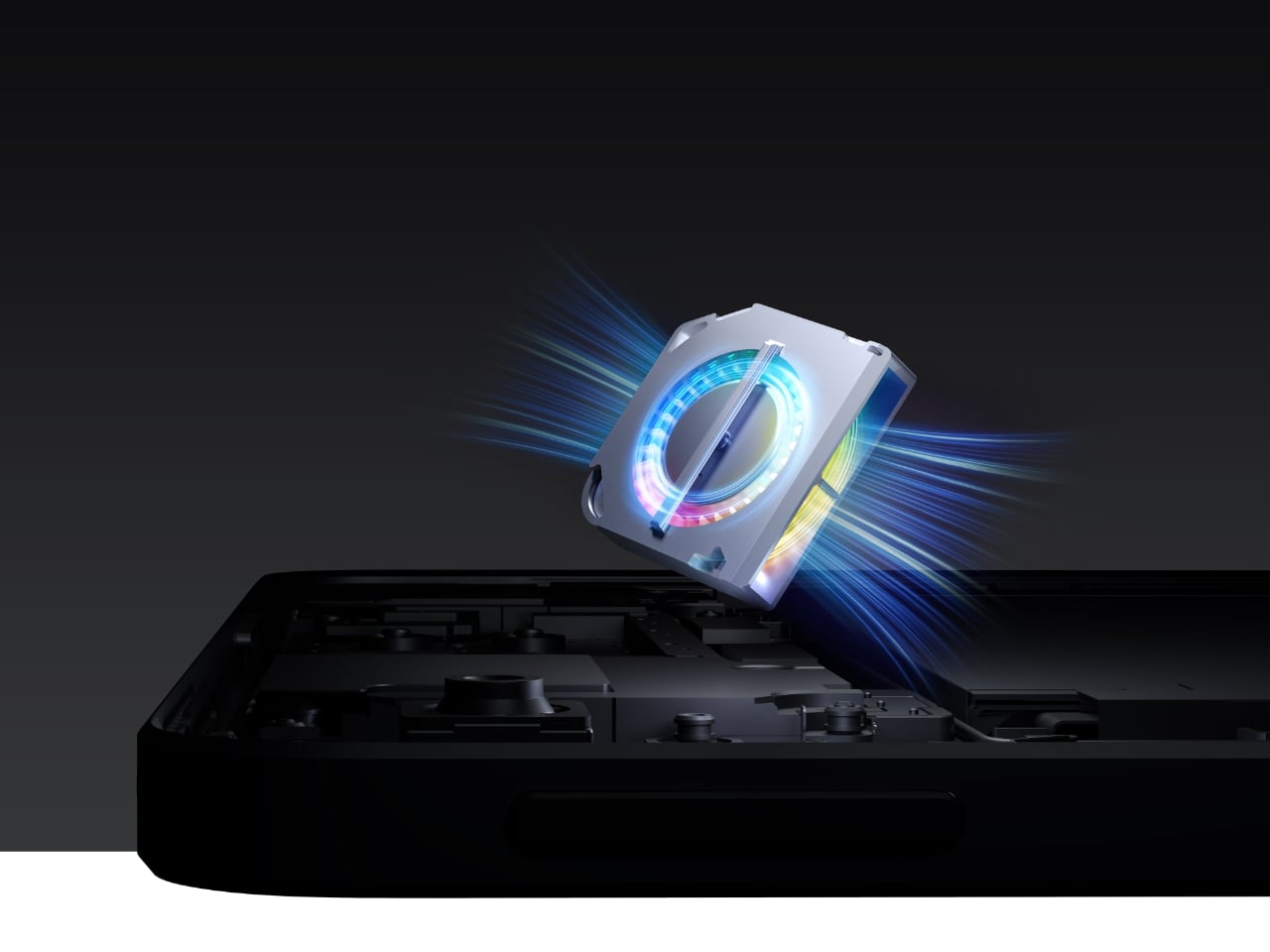
At the heart of the Nova is the Snapdragon 8 Gen 3 Leading Edition processor, pushing CPU speeds up to 3.4 GHz and GPU frequencies of 1 GHz. This setup easily handles AAA games, ensuring that even the most demanding titles run smoothly without lag or performance drops. The Nova also excels in multitasking, making it a strong choice for gamers who stream their gameplay or run multiple apps while playing.
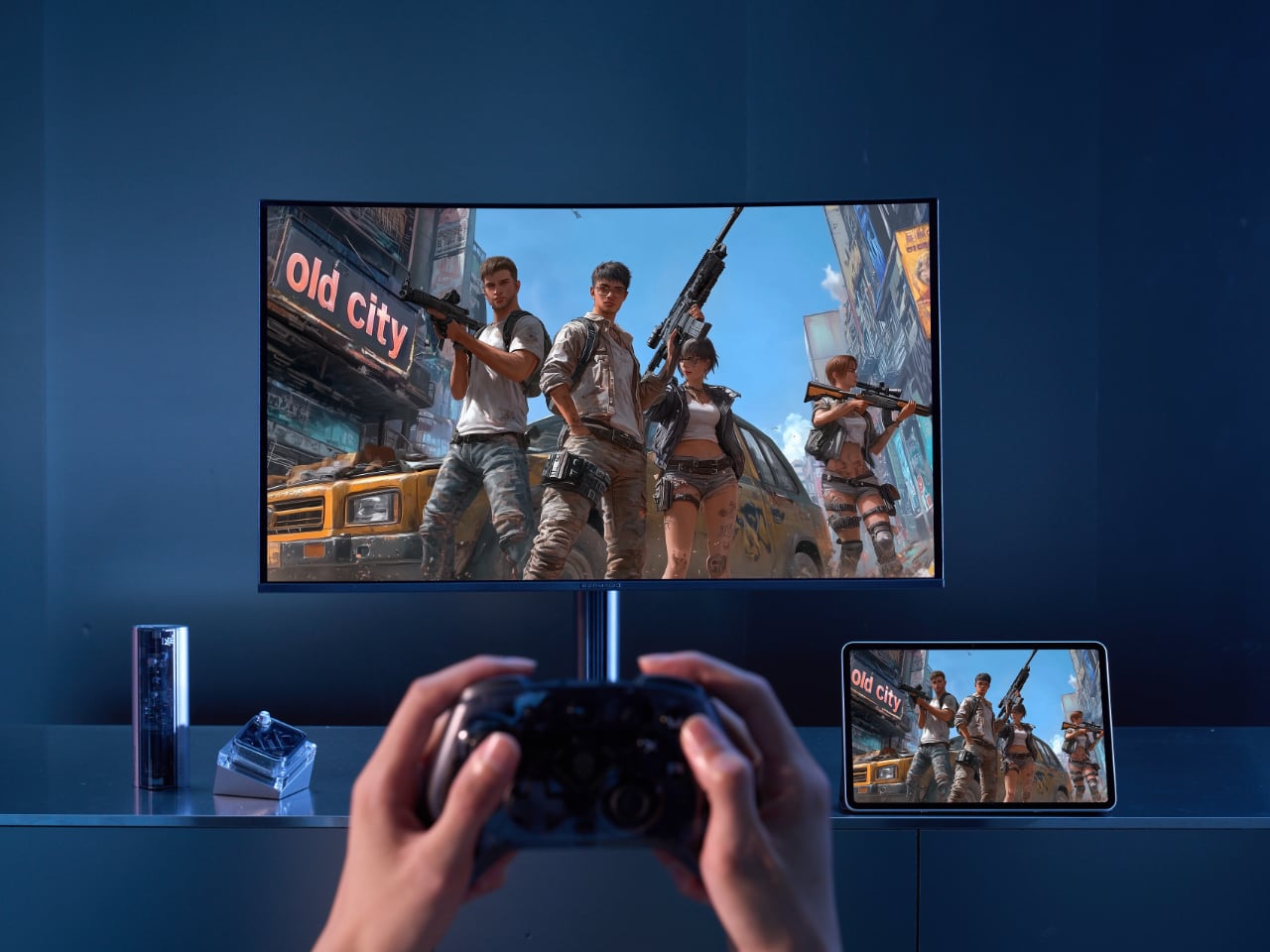
With an AnTuTu score of 2,352,902, the Nova showcases the processing power that gives competitive gamers an edge. Whether navigating fast-paced combat in Valorant or exploring open-world environments in Elden Ring, the tablet delivers a responsive, immersive experience every time. For gamers who need reliable, high-powered performance, the Nova’s specifications speak for themselves.
Gaming devices often fall short when it comes to battery life, but the Nova addresses this head-on with a 10,100mAh battery that allows for up to 10 hours of continuous gameplay. For those who use their device beyond gaming, it supports up to 19 hours of regular use, making it versatile enough for work or entertainment between gaming sessions.
The 80W fast charging feature ensures minimal downtime. After just a short break, you’re ready to dive back into gameplay, a crucial advantage for gamers in the middle of competitive matches or immersive campaigns. The extended battery life and rapid charging mean the Nova will keep up with the most demanding schedules.
One of the key features that makes the REDMAGIC Nova ideal for gamers is its 144Hz refresh rate and 840Hz touch sampling rate. This ensures every input is registered instantly, providing a competitive advantage in fast-paced games. Whether sniping in PUBG Mobile or racing through turns in Asphalt 9, the display’s responsiveness is designed to give you the precision and accuracy needed for high-stakes gameplay.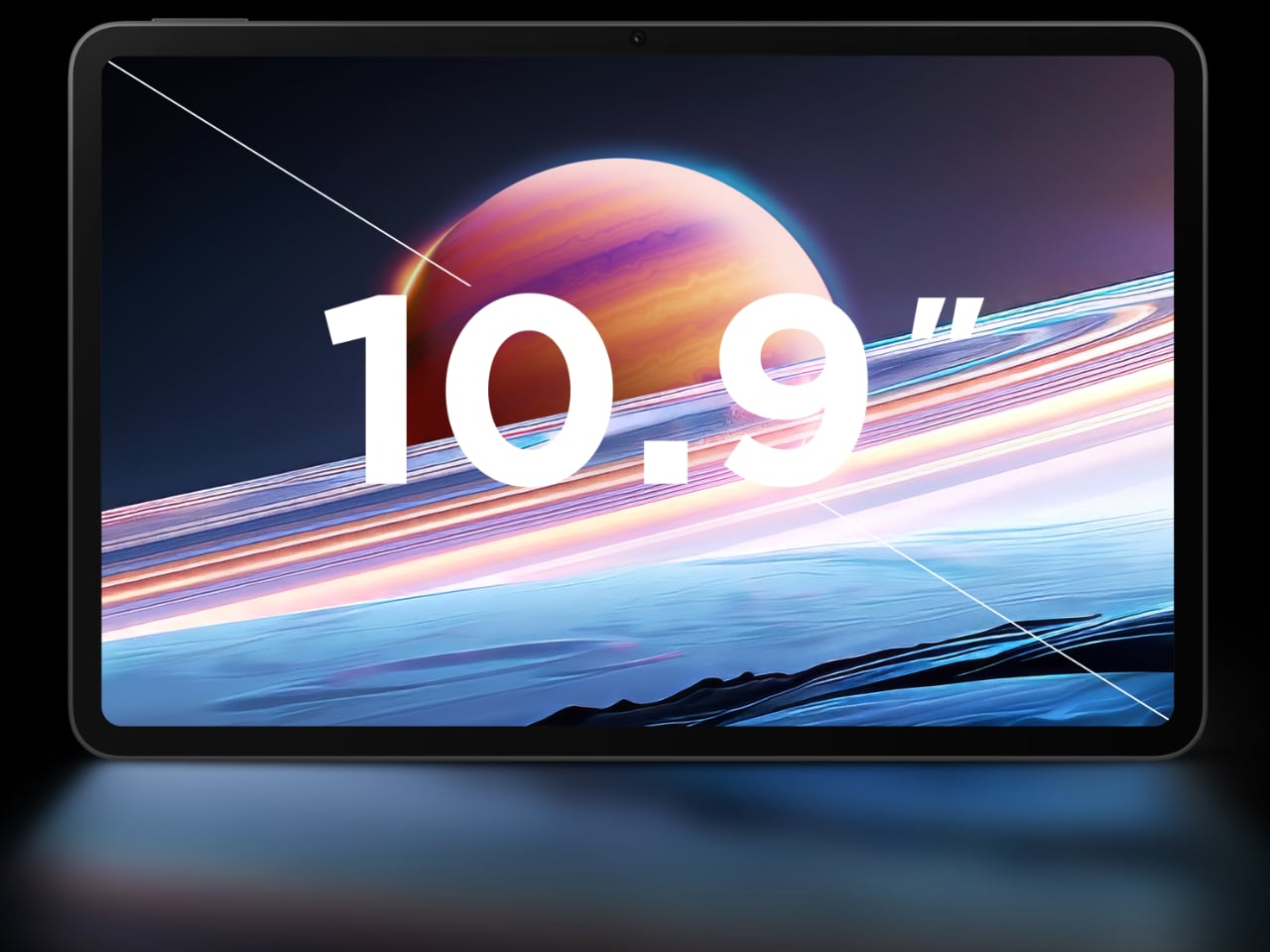
In addition to its responsiveness, the SGS-certified blue light filter reduces eye strain, making it easier to play for extended periods. This attention to comfort, alongside its visual performance, makes the Nova a gaming powerhouse that’s easy on the eyes.
The Nova doesn’t stop at visuals and performance—it brings audio into the equation with four symmetrical speakers and DTS Ultra certification for a 3D sound experience. This feature creates an audio environment where gamers can hear every subtle detail, from enemy footsteps in Call of Duty: Mobile to atmospheric sounds in The Witcher: Monster Slayer.

Clear communication is vital in team-based games. The three built-in microphones ensure that voice chats with teammates remain crisp and clear, allowing for better coordination in multiplayer sessions. For gamers focused on immersive sound and effective teamplay, the Nova offers the tools to enhance every part of the experience.
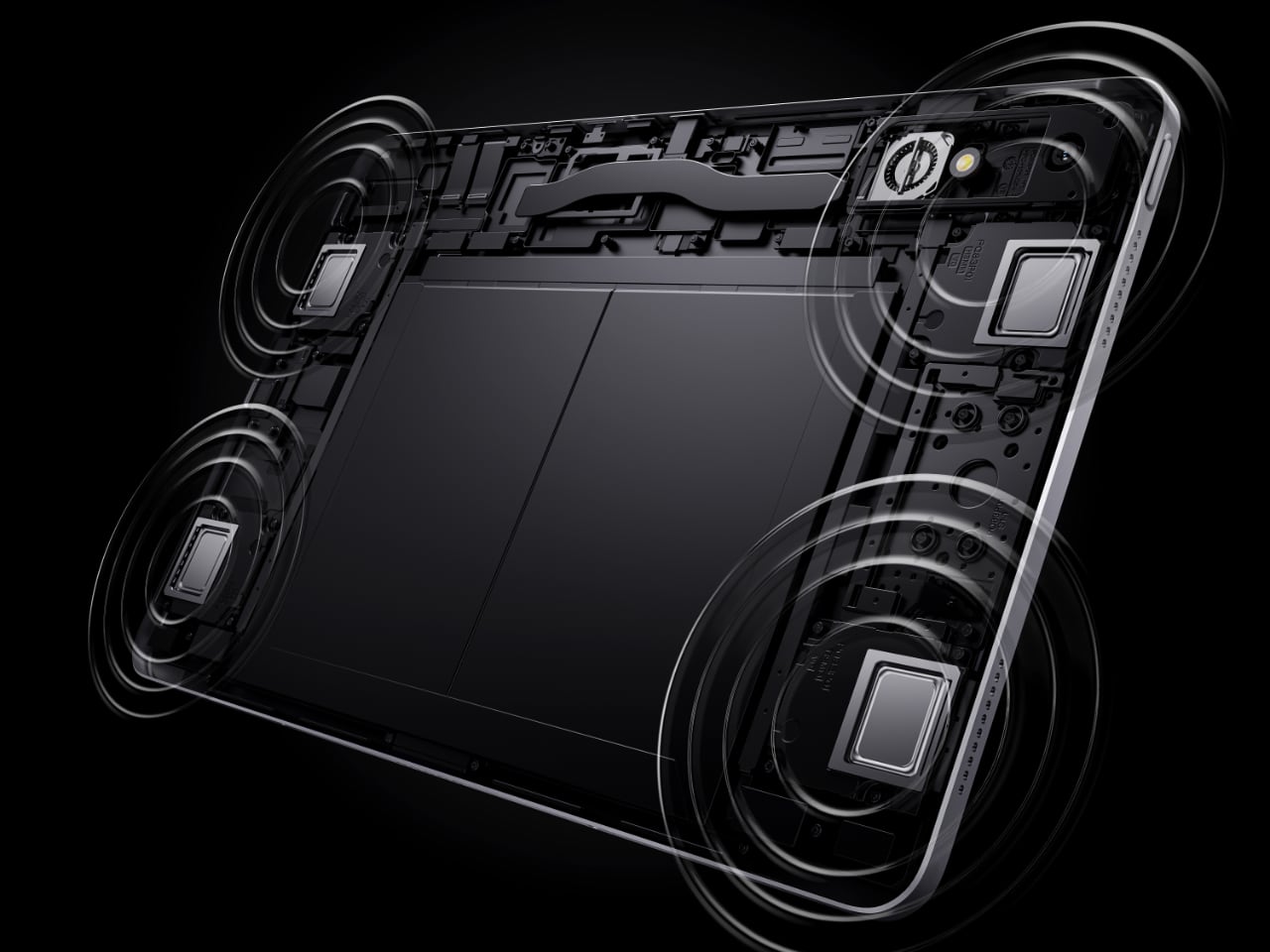
The REDMAGIC Nova Gaming Tablet doesn’t just meet the demands of everyday use—it’s built to excel in competitive and immersive gaming scenarios. With its powerful processor, next-level cooling system, and immersive audio and visuals, the Nova is a true companion for gamers who need reliability, performance, and portability.
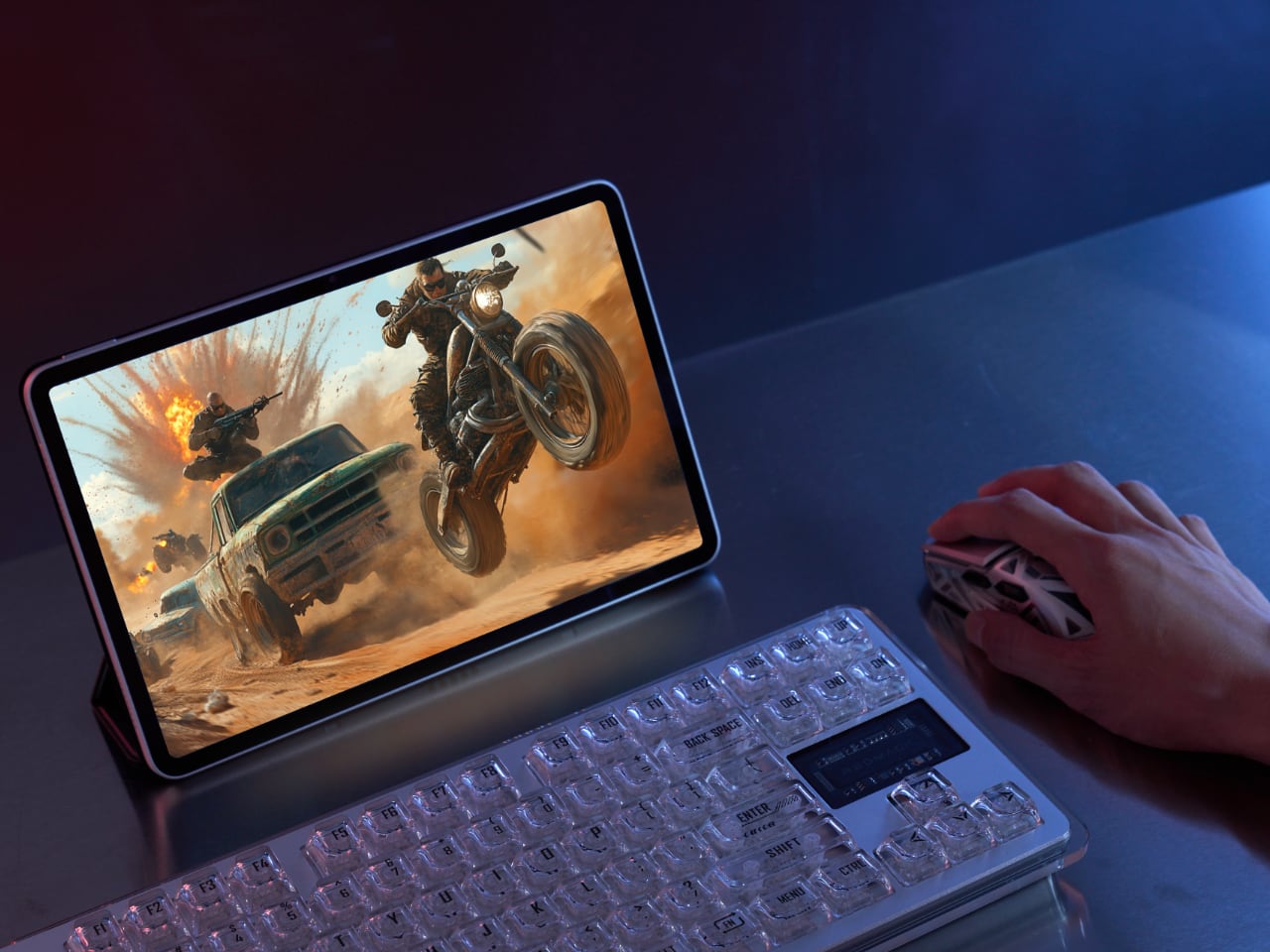
From marathon gaming sessions to live-streaming, the Nova supports the needs of serious players. Whether pushing the limits in AAA titles or managing multiple apps simultaneously, the Nova keeps you in control. For gamers seeking a high-performance, well-designed device that delivers on all fronts, the REDMAGIC Nova is hard to beat.
The post 5 Reasons Why the REDMAGIC Nova is the Ultimate Gaming Tablet first appeared on Yanko Design.
I can still remember the time when Samsung was all but ridiculed for launching the 12.2-inch Galaxy Note Pro in 2014, but who would have known that it was just too ahead of its time? Fast forward a decade later, even Apple has a 13-inch iPad Pro, and unsurprisingly, Samsung won’t be outdone. Of course, there might be a limit to what can still be considered a portable tablet, but those lines are being blurred now that “Pro” tablets are being positioned as laptop replacement. And just like many Windows laptops today boast Microsoft Copilot features, Samsung is bringing the full power of its Galaxy AI to its largest mobile screens.
Designer: Samsung

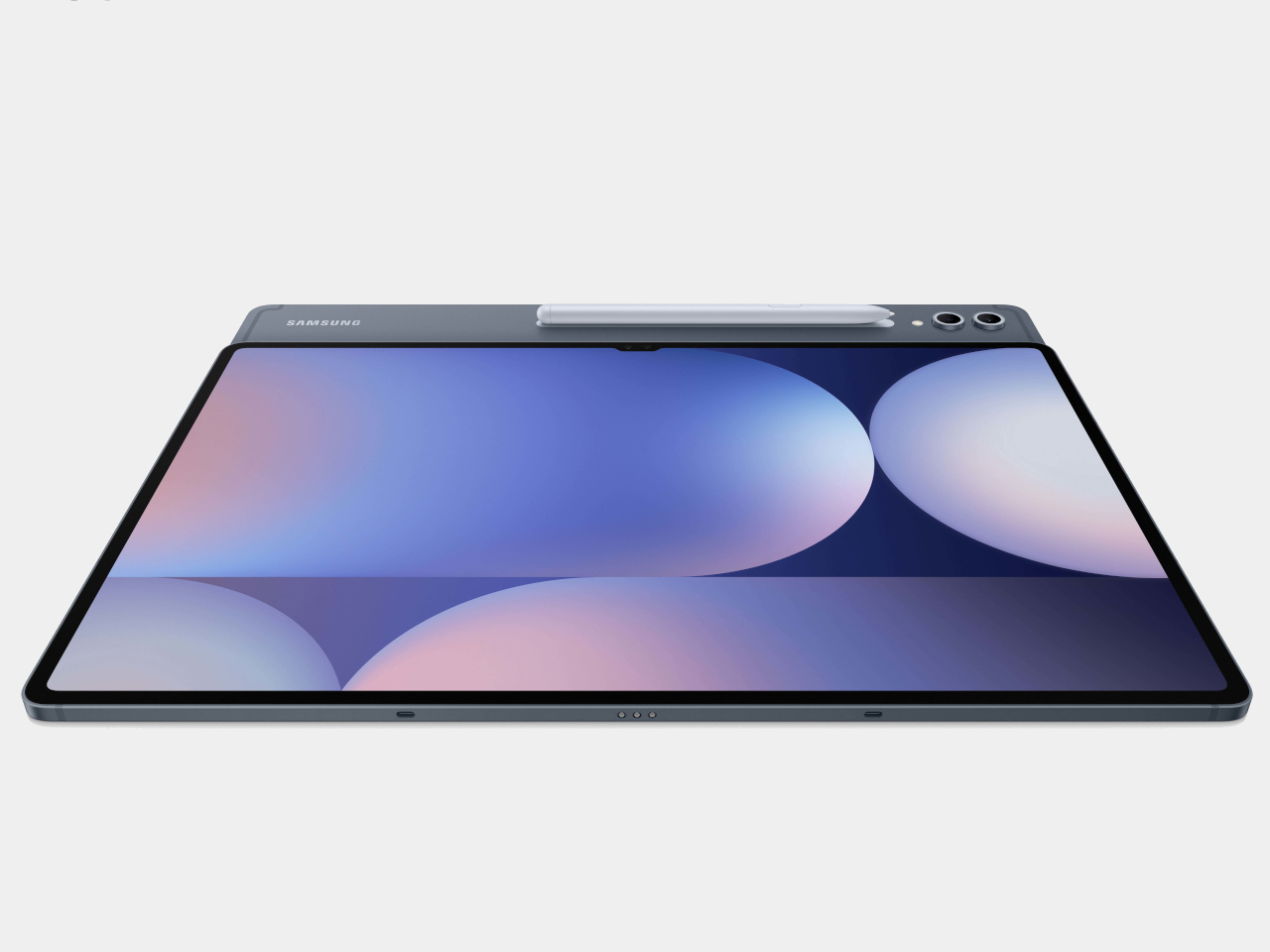
With a 14.6-inch screen, the Galaxy Tab S10 Ultra might be stretching the definition of a tablet, but it’s undoubtedly a very portable size for a detachable laptop and a digital drawing pad. Of course, Samsung has been marketing its Tab S series as a tablet for pros, but this time it’s adding a new element to the mix to make that even more plausible. Its putting AI, its own Galaxy AI, of course, front, center, and across the full width of that large screen, promising to upgrade your productivity as you upgrade your hardware.

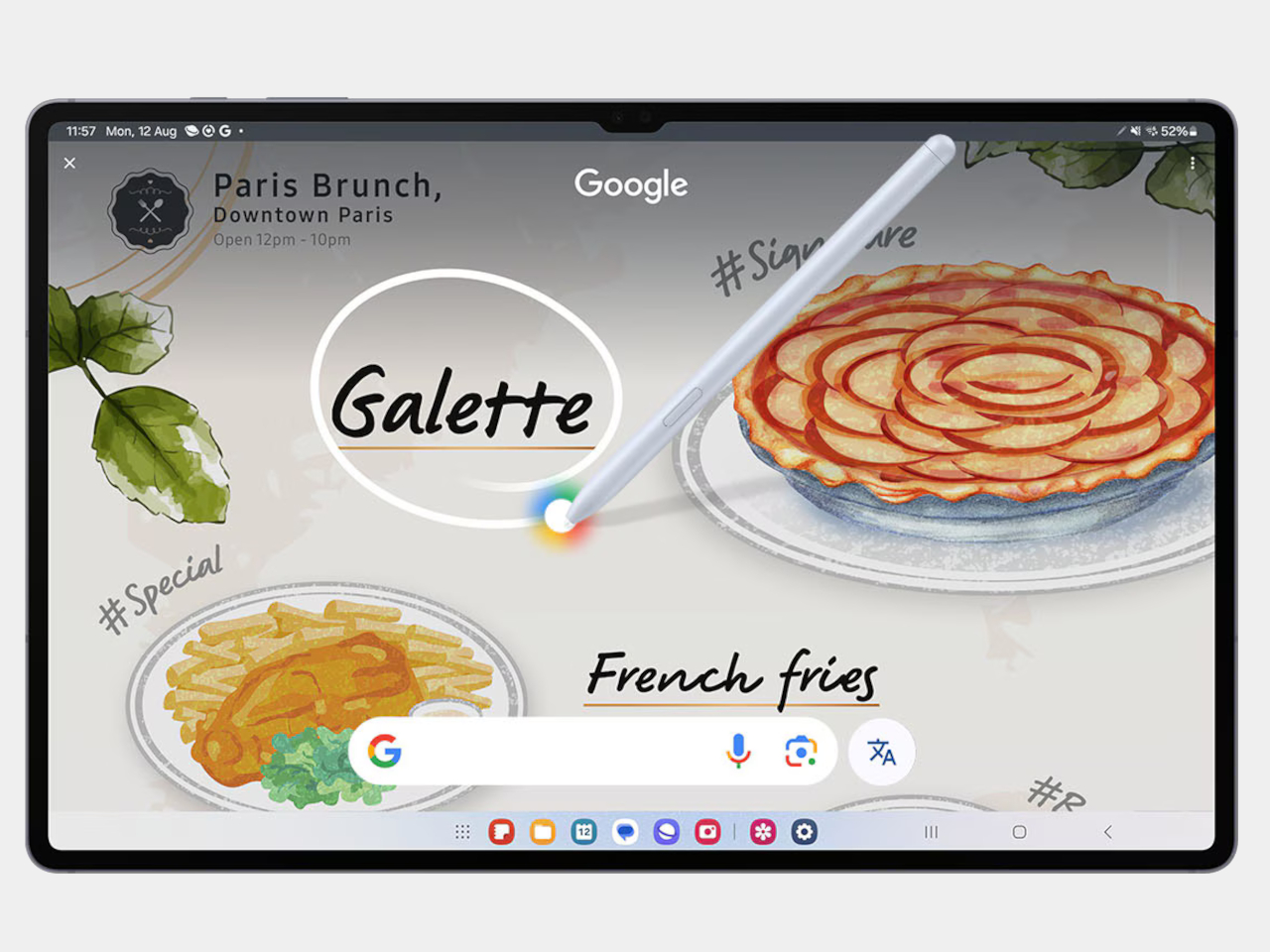
In terms of design, the Galaxy Tab S10 Ultra is a dead ringer for last year’s Samsung flagship tablet, which means you’re still getting a simple and no-nonsense design. Mirroring the aesthetics of its current Galaxy S smartphones, it has flat edges, a flat back, and two separate rings for the 13MP and 8MP cameras. There’s still that magnetic charging groove across the back for the included S Pen, making sure you don’t lose the all-important accessory too easily.
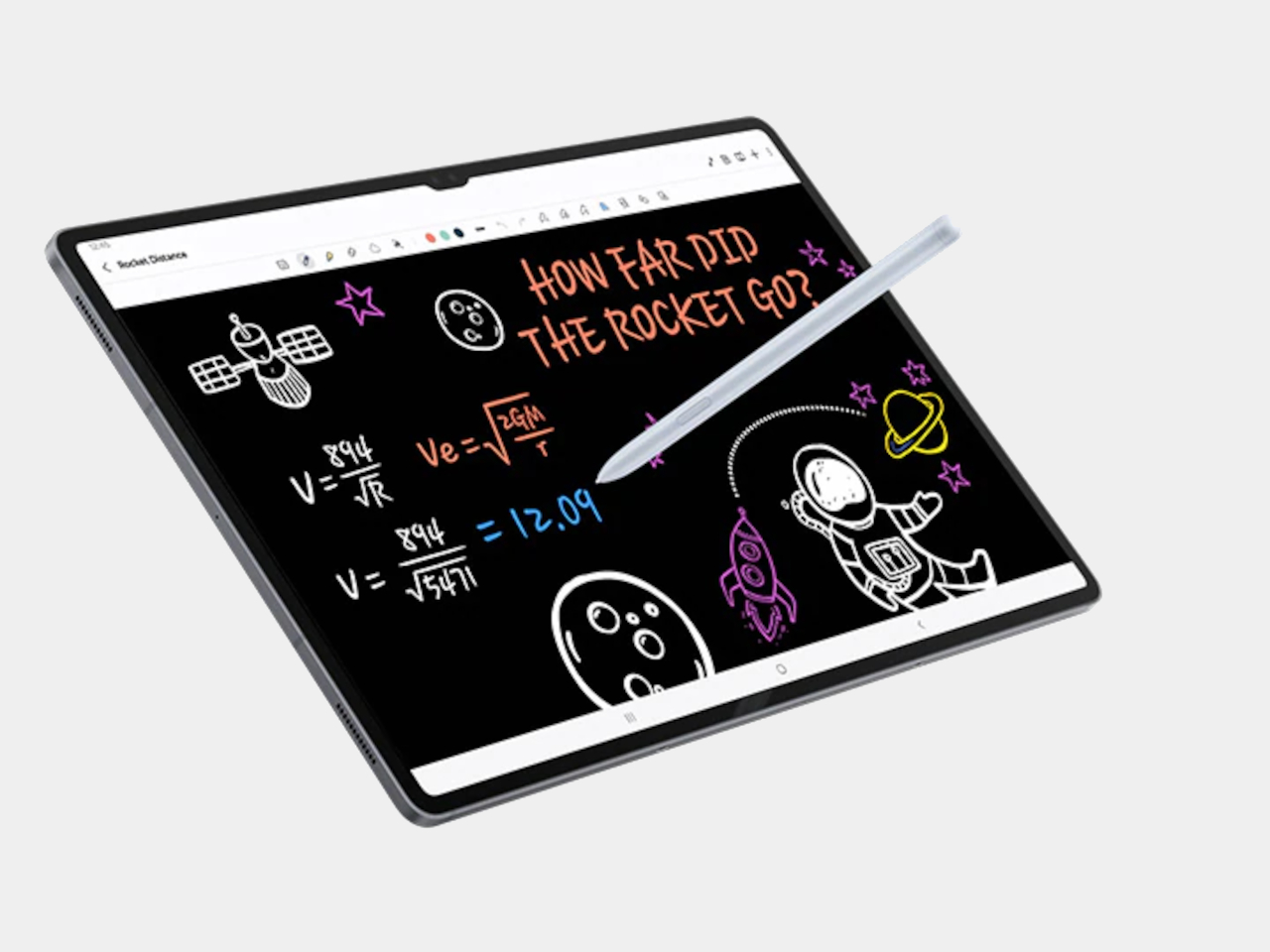
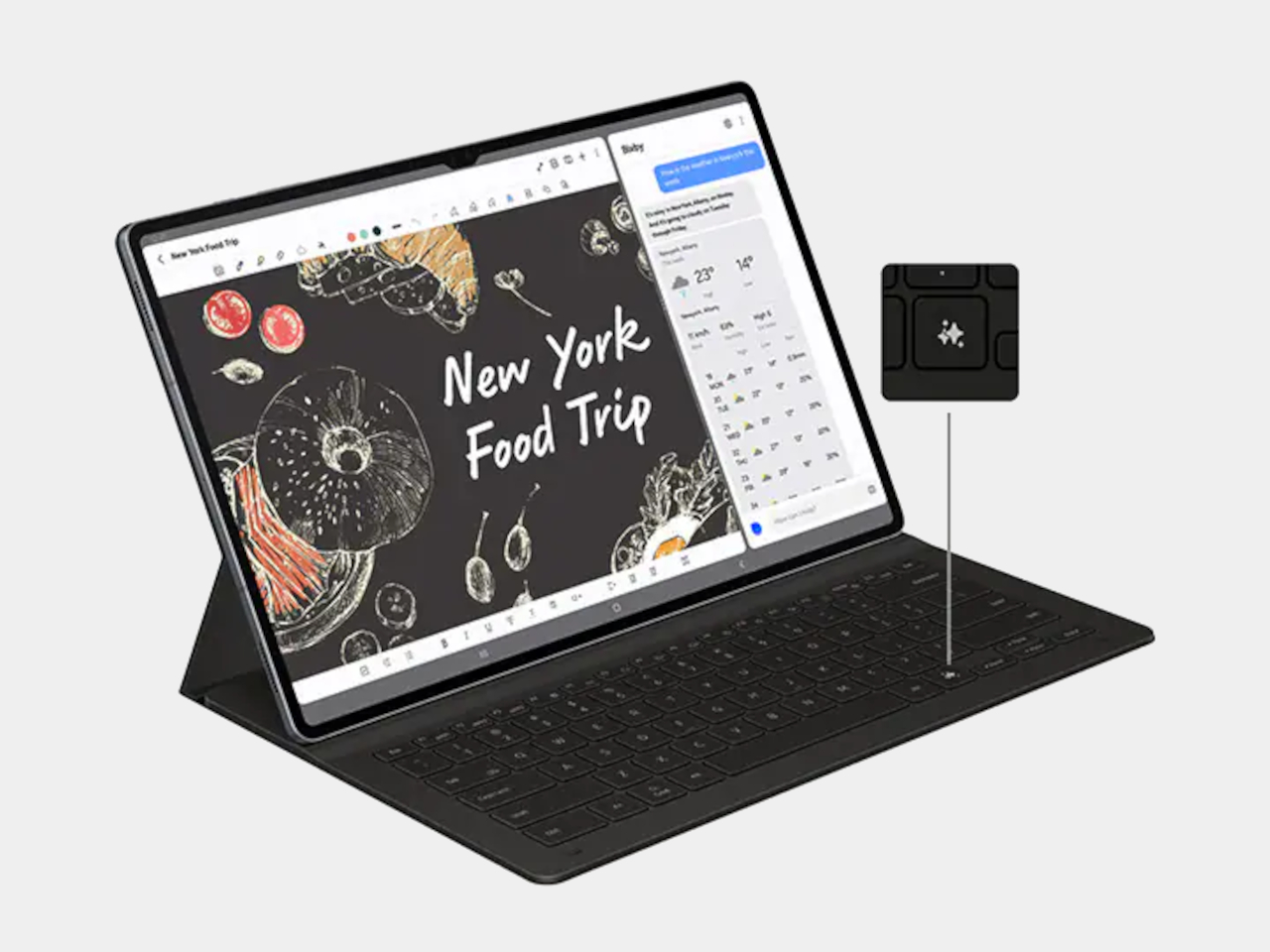
Samsung is making a lot of noise about the AI features on the tablet, all of them geared for productivity and creativity. Note Assist and Handwriting Help make it easier to make sense of notes, while Sketch to Image lets your artistic spirit free. There’s also Google’s now famous Circle to Search gesture, and the official Book Cover Keyboard naturally has a dedicated Galaxy AI Key to launch your AI assistant of choice, whether it’s Samsung Bixby or Galaxy Gemini.
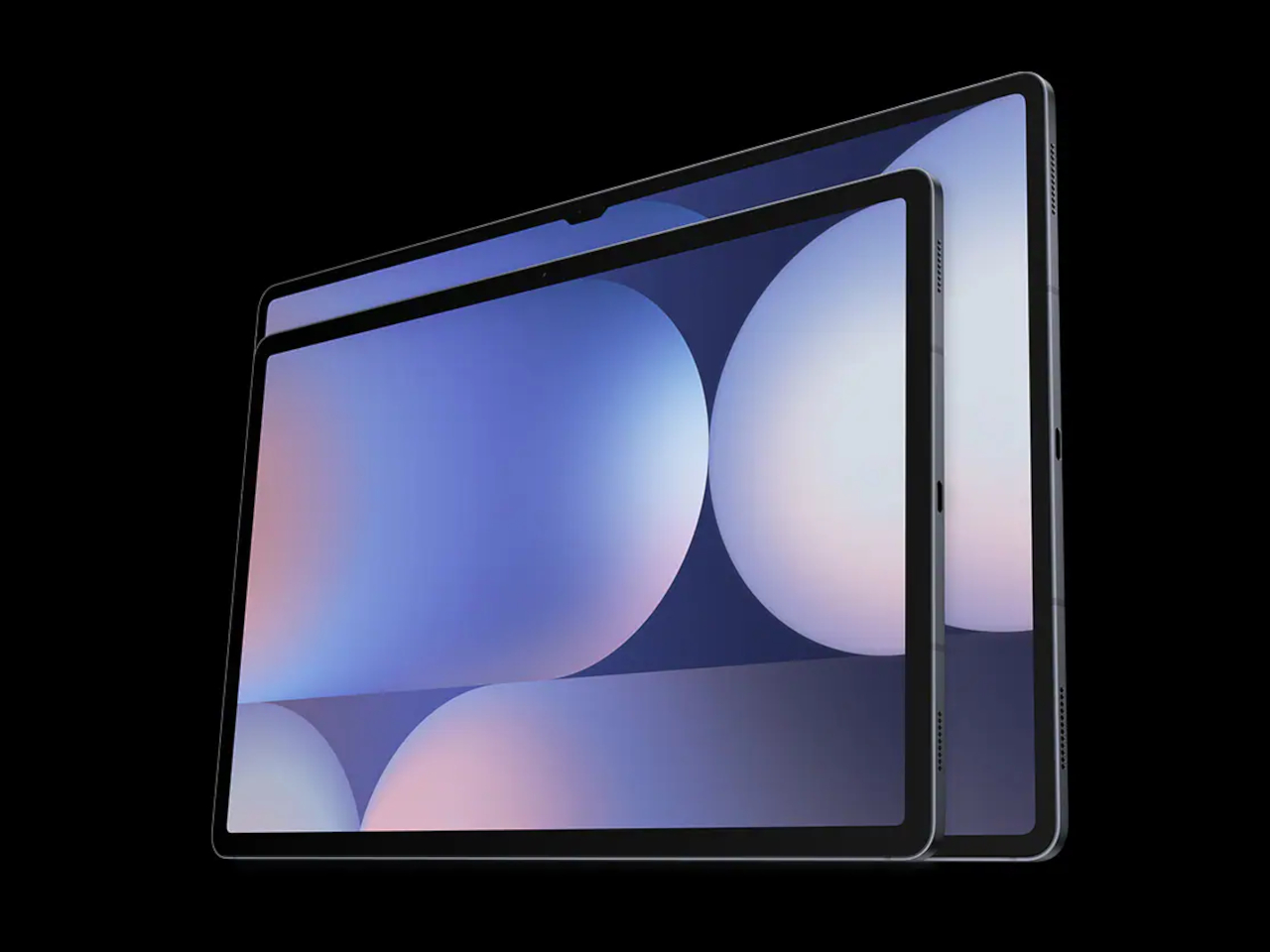
In terms of specs, Samsung naturally crammed the best of mobile hardware inside, except for one curious but critical compoment. Samsung opted to use a MediaTek Dimensity 9300+ processor instead of the usual Qualcomm Snapdragon, and some might have doubts about whether it can handle heavy AI loads, among other tasks. Regardless, the 120Hz Dynamic AMOLED 2X screen, 12GB of RAM, and 11,200mAh battery all come together for a premium experience. The Galaxy Tab S10 Ultra starts at a rather eye-watering $1,200, but those who prefer slightly smaller screens can opt for the 12.2-inch Galaxy Tab S10+ with a matching $1,000 price tag. Sadly, no smaller Galaxy Tab S10 model this year.
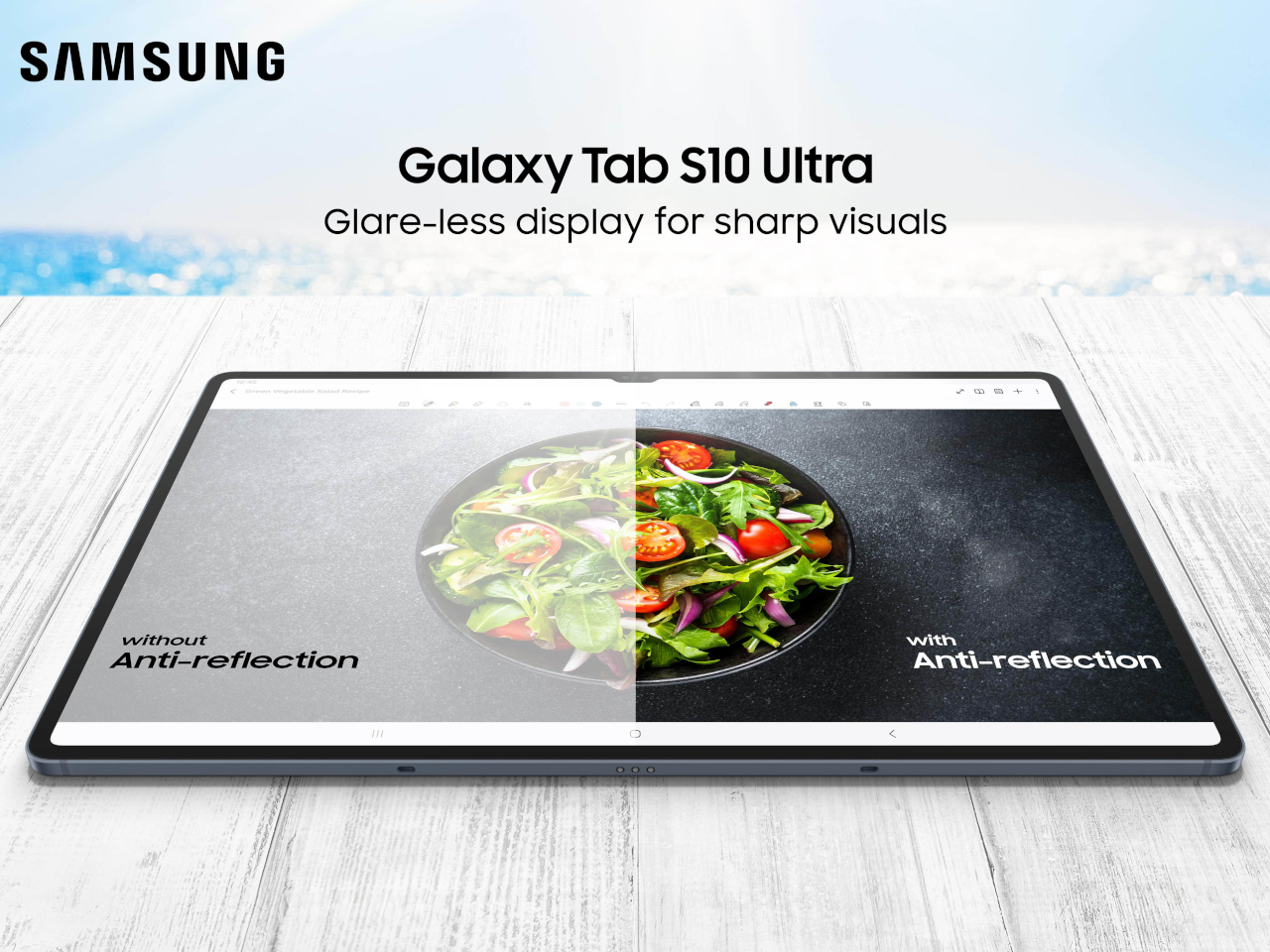
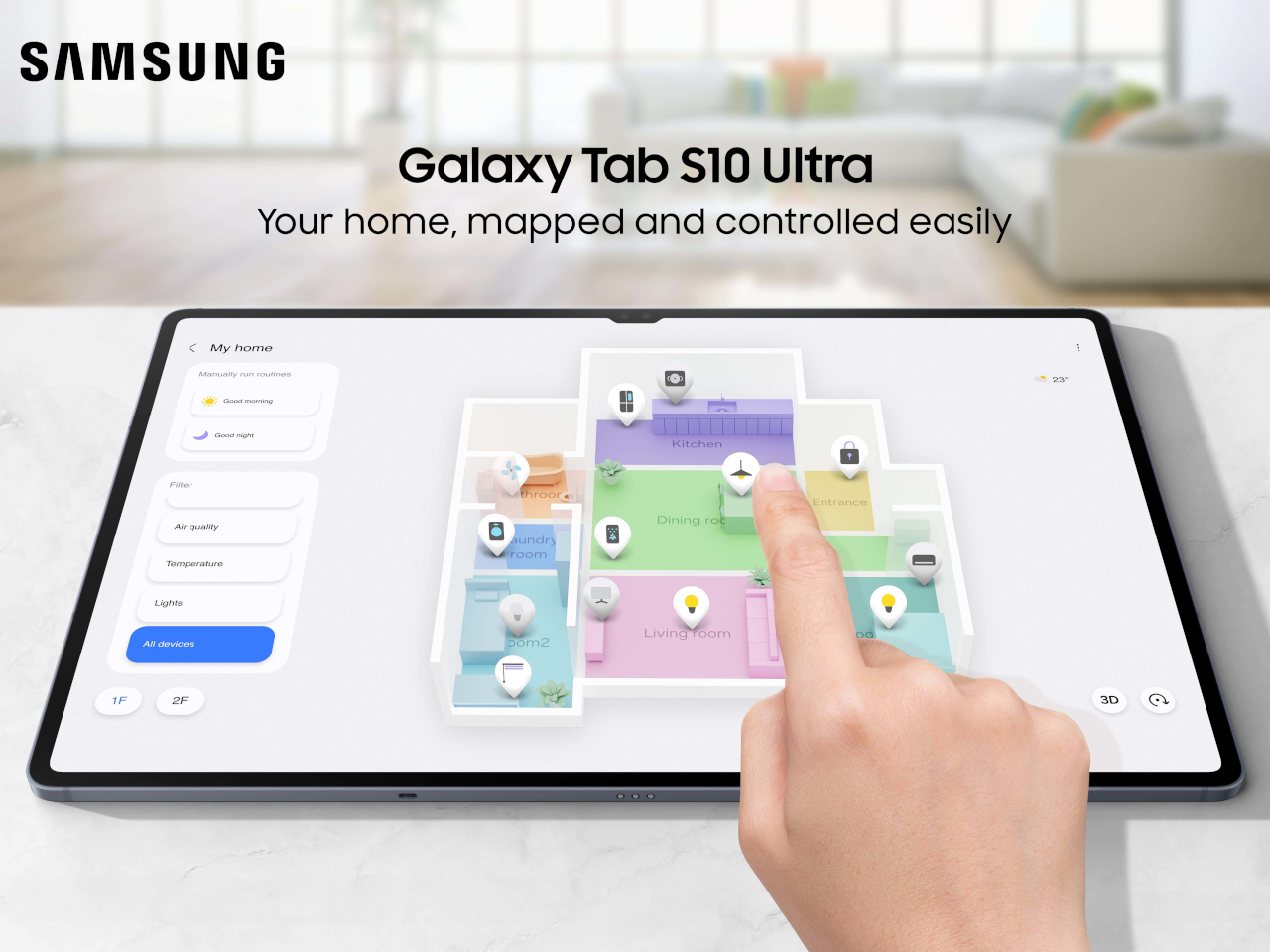
The post Galaxy Tab S10 Ultra tablet puts AI on an extra-large 14-inch screen first appeared on Yanko Design.
Ever since it relaunched the ill-fated Galaxy Note 7, Samsung has been launching a new “Fan Edition” S series flagship every year. The Samsung FE series is supposed to bring the most wanted features of its high-end phones down to a more affordable price tag, which means it does have to cut some corners to reach that price point. Cameras and battery life have always been the main focus of the Galaxy FE phones, but this year brings an unsurprising addition to that set. With the Galaxy S24 FE, Samsung is making an even bigger push for its Galaxy AI suite, trying to push it to more people with a handset that won’t kill their budget too much.
Designer: Samsung
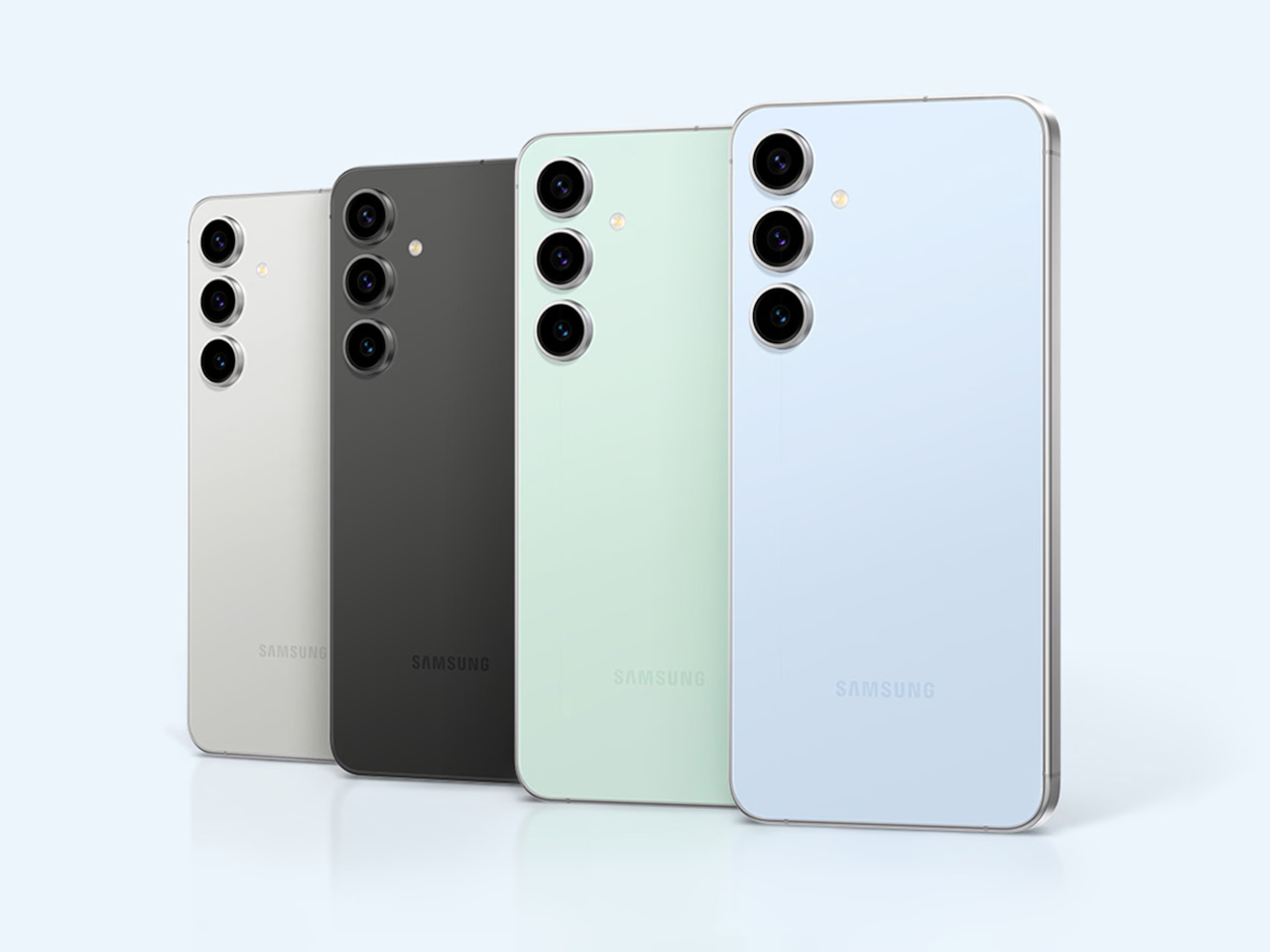
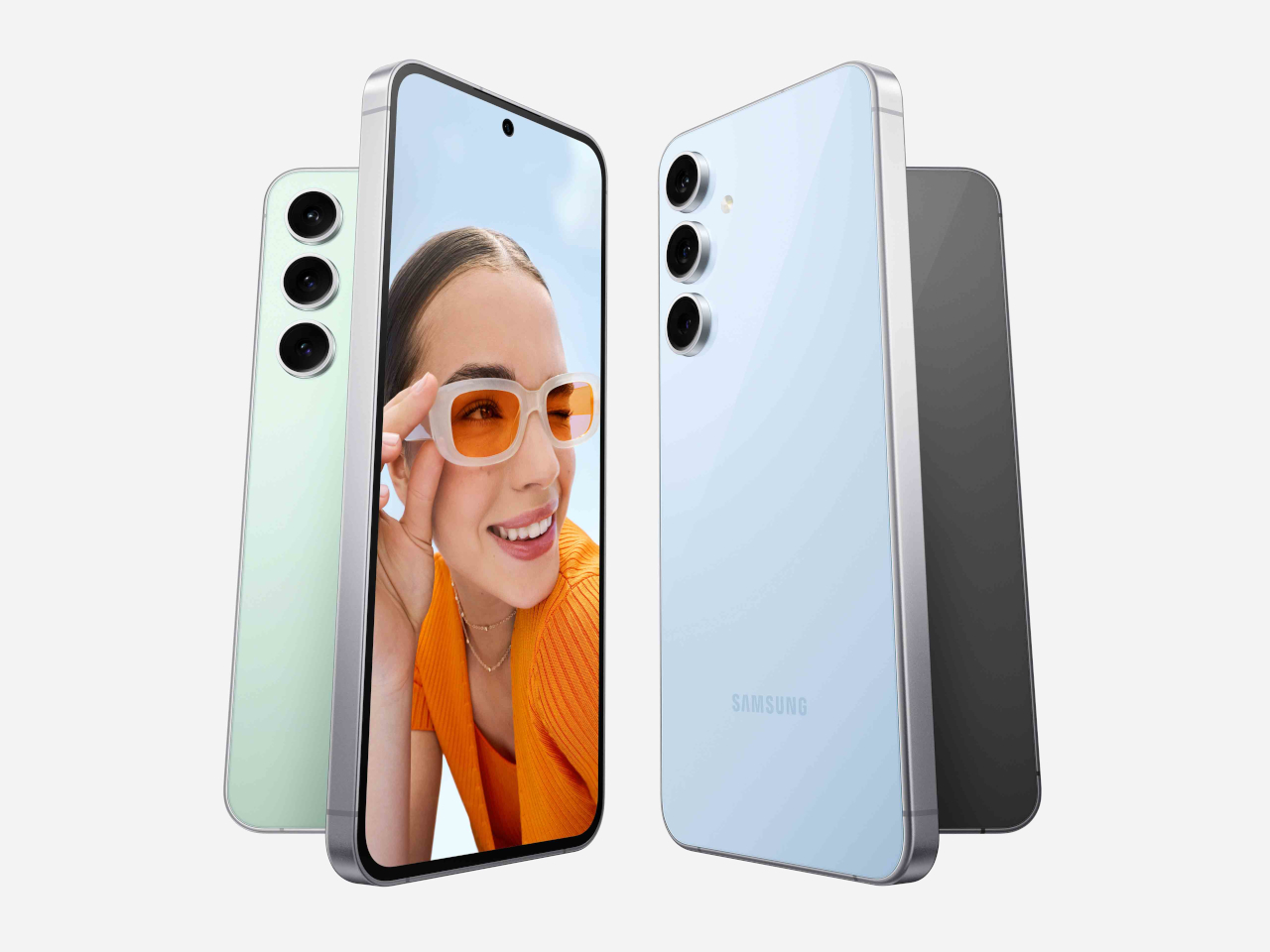
In terms of design, the Galaxy S24 FE strangely stands in between the Galaxy S24+ and the Galaxy S24 Ultra. It has an unapologetically large 6.7-inch screen, but its actual size is made even bigger by the wider bezels you won’t see on the more premium Galaxy S24 series. It does at least have the same elegant minimalist design as the Galaxy S24 and Galaxy S24+ with its rounded corners, flat edges, and flat front and back.

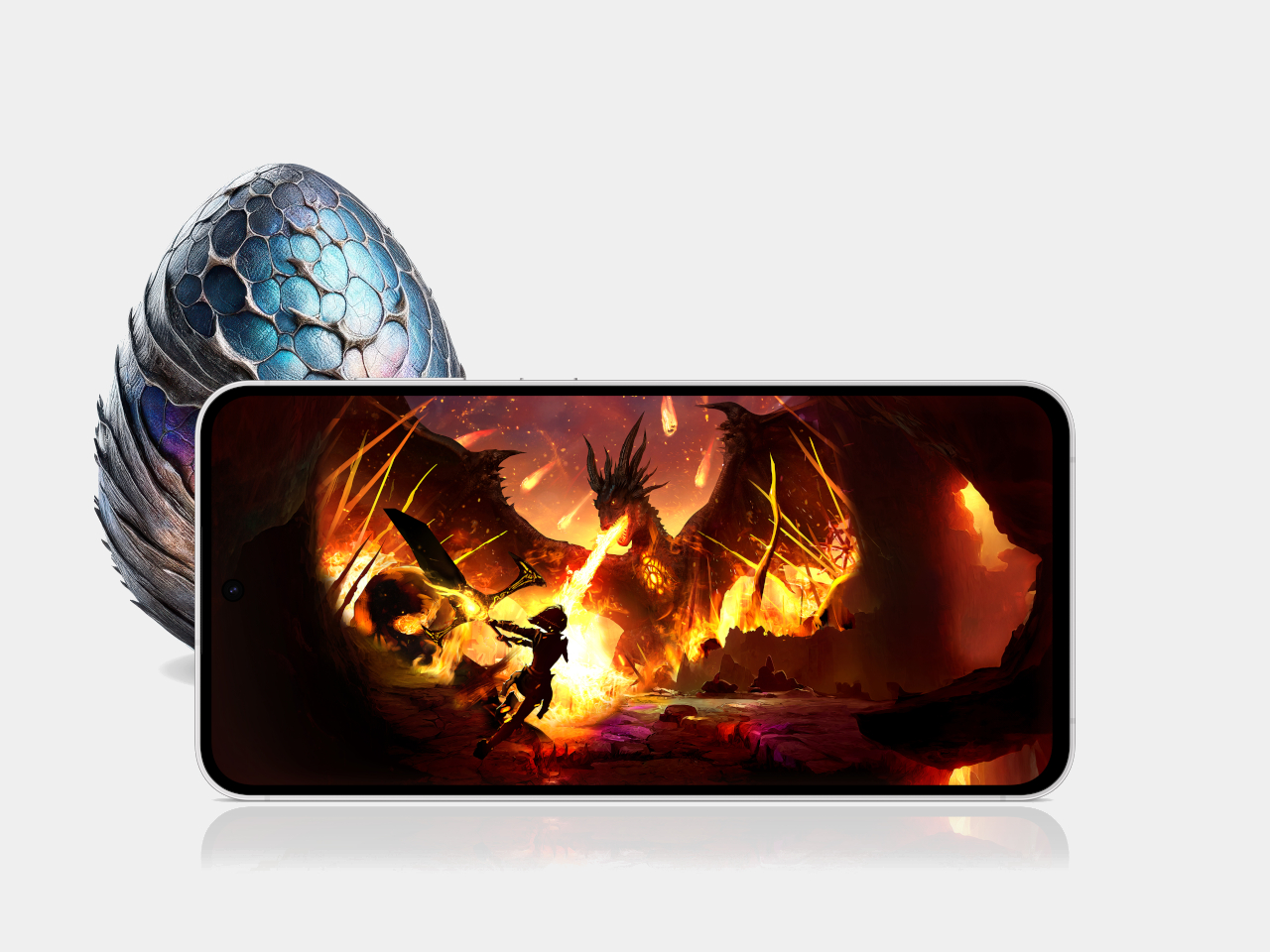
Of course, the “Fan Edition” phones come with plenty of compromises if you compare them to the standard flagship. In this particular case, the Galaxy S24 FE has a slightly dimmer screen that has fixed refresh rates of either 60Hz or 120Hz only, an underclocked mid-range Exynos 2400e processor, and only 8GB of RAM. That said, it does have a larger 4,700mAh battery compared to the 4,000mAh battery on the Galaxy S24, and it has almost similar 50MP main and 12MP ultra-wide cameras. The 3x telephoto camera, however, only has an 8MP sensor.


Unsurprisingly, a lot of the focus in this release is on Galaxy AI and the features that it enables. Those include retouching photos, making amusing compositions, and of course, Circle to Search with Google. Hopefully, the phone’s modest specs will be able to catch up with the demanding AI features without making the phone too hot to handle.
What is surprising is that Samsung is making the same support commitment it made with its more expensive phones, namely seven generations of OS upgrades and seven years of security updates. The phone also uses some materials made from recycled plastics, aluminum, glass, and rare earth metals, which is pretty impressive for a “cheaper” variant of a flagship phone. All of these come with a $649.99 price tag for 128GB of storage ($709.99 for 256GB), which isn’t all that bad considering you’re getting a solid phone from a reputable brand.

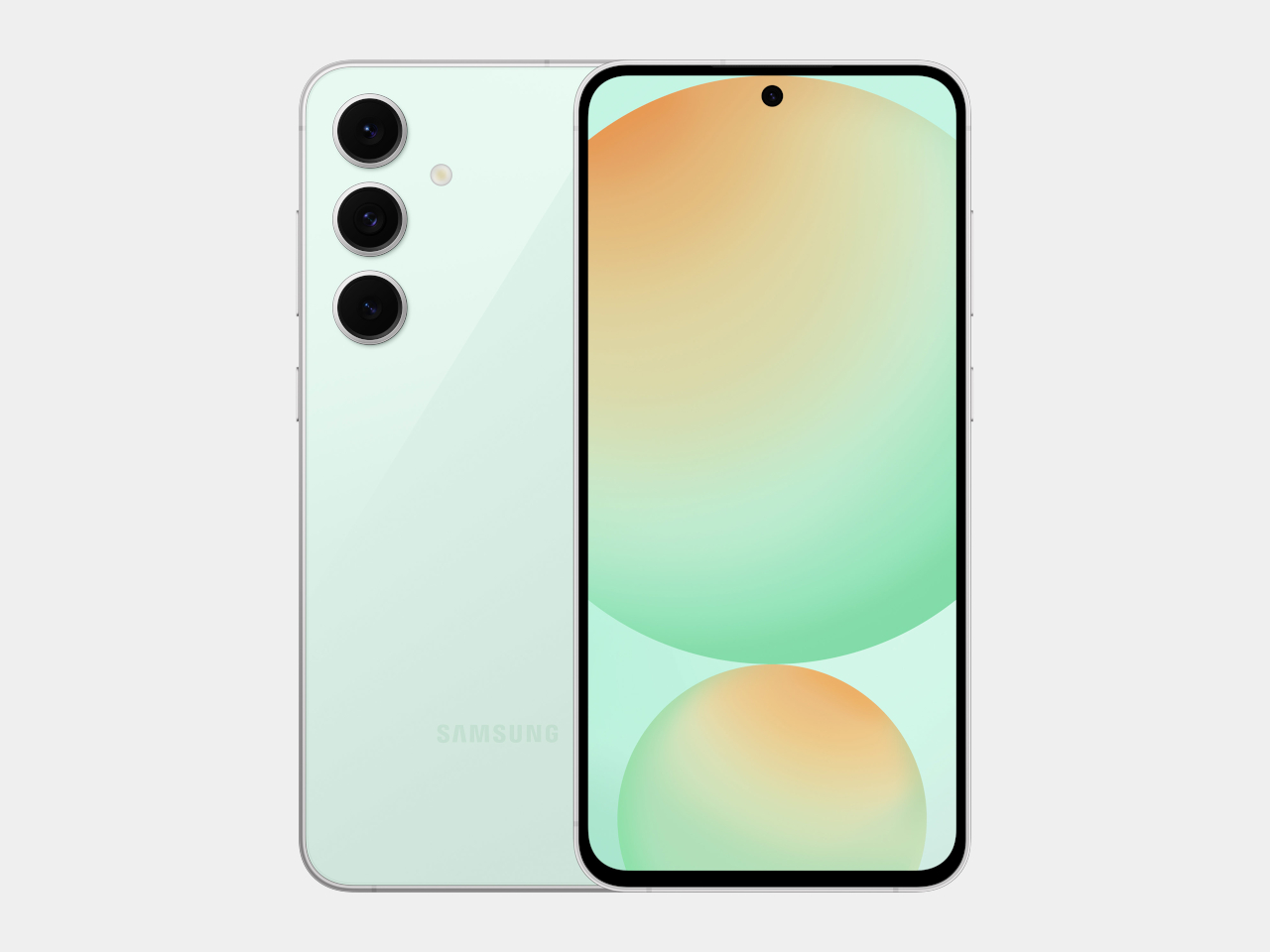
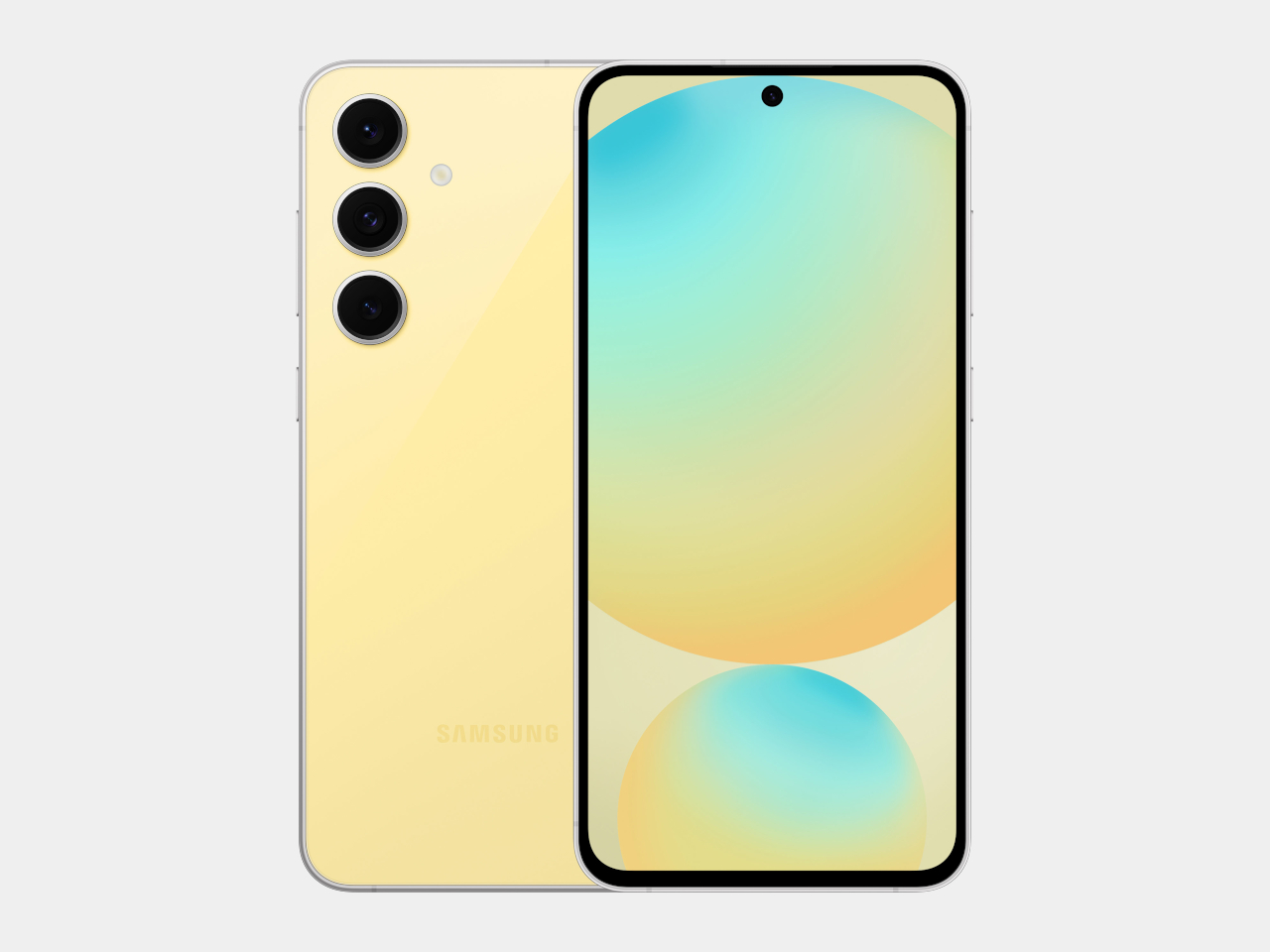
The post Galaxy S24 FE tries to make AI and minimalist design more accessible first appeared on Yanko Design.
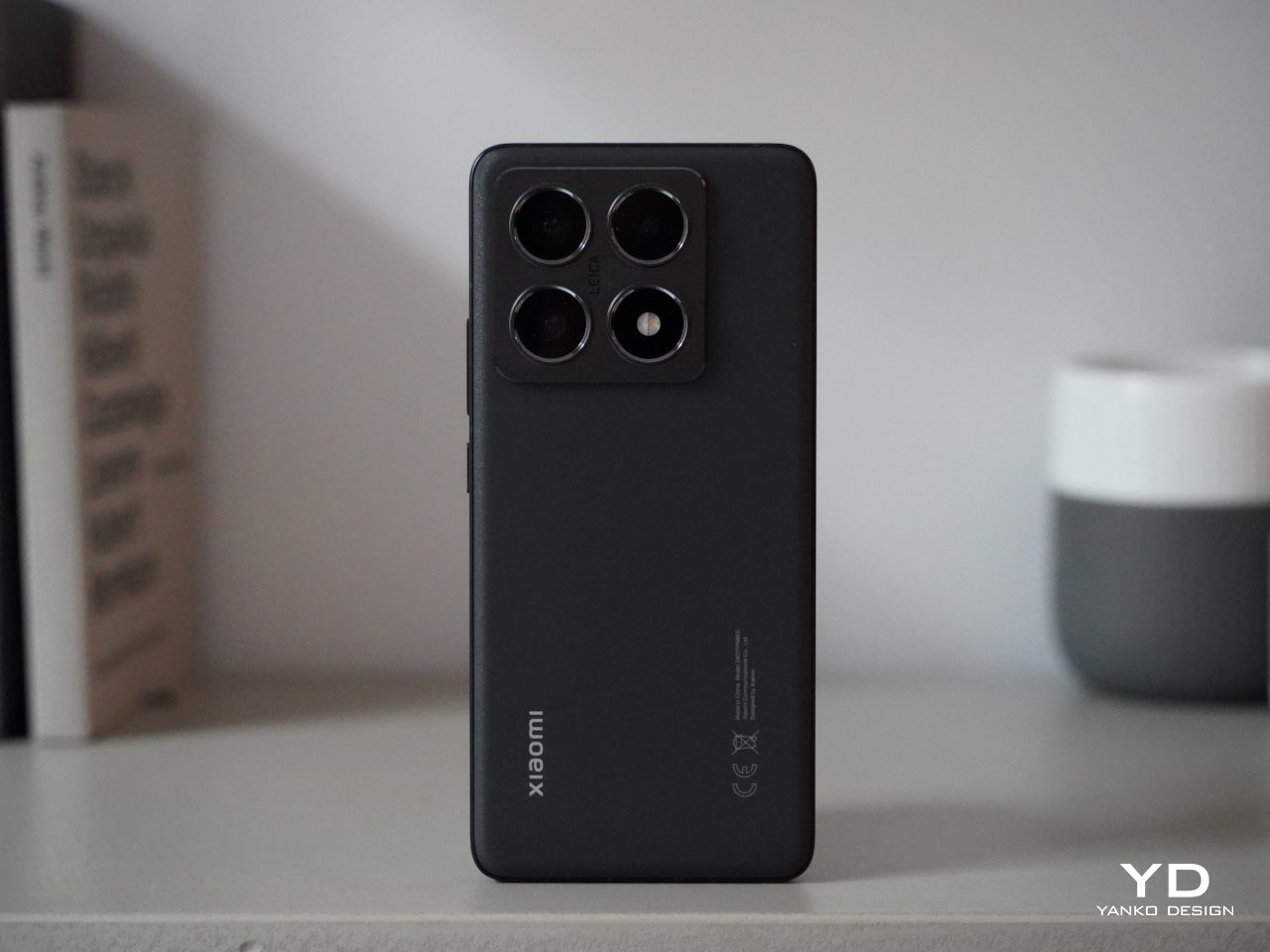
2024 has been a year of remarkable growth and innovation for Xiaomi. Building upon its success in the smartphone market, the company has expanded its horizons with the launch of its first electric vehicle, the SU7, back in March. The company then proceeded with the launch of its first-ever flip phone, the Xiaomi MIX Flip, as well as the fourth iteration of its flagship foldable, the MIX Fold 4. Impressive sales figures for the SU7 and the positive reception of the MIX Flip and MIX Fold 4 demonstrated Xiaomi’s ability to capture market shares in diverse product categories. It is clear that Xiaomi wants to take advantage of this moment and solidify its position as a leading global technology brand with the launch of the Xiaomi 14T and 14T Pro. Part of its budget-friendly numbered T series, the Xiaomi 14T Pro boasts flagship features similar to its flagship Xiaomi 14 and 14 Ultra phones, such as cameras co-developed with Leica. But does Xiaomi still have its magic touch or has it spread itself too thin? Read on to find out.
The Xiaomi 14T Pro’s understated design is its strength. While it doesn’t offer groundbreaking aesthetics, its simplicity is elegant. The familiar design language from its predecessor is carried over into this model. Available in Titan Gray, Titan Blue, and Titan Black, but choosing a color shouldn’t be a challenge as they all offer similar aesthetics. I wish Xiaomi had explored more fun color options. We received the Titan Black variant. The matte black back panel is speckled for a light-catching effect and features a velvety texture that resists fingerprint smudges.
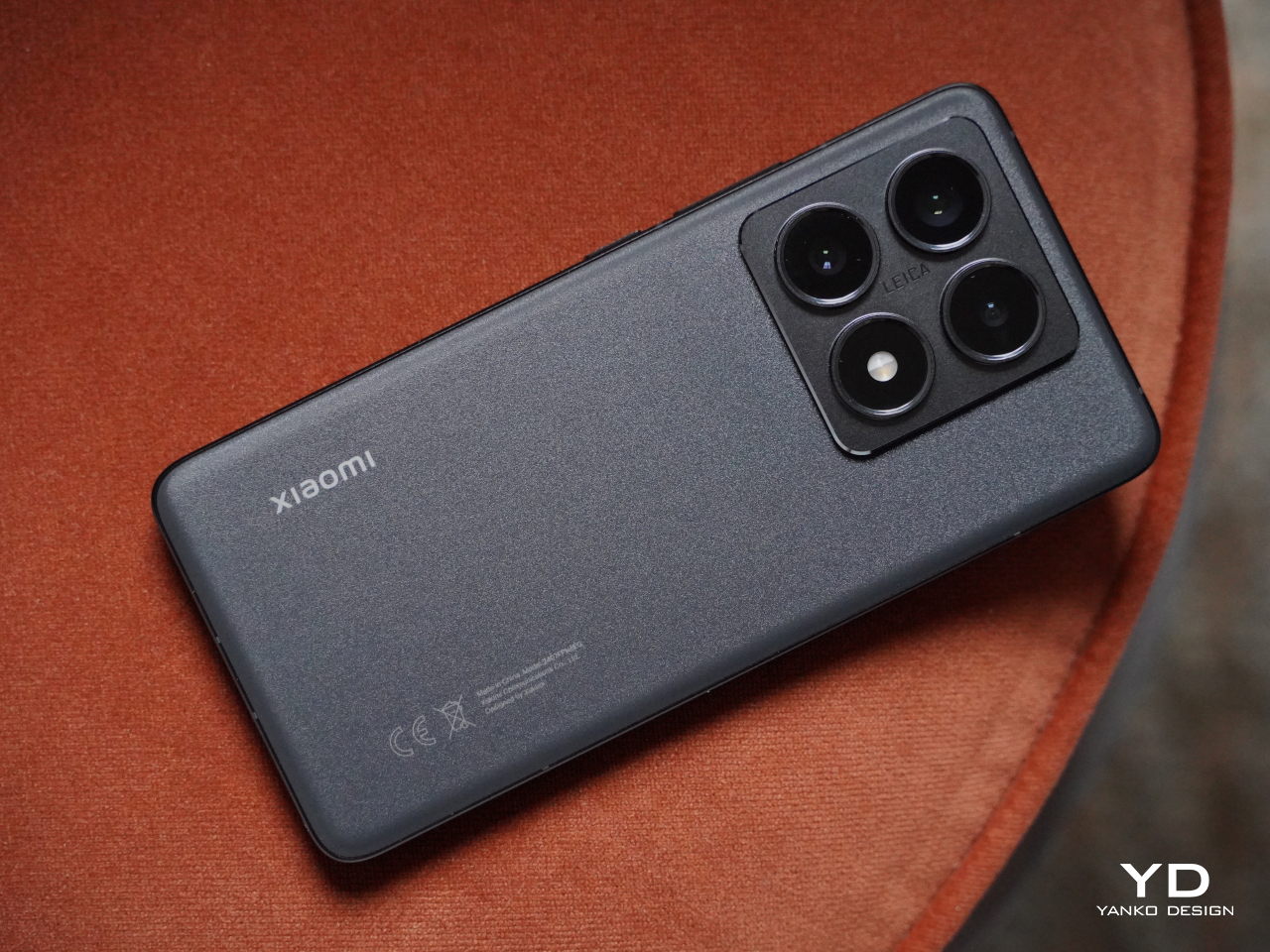
The device’s square camera island is big but maintains a discreet profile that matches the color of the back panel. The camera island’s smooth surface contrasts with the back panel’s textured finish. The arrangement of the cameras and LED light is perfectly symmetrical, centered around the Leica logo. Each camera and LED light is housed in a raised circular enclosure, making it slightly more challenging to clean dust that may accumulate. That said, it carries a sort of LEGO block vibe that makes it stand out a bit, especially from the rest of the Xiaomi 14 series.
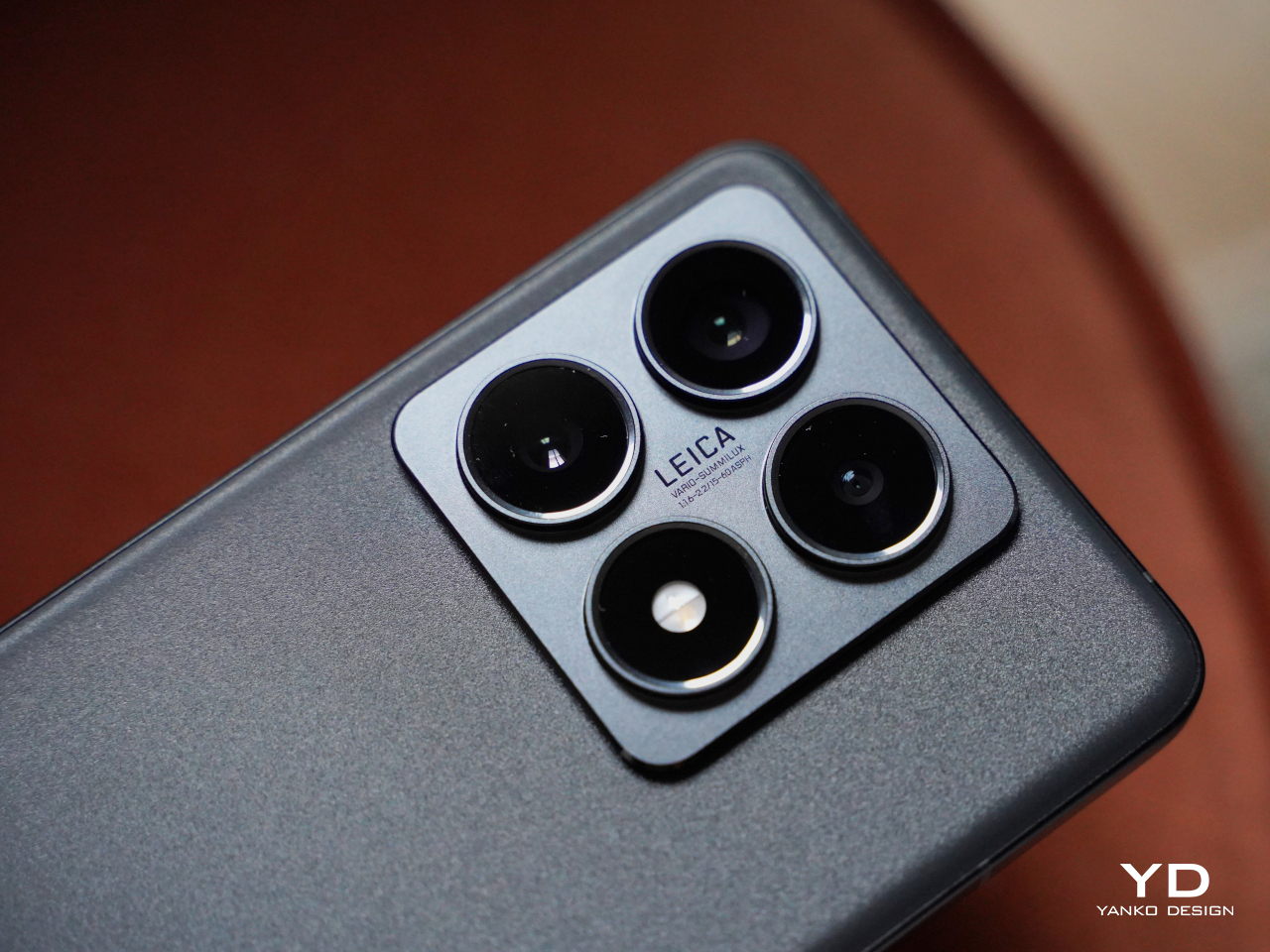
The small Xiaomi logo in silver is positioned on the lower left and the regulatory icons and text on the lower right. Overall, 14T Pro offers a clean design, while the matte textured back panel and metallic aluminum alloy frame give it a premium feel. It is simple and direct, a breath of fresh air from the visually noisy designs of recent smartphones.
Measuring 160.4mm x 75.1mm x 8.39mm and weighing 209g, the Xiaomi 14T Pro leans towards the larger side of the spectrum. Despite its size, the device feels comfortable to hold, whether with one or both hands. All edges slightly curve into the frame giving comfort, while the flat sides provide a better grip when you hold the device in your hand.
The right side of the phone features volume and power buttons with diagonal engraving, while the left side remains clean except for antenna cutouts. The top houses an IR blaster and speaker, while the bottom accommodates a dual SIM slot, microphone, USB-C port, and speaker. The sides might be busy with these many parts, but they visually blend into the frame and stay out of the way of your fingers or your palm when you hold the phone.
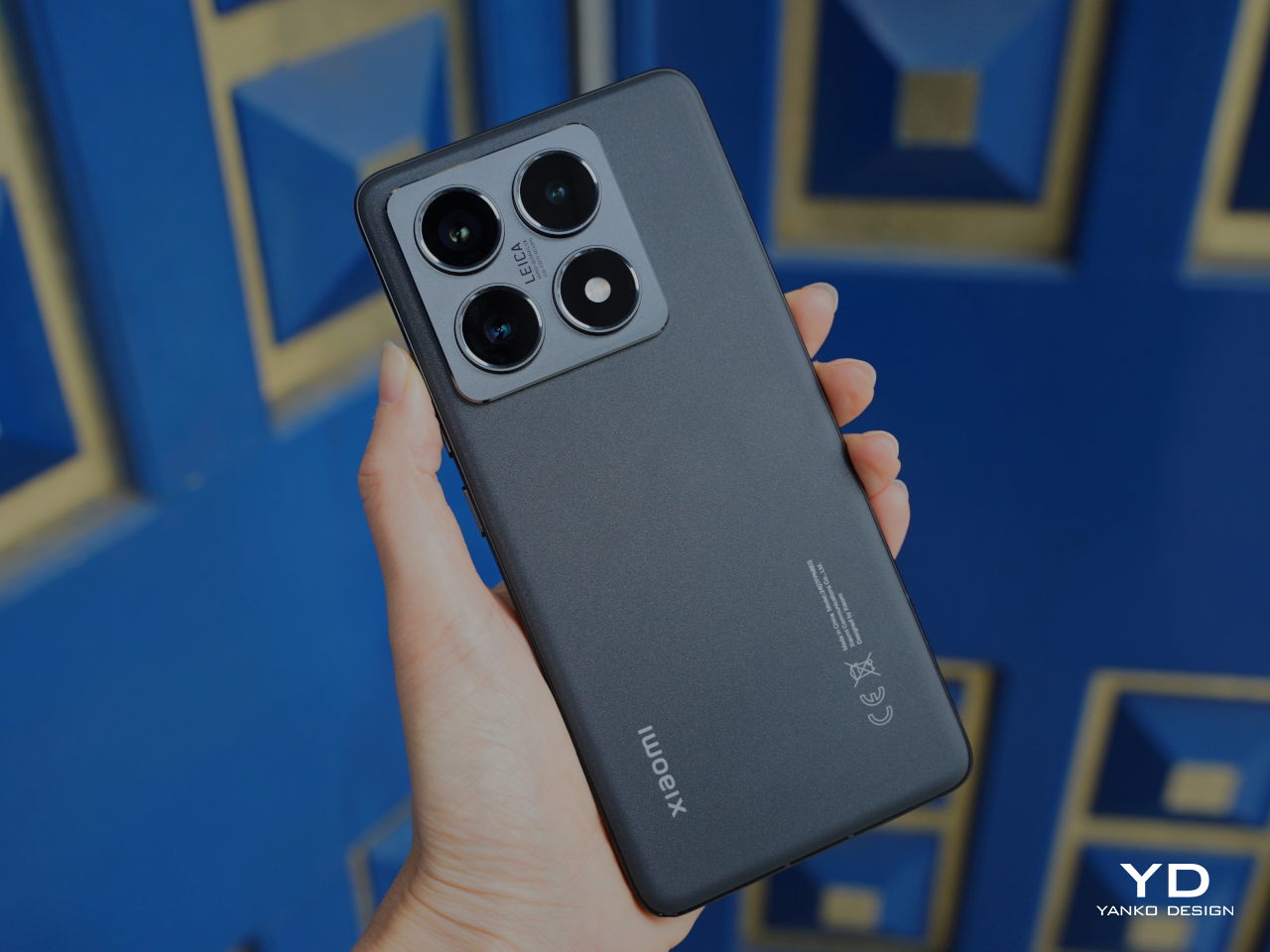
The off-center camera module can cause the phone to wobble slightly on flat surfaces which might be a minor inconvenience if they are sensitive to such details. Nothing that a case wouldn’t fix, of course, and it’s a design trait shared by almost all smartphones these days. The Xiaomi 14T Pro is thankfully not uncomfortable to hold and use despite its large size, though it doesn’t stand out as an example of good ergonomics either.
Xiaomi’s collaboration with Leica has significantly elevated its camera capabilities, resulting in exceptional photo and video quality. This partnership continues as Xiaomi works with Leica on its more budget-friendly flagship models, ensuring high-quality imaging remains accessible. The 14T Pro features a triple camera setup, including a 50MP main camera with an f/1.6 aperture, a 50MP telephoto camera with an f/2.0 aperture, and a 12MP ultra-wide camera with an f/2.2 aperture. All three cameras offer two Leica photographic styles: “Leica Vibrant” and “Leica Authentic.”


The main camera features a Light Fusion 900 sensor and delivers great photos with nice detail, wide dynamic range, natural colors, and minimal noise in both daylight and low-light conditions. While the dynamic range is generally great, exposure often skews toward the brighter end, leading to washed-out highlights and crushed shadows in some situations. Additionally, HDR performance struggles with motion, especially in low-light environments, leading to blurry images of moving subjects.

Ultrawide (0.6x)

1x

2x

2.3x
The telephoto camera performs well in most scenarios, maintaining good detail and color accuracy. In contrast, the ultra-wide camera produces acceptable photos, but it tends to lack sharpness and detail in challenging conditions.

Telephoto (5x)

Telephoto (10x)

Telephoto (20x)
Portrait mode offers four focal lengths, 23mm, 35mm, 60mm, and 75mm, with the default set to 60mm. While the 60mm and 75mm portraits are captured with the telephoto camera, the 23mm and 35mm portraits are shot with the main camera. All portrait photos I took, regardless of focal length, exhibited impressive subject isolation and pleasing bokeh.

Normal (1x)

Portrait (60mm)
Although color rendering remains consistent across different cameras and magnifications in regular photo mode, a noticeable shift in white balance can be observed between photos captured with the telephoto and main cameras in portrait mode.

Portrait (23mm)

Portrait (35mm)

Portrait (75mm)
On the opposite side, the upgraded 32 MP front camera with f/2.0 aperture takes satisfactory photos, which isn’t that surprising given the hardware. The Xiaomi 14T Pro can record videos up to 8K at 24 or 30 fps with the main camera, while the telephoto and ultra-wide cameras are capable of shooting videos up to 4K at 60 fps. The front-facing camera can record up to 4K at 30 fps and 1080p at 60 fps. The 4K footage from the main and telephoto cameras is impressive, showcasing good detail, realistic colors, and a wide dynamic range, all complemented by excellent stabilization.



While the Xiaomi 14T Pro offers incremental hardware improvements compared to its predecessors, its most significant advancements lie in its AI capabilities. The device supports Google Gemini and introduces Circle to Search, a first for Xiaomi devices. Additional AI features include AI Interpreter, AI Notes, AI Recorder, and AI Subtitles. These AI features and Circle to Search will be available via an over-the-air (OTA) update starting September 26th, which means they aren’t accessible during this review period.
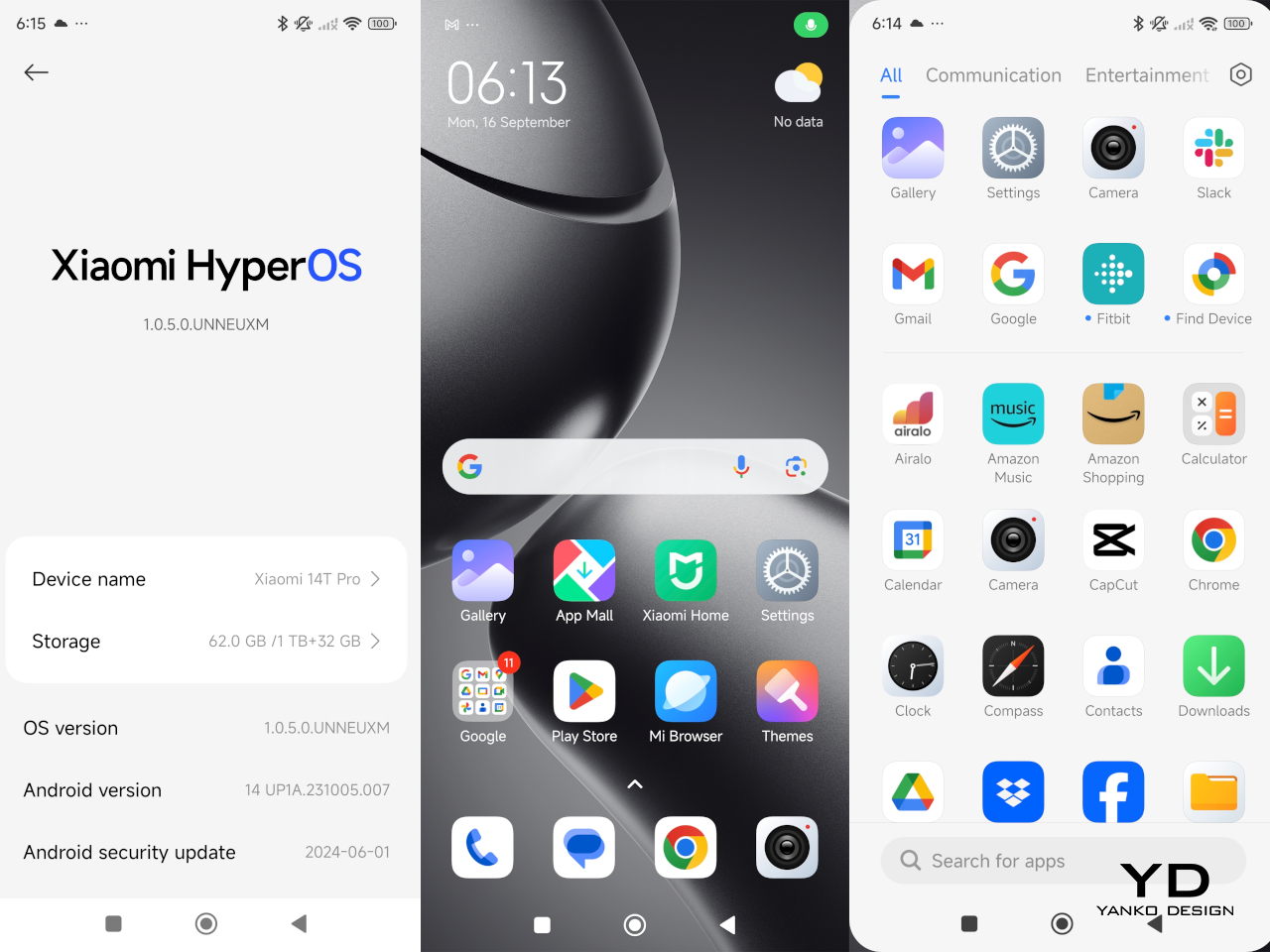
One of the AI features I was able to test was AI Erase Pro, and it was remarkably effective. The tool offers four modes: Manual, Remove Object, Remove People, and Remove Lines. The Remove People mode was particularly impressive, accurately recognizing individuals and color-coding them. Even when people were positioned in a staggered formation, the AI could identify each person. However, while erasing people from the photos worked well, the shadows were left unmanipulated.
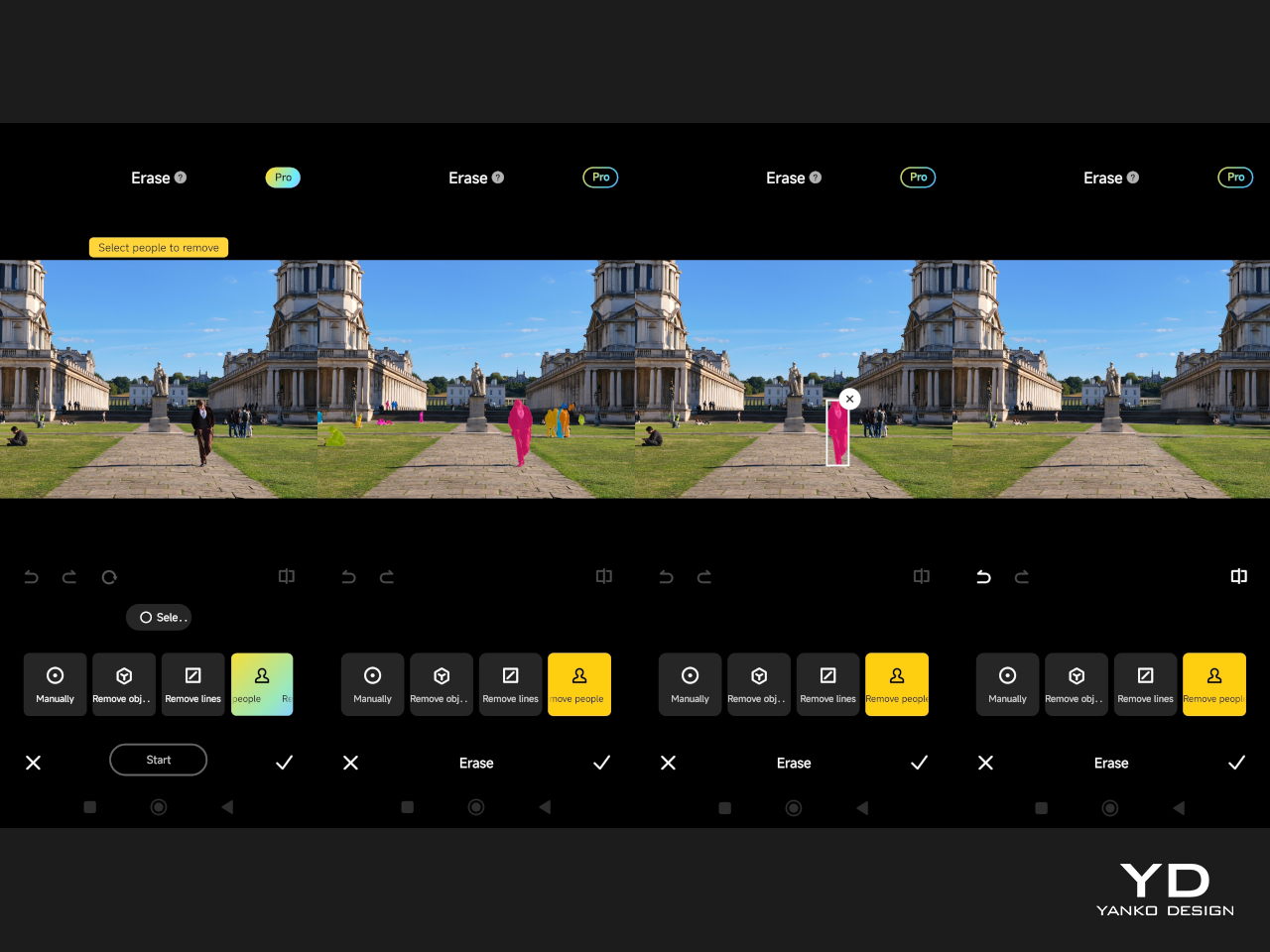
The other impressive feature of the Xiaomi 14T Pro is a big 6.67-inch AMOLED flat screen that boasts a 1.5K resolution (2,712 x 1,220), a 144Hz refresh rate, and a pixel density of 446 ppi. Supporting 12-bit color depth, HDR10+, and Dolby Vision, the display delivers sharp, vibrant visuals. Even under direct sunlight, the peak brightness of 4,000 units ensures excellent visibility while the 3,840 Hz PWM dimming reduces eye fatigue. Also, the stereo speaker is plenty loud and produces nice sounds, making the phone great for enjoying movies.
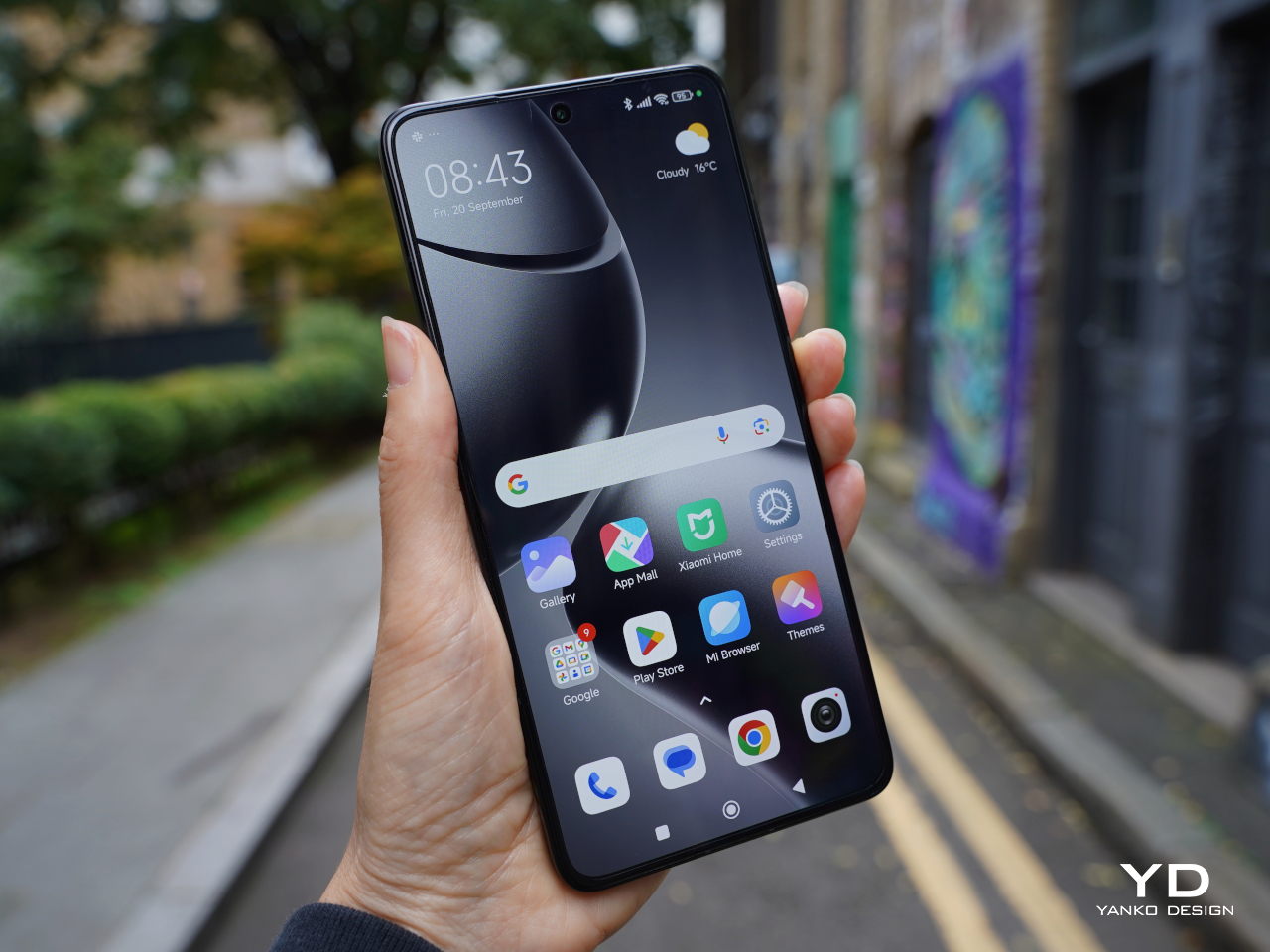
The 5,000mAh battery provides sufficient power for a full day of use. If you need a quick boost, Xiaomi’s 120W HyperCharge technology allows for incredibly fast wired charging, reaching a full charge in about 19 minutes, as stated by the company. Additionally, the 14T Pro supports 50W wireless charging, a much-welcome upgrade. Xiaomi claims that the device can be fully charged with a wireless charger in approximately 45 minutes. My personal experience aligns with these impressive capabilities.
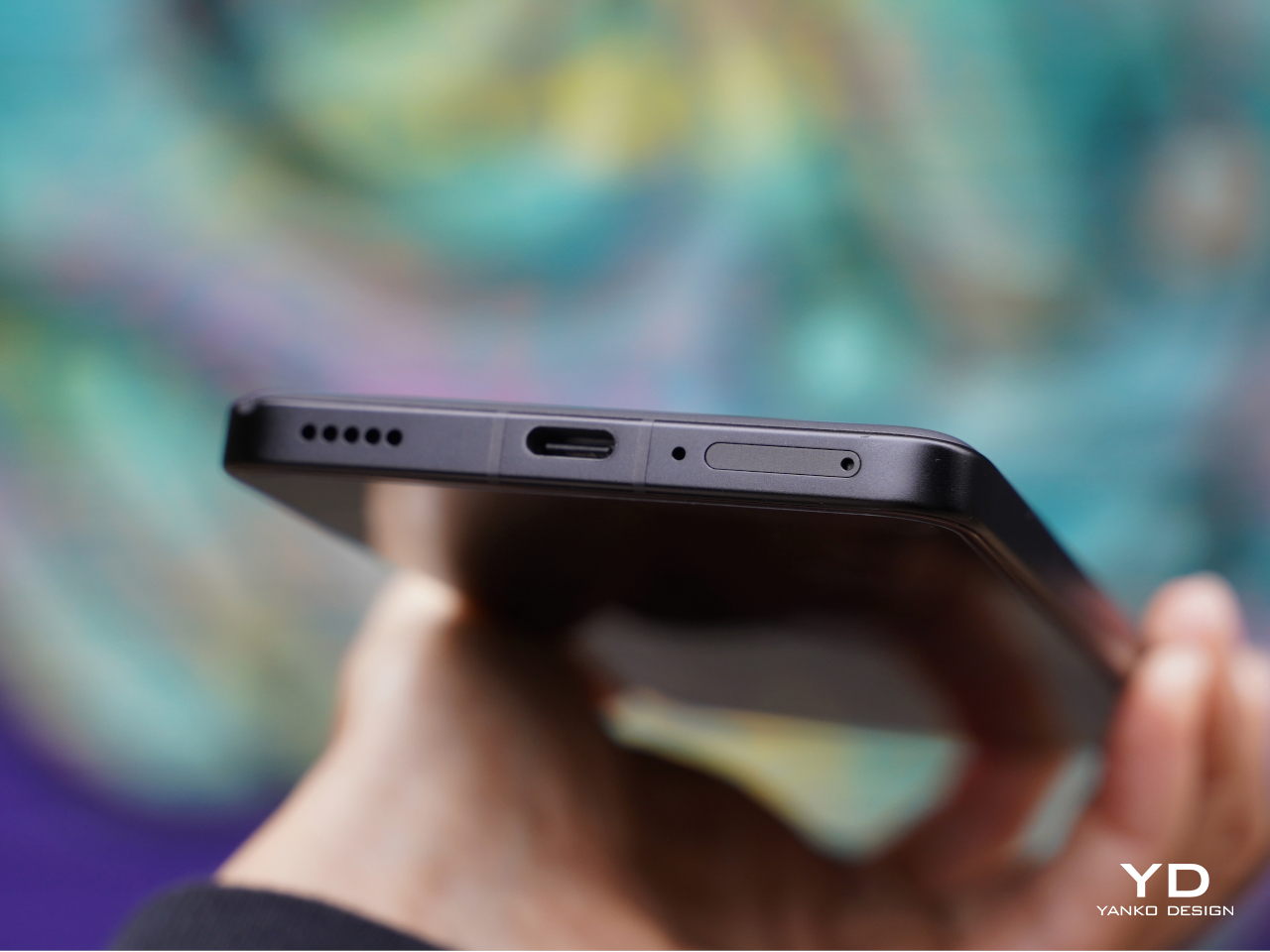
The device runs HyperOS based on Android 14 and Google services are thankfully available out of the box. Powered by MediaTek’s flagship Dimensity 9300+ chipset and paired with 12GB or 16GB of LPDDR5X RAM and 256GB, 512GB, or 1TB of UFS 4.0 storage, the Xiaomi 13T Pro delivers great performance. The device handles multitasking seamlessly, with no noticeable lag or stutter even when running multiple apps simultaneously. Additionally, it does not get hot during extended video shoots or gaming sessions, enhancing the overall user experience.
The Xiaomi 14T Pro promises a 1,600 battery life cycle and delivers IP68 dust and water resistance, ensuring both durability and longevity. Its longevity and overall sustainability aspects, however, are not as promising, especially in the area of software updates. This is somewhat disappointing for a company that is becoming one of the industry’s leading players. As the tech industry increasingly emphasizes environmental responsibility, Xiaomi has an opportunity to take a leading role by integrating sustainability into all of its products and, hopefully, it won’t let that opportunity pass it by.
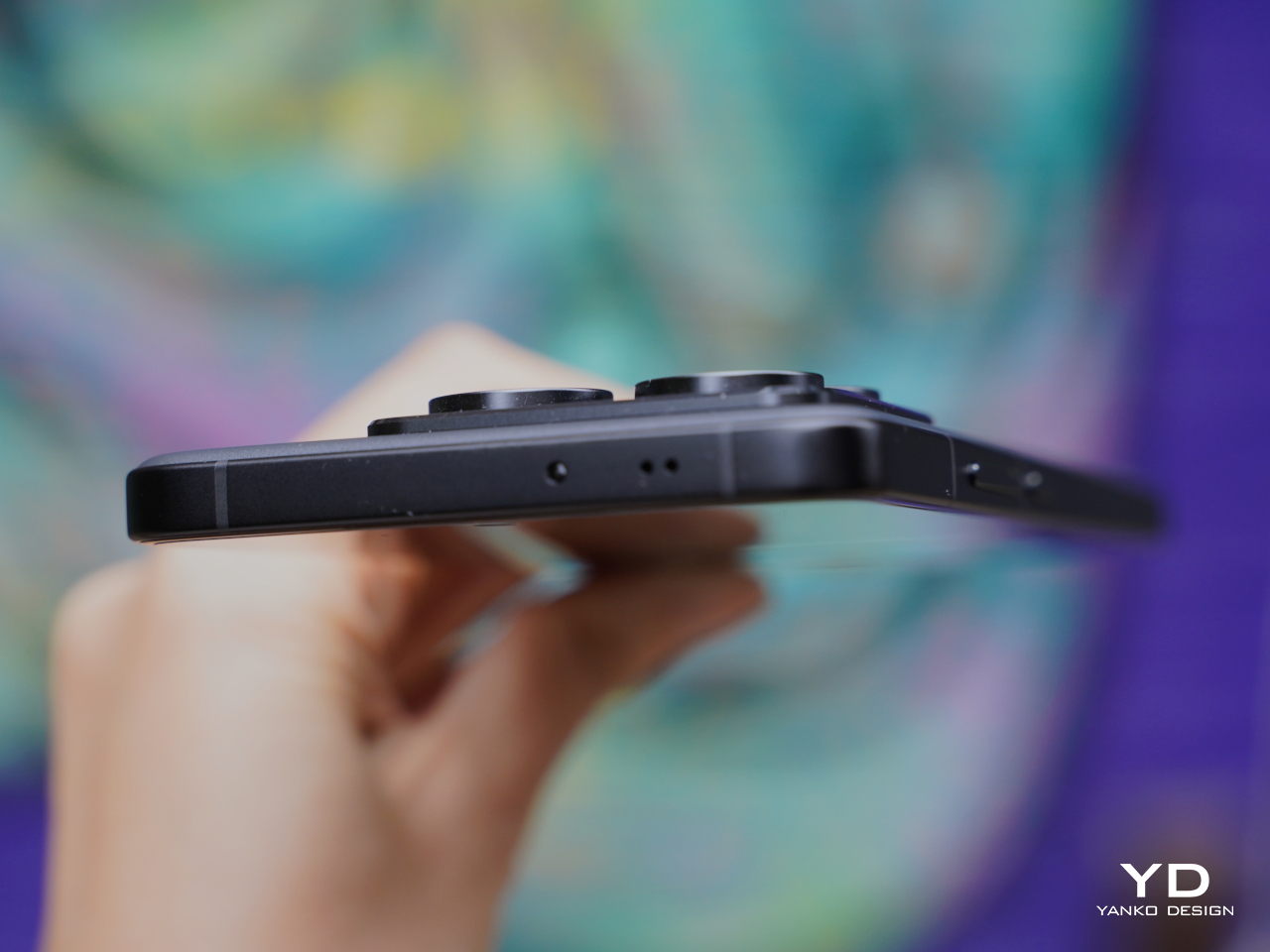
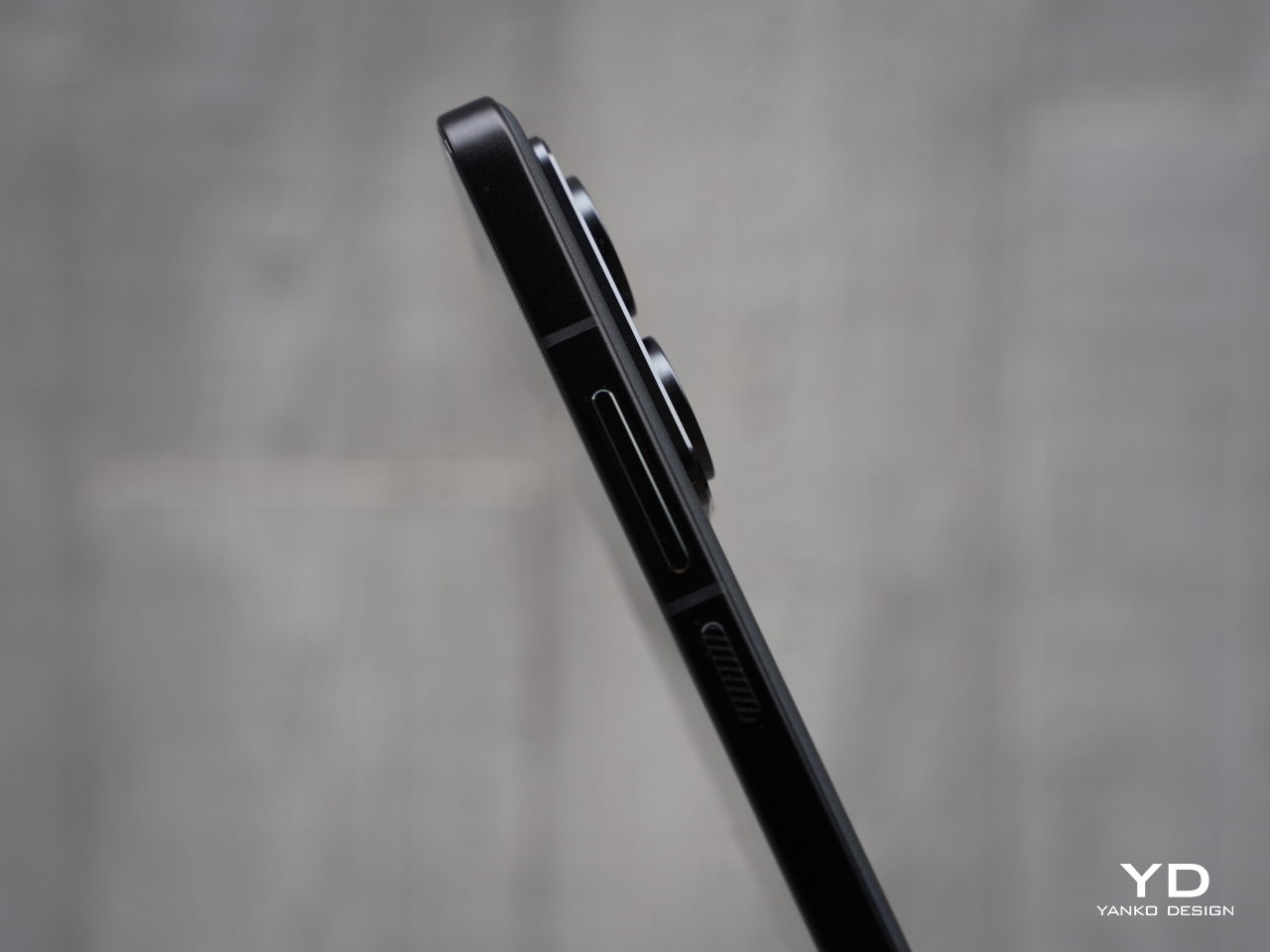
The Xiaomi 14T Pro positions itself as a compelling option for those seeking a high-performance smartphone without breaking the bank. It offers a blend of flagship-level features and a more affordable price point. While its camera may not quite reach the heights of the Xiaomi 14 Ultra, it still delivers excellent results for everyday photography and videography. It delivers much of what it promises on paper, but the real question is whether it is something you will reach for in your next smartphone buy.
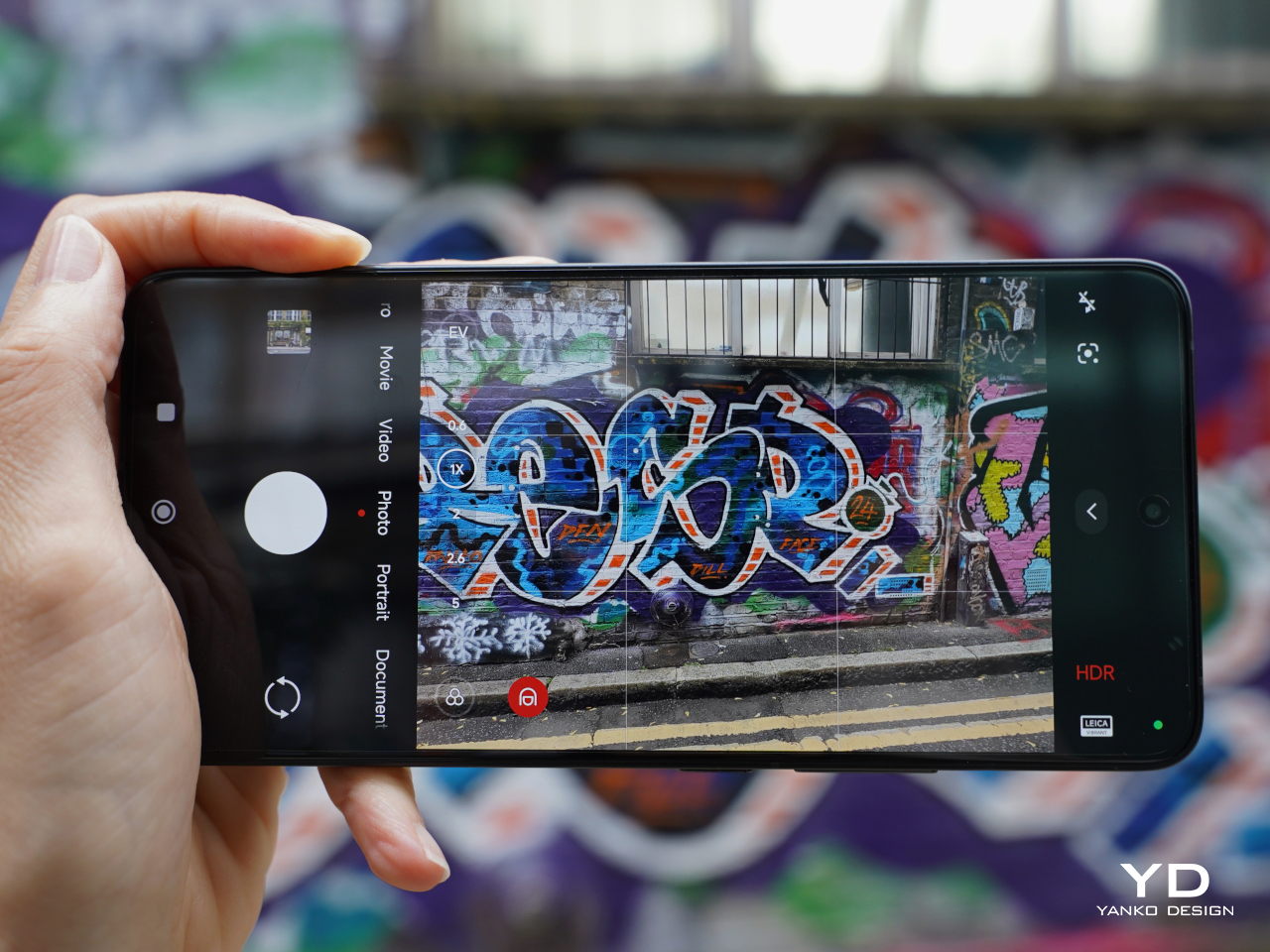
Xiaomi is definitely not the only player in this field, including in the mid-range market where there are dozens of brands and models to choose from. And while the Xiaomi 14T Pro is definitely good, it doesn’t exactly stand out in any specific way. It’s a well-balanced phone, no doubt, but it might overlooked when placed side-by-side with other mid-range phones with better cameras, higher performance, or, more importantly, lower price tags.
The Xiaomi 14T Pro may not be the most exciting phone, but there is no doubt it offers a tempting value proposition. Its solid camera performance, powerful processor, fast-charging capabilities, and vibrant display make it a compelling option for users who prioritize performance and affordability. It may not offer the absolute pinnacle of smartphone technology, leaving that for its more powerful and more expensive non-T siblings, but it doesn’t lag behind in any significant way either. With its combination of features and competitive pricing, the Xiaomi 14T Pro delivers a well-rounded experience that is sure to satisfy the needs of most users.
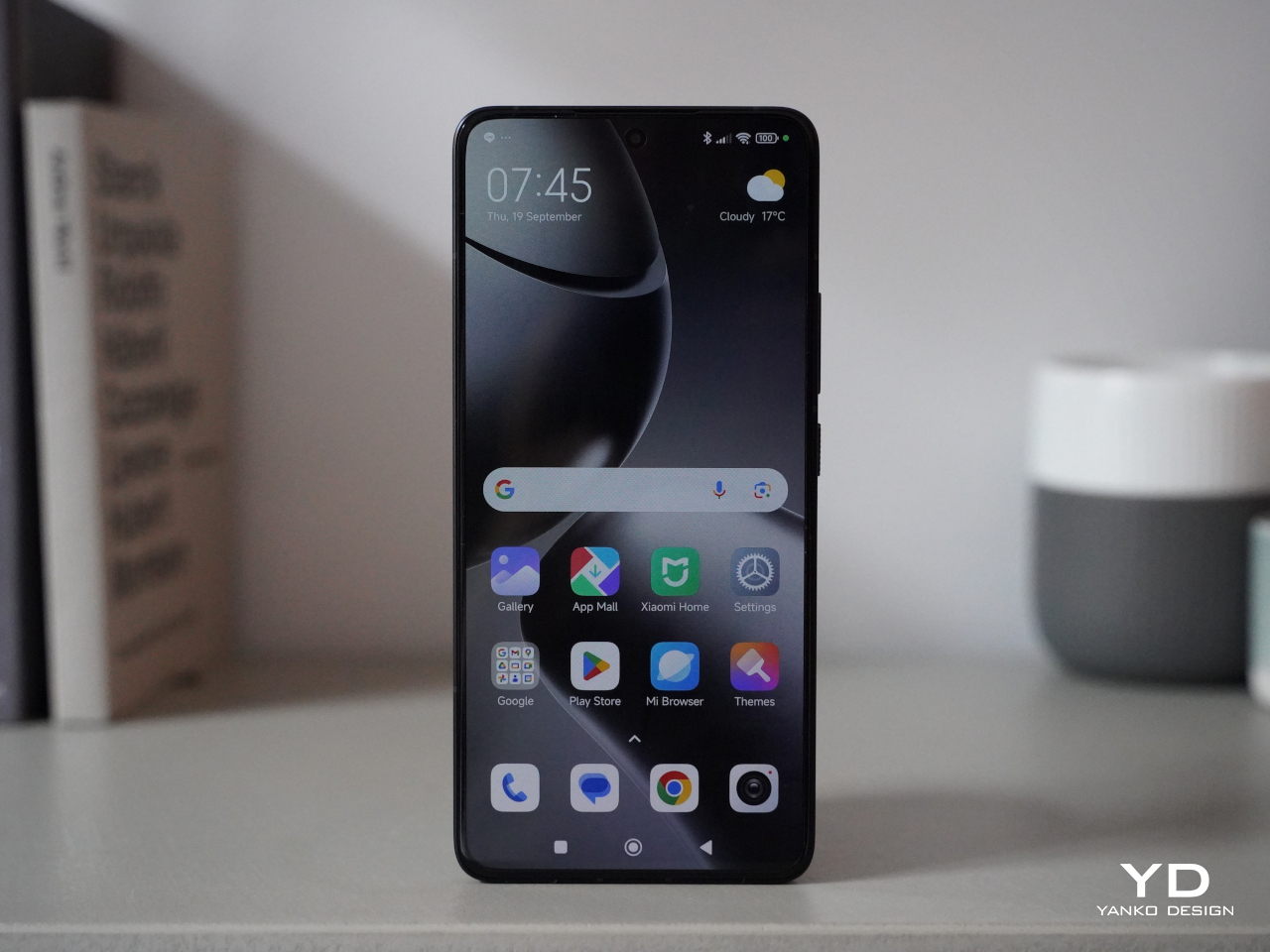
The post Xiaomi 14T Pro Review: Flagship Features Without the Flagship Price first appeared on Yanko Design.
![]()
In the beginning, Google was content to let its hardware partners shape people’s impressions of the Android mobile platform. With the launch of the first Pixel phone in 2016, however, it started to reveal its own vision for Android, not just in terms of software but for the overall user experience. Of course, visions and priorities change over time, and so do the focus and design for Pixel phones. With everything these days revolving around AI, it’s no surprise that Gemini, Google’s own AI platform, is at the heart of the new Pixel 9 series. But are these phones just vehicles for Gemini or do they have more to offer? With the smaller Pixel 9 Pro and the extra-large Pixel 9 Pro XL in our hands, we give Google’s latest smartphones a spin to see what all the fuss is about.
Designer:
Remember the “Panda Phone,” a.k.a. the Google Pixel 2 XL? Pixel phones have always had rather distinctive designs bordering on being playful and fun. But as the phone line matured, so did their designs. Compared to the very first Pixels, the Pixel 9 Pro is more mellow, subdued, and grown up. Even the colors are a bit muted compared the last year’s selection. And it’s actually all for the best.
Google Pixel 9 Pro
Google Pixel 9 Pro
Google Pixel 9 Pro
The Pixel 9 Pro now competes in a market where the previously young generation are now young adults and budding professionals. Tastes and needs change, and product design needs to adapt. Gone is the distinctive but divisive “visor” camera bar, now with an equally eye-catching but more modern-looking pill. It still sits across the width of the phone but leaves some space at the sides. While this gives the Pixel 9 Pro a more unified and mature appearance, it also makes the past dual-tone color combinations impossible to implement, at least not without some superficial gimmick.
The change in camera design also frees the Pixel 9 Pro to finally adopt what is now regarded to be a more contemporary convention: flatness all around. The edges are flat and, at long last, so is the back. There will be many that will disagree, definitely, but it’s a change that’s a long time coming either way. The four corners are still very much curved, of course, but this pillow design not only softens the appearance of the Pixel 9 Pro a bit but also literally softens the feel in your hand. One curious detail is that the SIM card tray at the bottom is also curved to follow the contour of the phone’s corner. It shows an attention to detail you might have come to expect from a certain fruity company but not from Google.
![]()
Overall, the Pixel 9 Pro gives off an aura of professionalism, maturity, and subtle elegance. It highlights the premium materials that Google has always been using but now feels more noticeable. Yes, it’s still playing up some of the fun things you can accomplish with the phone, especially with generative AI, but that is now a function of the user experience rather than the phone’s aesthetics. It’s almost as if Google wanted to show that, yes, the Pixel 9 Pro is now all grown up so you don’t have to feel shy about taking it out in the boardroom or in galas.
Disregarding their foldable sibling, the Pixel 9 series this year comes in three models but only two sizes. Both the “plain” Pixel 9 and Pixel 9 Pro come with 6.3-inch screens while the Pixel 9 Pro XL enjoys a much larger 6.8-inch screen. Except for the rather large $200 price difference, there almost isn’t any significant reason to go for the non-Pro model when the Pixel 9 Pro comes in that same handy size but also offers a lot more, well, pixels.
And handy it truly is, making the Pixel 9 Pro easier to hold and operate, even with one hand. The premium materials, particularly the matte glass finish, offer a good grip, and those flat edges sink better into your hand than curved ones. And for good measure, that horizontal camera island gives your index finger a good resting spot, almost like a built-in grip. That camera “pill” design also has one advantage when the phone is laid on a table: it doesn’t wobble.
![]()
In that context, the Pixel 9 Pro XL is obviously harder to handle, but that’s the price you’ll have to pay for a much larger screen. In terms of materials and design, it’s equal to the smaller Pixel 9 Pro, but unless you have very large hands, chances are, you will be gripping the phone harder than normal, at least if you’re holding it with one hand only. It could lead to a bit of strain and tiredness in the long run and a bit less confidence in holding the phone overall.
The Pixel 9 series also debuted Google’s fourth-gen self-made silicon, the Tensor G4. From the very beginning, these processors were made with AI and machine learning in mind, hence the name, and it definitely shows here, for better or worse. If you will be judging solely by benchmarks, you might come off pretty disappointed. It definitely lags behind the latest Qualcomm Snapdragon 8 Gen 3, let alone Apple’s new A18, but don’t let those numbers fool you. The Pixel 9 Pro and Pro XL perform quite well in real-world scenarios, and even better when AI is involved, to no one’s surprise.
![]()
If there’s one actually unfortunate aspect of the Tensor G4, it would be its continuing thermal woes. It doesn’t get burning hot, mind you, but the Pixel 9 gets noticeably warm sometimes even under moderate load. This is even more pronounced in the smaller Pixel 9 Pro, perhaps due to its smaller size. More than just some discomfort, this could affect performance, especially in graphics, where the Tensor G4 is forced to throttle sooner to lower the temperature faster.
![]()
Pixel phones have always been great in photography, and not always because they have great camera hardware. From the very beginning, Google has relied on computational photography to do more with less, and it has been quite successful at that. This year, it didn’t even skimp on the hardware, giving both Pixel 9 Pro and Pixel 9 Pro XL the same powerful trio of cameras: a 50MP main camera with OIS, a 48MP periscope telephoto camera with 5x optical zoom and OIS, and a 48MP ultra-wide shooter.
![]()
![]()
As you can probably guess, the combination of decent hardware and even more advanced software results in rather impressive photos and videos. Details are rich, colors are accurate, noise is low, and even a 10x “hybrid” zoom results in decent captures. That’s true even when the lighting isn’t perfect, though there are times when you can catch that the Pixel 9 did a little too much processing to compensate. Of course, there are also plenty of AI features at work here, and that’s also when things can get a bit spotty. Zoom Enhance might sound and look great on CSI, but you might end up catching the wrong person if you rely on the Pixel’s sometimes erroneous guesswork.
![]()
![]()
![]()
![]()
AI is, of course, the bread and butter of the Pixel 9 Pro, almost to the point that you could say that it is its raison d’être. Gemini Advanced and Gemini Live, in particular, take center stage in any Pixel 9 discussion, and it is where the phone both shines and, to some extent, fails. No, it’s not that it flops in performance or believability. In fact, it’s scary good that you might even start to worry about the future of humanity. The problem lies in what can be considered really useful and what is just fluff, and, in the final analysis, whether the Pixel 9 Pro has any value without those.
The Pixel 9 Pro is naturally overflowing with AI features. Gemini Live ventures into uncanny valley with its natural sounding voices and conversational capabilities, though you might want to always fact-check before driving to a recommended restaurant that closed years ago. Call Notes is going to be a lifesaver for people who always find themselves in online meetings, and thankfully Gemini openly declares its presence to let other people know there’s an invisible participant. There are also the basics like summarize for long articles and, of course, translate.
![]()
![]()
![]()
And then there are the AI features for more “creative” activities, like Magic Editor’s Reimagine which lets you replace the sky or the ground with other elements, basically a photo-bashing tool on your phone. Pixel Studio is Gemini’s version of text-based image editor everyone’s raving or ranting about, except it can’t or won’t generate images of people. And then there’s Add Me, which lets you compose yourself or any other person into the shot by taking two versions. Useful for when you have nobody around to take a group photo and fun for the first few times.
Some of these features can be quite useful, while others feel more like gimmicks to flex Gemini’s AI muscles. And others still feel like they need a few more iterations to become reliable, presuming you’ll even use them in the future. And for all of those features, Gemini takes up a 3GB chunk of the Pixel 9 Pro’s 16GB RAM, whether you use it or not.
Google has clearly set itself apart from other Android phone manufacturers, not just in design or in how it presents Android, but also in how it ensures the health of the planet for every Pixel made. Every year, it steps up its efforts to use more sustainable materials, like how the Pixel 9 Pro frame is made from 100% recycled aluminum and how its packaging is 100% plastic-free.
And there’s the effort to ensure the longevity of the Pixel 9 Pro, both in hardware and software. Google has committed to serving seven years’ worth of software updates, so the Pixel 9 is guaranteed to remain fresh until 2031 at least. That hopefully also means that kinks in Gemini’s results will also be ironed over time and pushed to the Pixel 9 Pro. Google is also working with iFixit to add the Pixel 9 to the self-repair list, providing instructions and official replacement parts. It won’t be a comprehensive selection, but still better than zero.
![]()
Now comes the hard part, determining whether the Pixel 9 Pro and Pixel 9 Pro XL are worth their weight in gold. That “gold” is actually $999 and $1,099 for the Pixel 9 Pro and Pro XL, respectively, and the price gives you the base model with 16GB of RAM and 128GB of storage. Yes, you only get 128GB of internal storage that you can never expand, at least not physically. Of course, Google wants you to use its cloud storage for almost everything, but that paltry capacity is really stingy. And then there’s the hidden cost of Gemini Advanced, which will be a $20 monthly subscription after the first free year runs out. But if people won’t migrate to a paid subscription for those AI features, what will be left of the Pixel 9 Pro?
Without AI, the Pixel 9 Pro is a pretty OK Android phone, but it’s really just a little above average. Yes, the cameras are great and don’t rely on Gemini to produce great results, but they’re not the best in class either. Performance outside of AI is pretty mediocre, and mobile gamers will be left unsatisfied with the results. The Pixel 9 Pro really shines brightest when you take into account AI and Gemini, and there might not be any better vehicle for Google’s AI. But if you’re not part of that crowd, there might be little reason to reach for a Pixel 9 Pro for now or upgrade from a Pixel 8 Pro that will be getting some of those AI features soon anyway.
The Google Pixel is finally all grown up. From a frivolous youth, it has now become a rather dashing and elegant smartphone with a design that can stand proud beside the biggest players in the market. It retains its impressive camera performance thanks to a combination of contemporary camera hardware and improved imaging algorithms. There are some hardware choices that make little sense in this day and age, such as the 128GB base storage and 27W charging for the Pixel 9 Pro. Its focus on AI, however, is both its strength as well as its weakness. Gemini’s capabilities are impressive and sometimes downright frightening, but not everyone is completely sold on it, especially with a $999 price tag that will have a $20 recurring monthly cost. There might come a time when these AI features will become standard, but that is still in the near future. That makes the Pixel 9 Pro a bit of a harder sell today, no matter how beautiful it has finally become.
![]()
The post Pixel 9 Pro and Pixel 9 Pro XL Review: AI Future Today first appeared on Yanko Design.
If Steve Jobs ever knew that YouTube creators would someday run Android on an iPhone and bag a Guinness World Record for it, he probably would have never created an iPhone in the first place. Thankfully there are iPhones – in fact, iPhone 16 lineup is slated for launch today – and we get to see a giant functional replica of the currently top-of-the-line iPhone that measures 6.74 feet tall and weighs roughly 440 pounds.
If you are a DIYer or a tech aficionado there is a slim chance you haven’t heard of Matthew Perks and Arun Maini. The high-profile YouTubers, a.k.a. “DIY Perks” and “Mrwhosetheboss” respectively, have partnered to build a gigantic working replica of an iPhone 15 Pro Max. This humongous iPhone definitely destroys the very idea of a handheld phone, but despite its astounding size, it is immensely functional; which is why it has been adjudged the largest iPhone ever and awarded the official Guinness World Records for the same.
Designers: Arun Maini x Matthew Perks
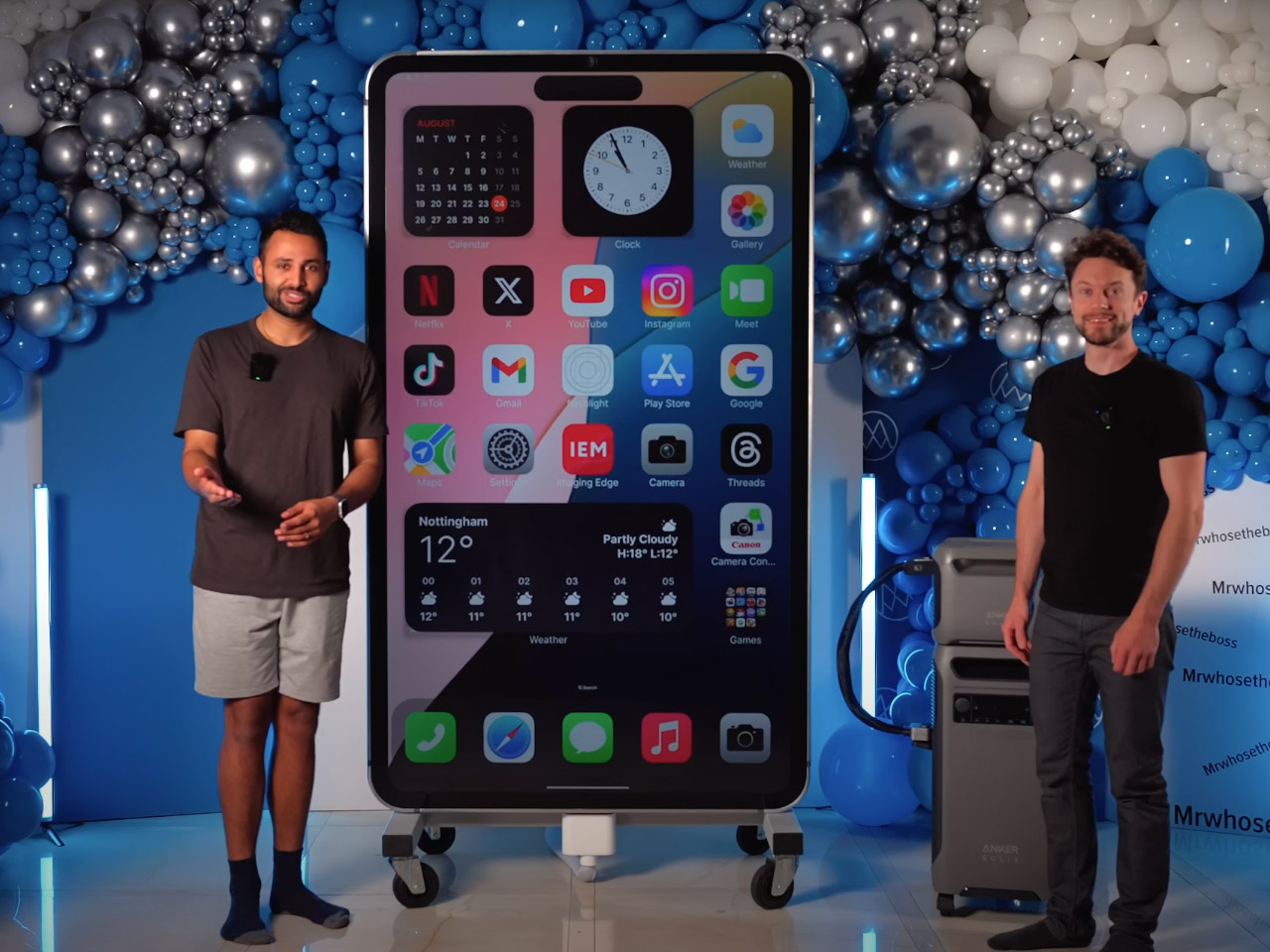
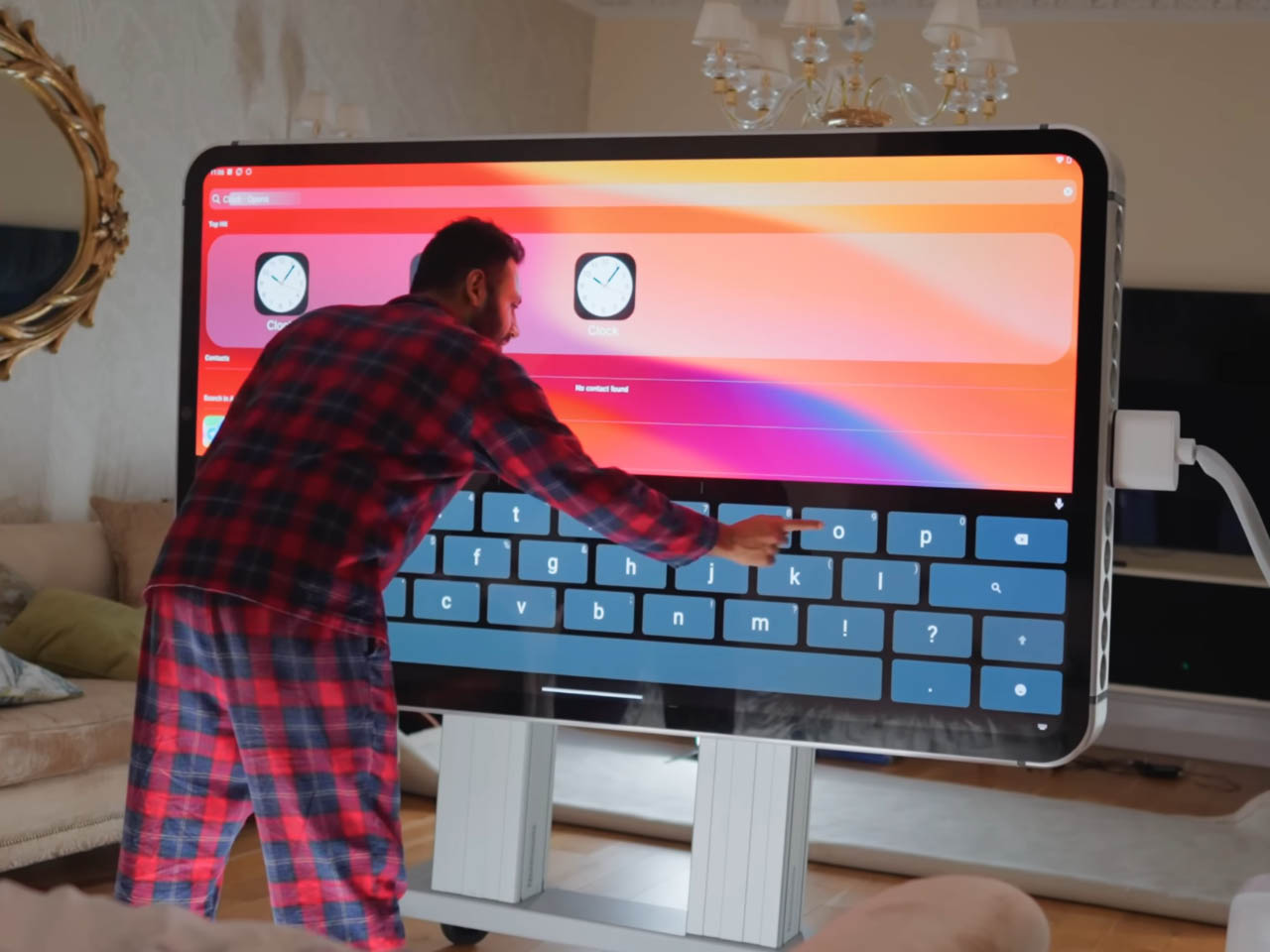
From the videos about the making and the demonstration of its functionality for the record, I was convinced this is a way more powerful iPhone than Apple would ever make. But the excitement diminished slightly on learning that this Gulliver of iPhones in the Lilliput Island of smartphones runs Android with few tweaks and themed skin to achieve the iPhone appearance and functionality.
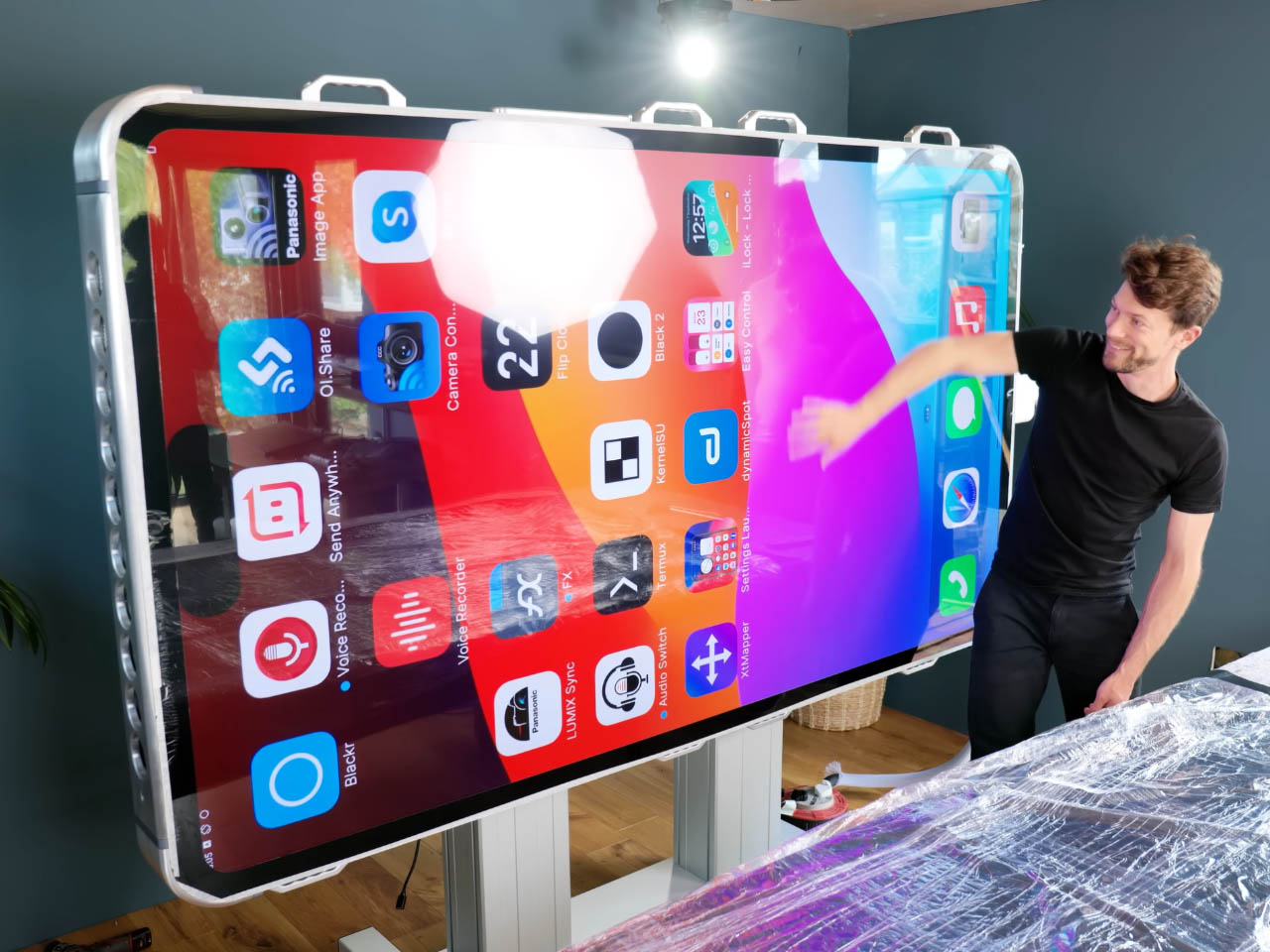

Taking nothing away from this highly detailed smartphone build: I’m back and impressed! And why not, this entire thing is built to the tune of $70,000. The construction starts with a massive LG 88-inch LG OLED TV for the touchscreen display, placed inside a specially designed aluminum casing. The hardware inside is no way short of impressive either.
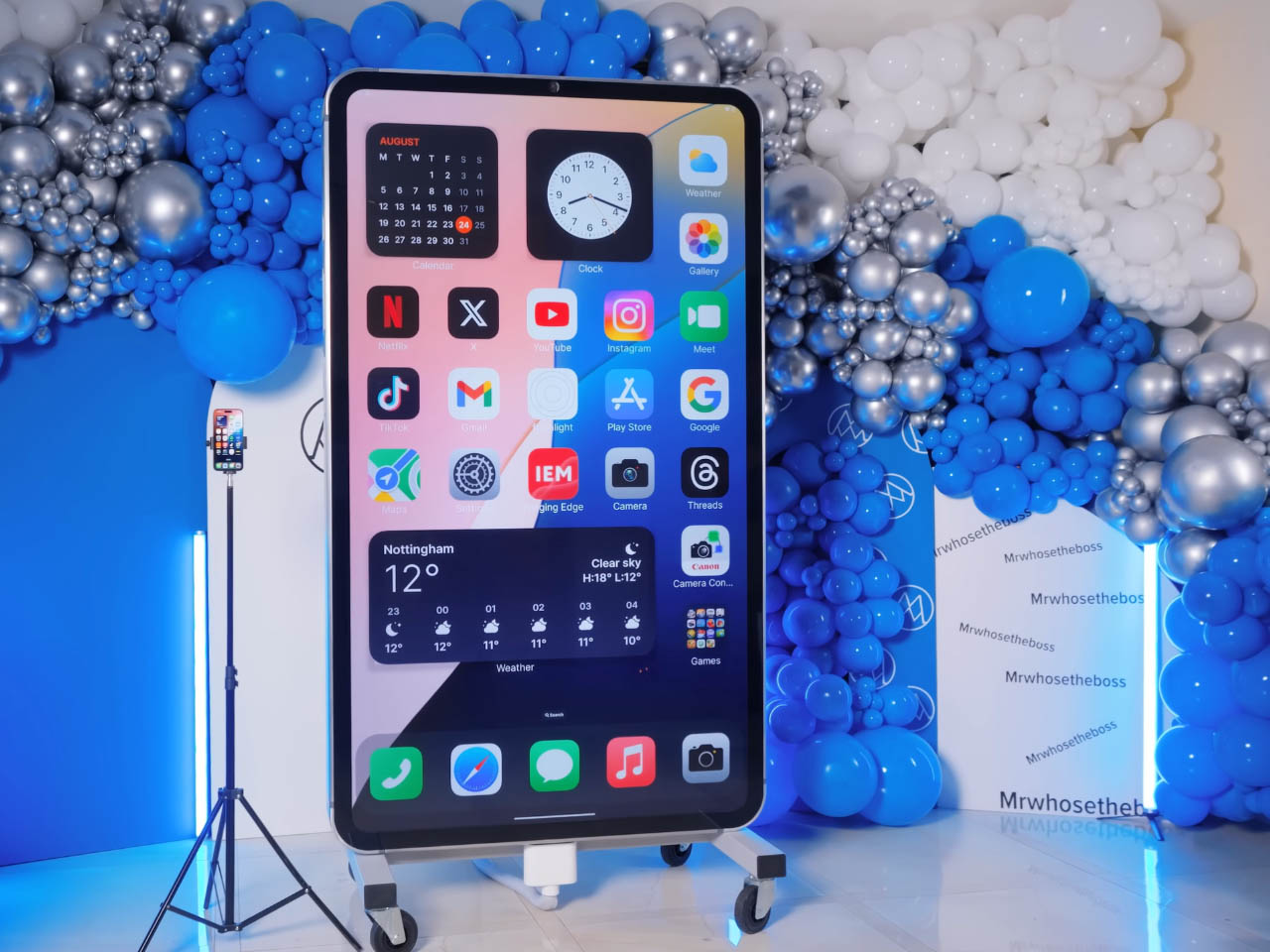

Without going too much into detail, for that you’d enjoy better in the descriptive video above, this big iPhone comes with 128GB of RAM and 4TB of internal storage. The tipple camera array on the back is topped by a 45MP Canon R5 camera, sporting a 28mm lens, and a Sony RX10 Mark 4 to mimic the iPhone 15 Pro Max’s telephoto lens. With the details on the screen and in the body matching that off the inspiration iPhone, the largest iPhone can take impressive photos, recording 8K resolution videos, blast music at 50W, send emails, tap-to-pay for purchases, and even play Flappy Bird that iPhones haven’t been able to download in a decade now.


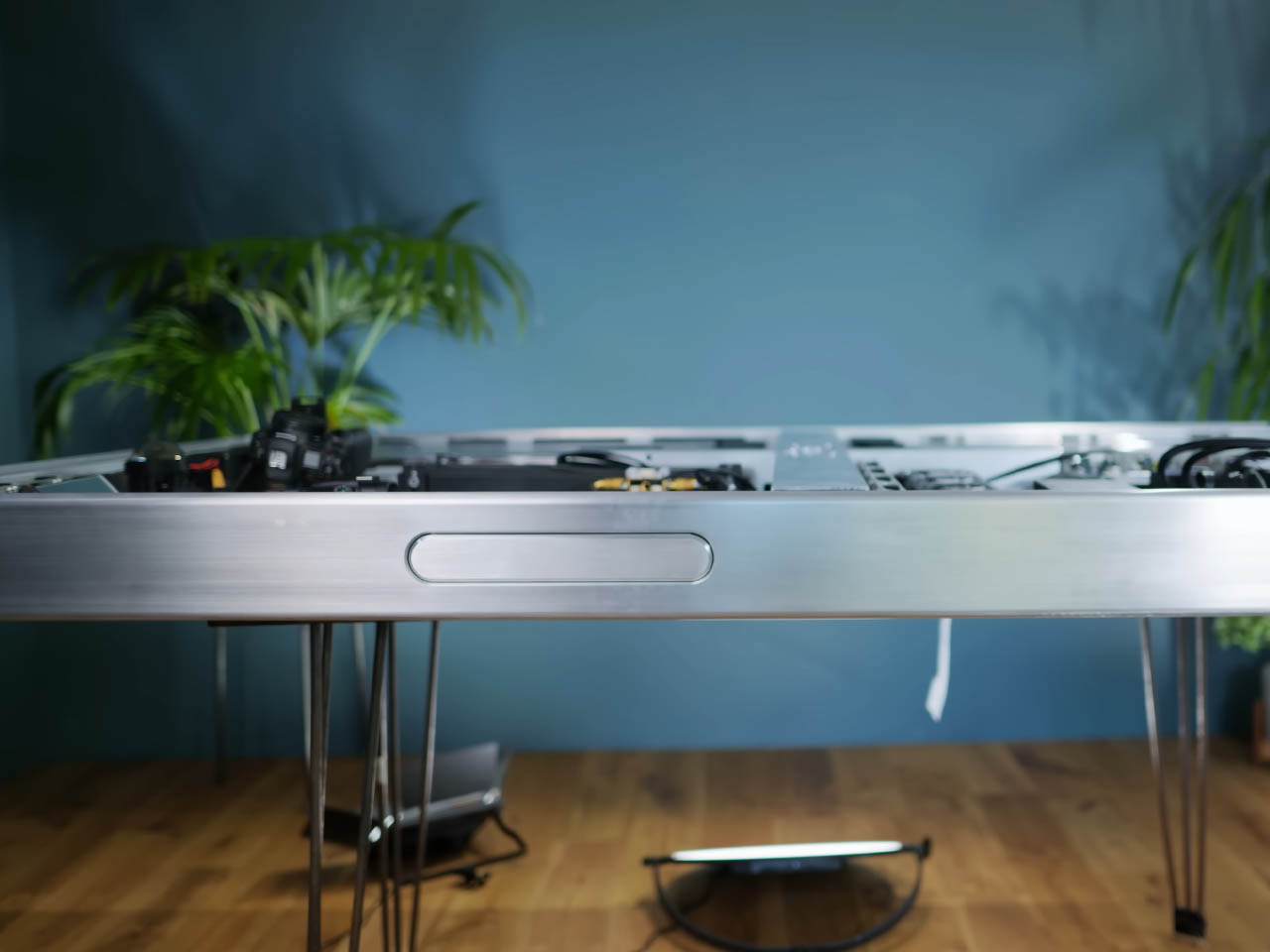
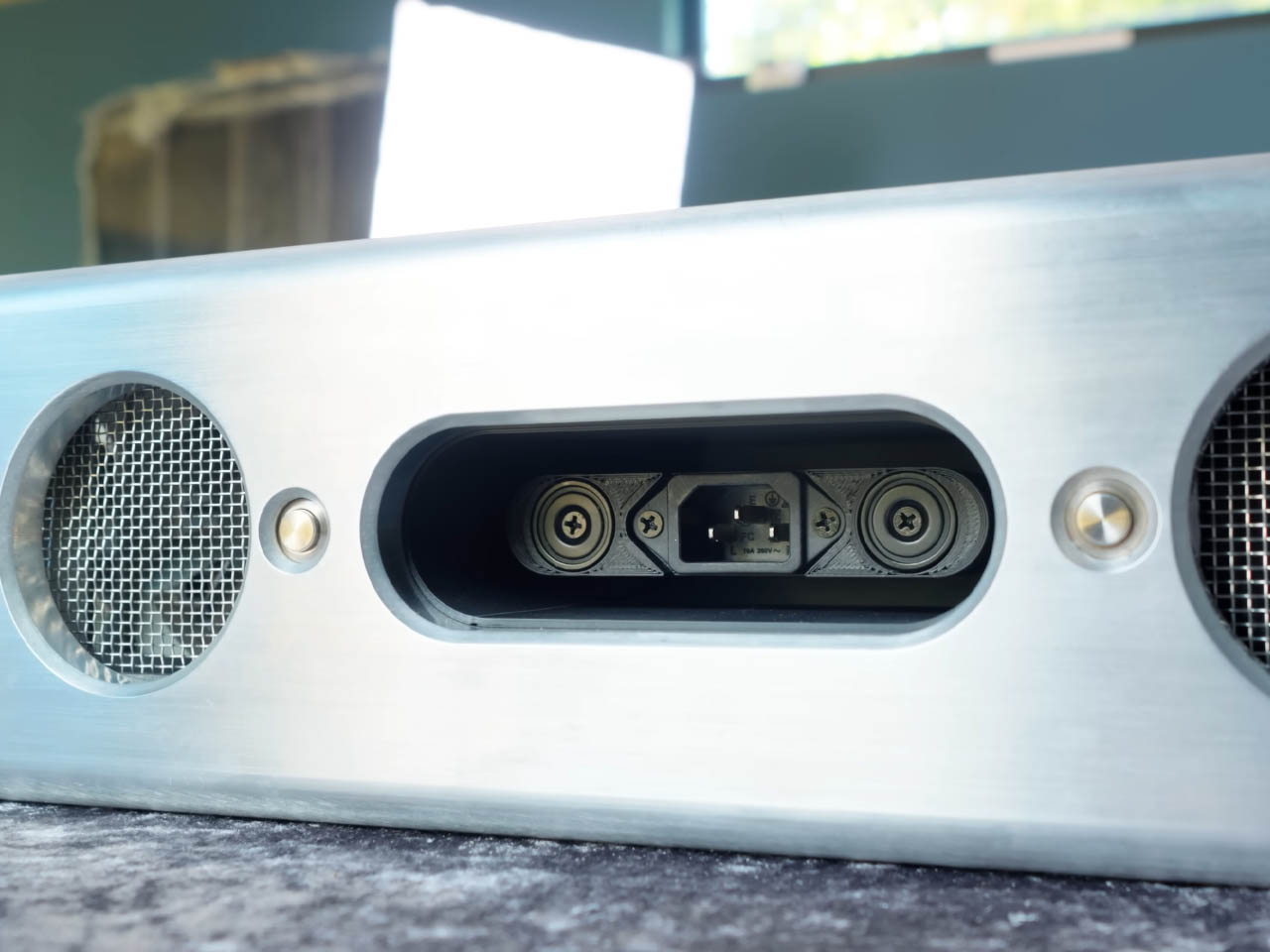


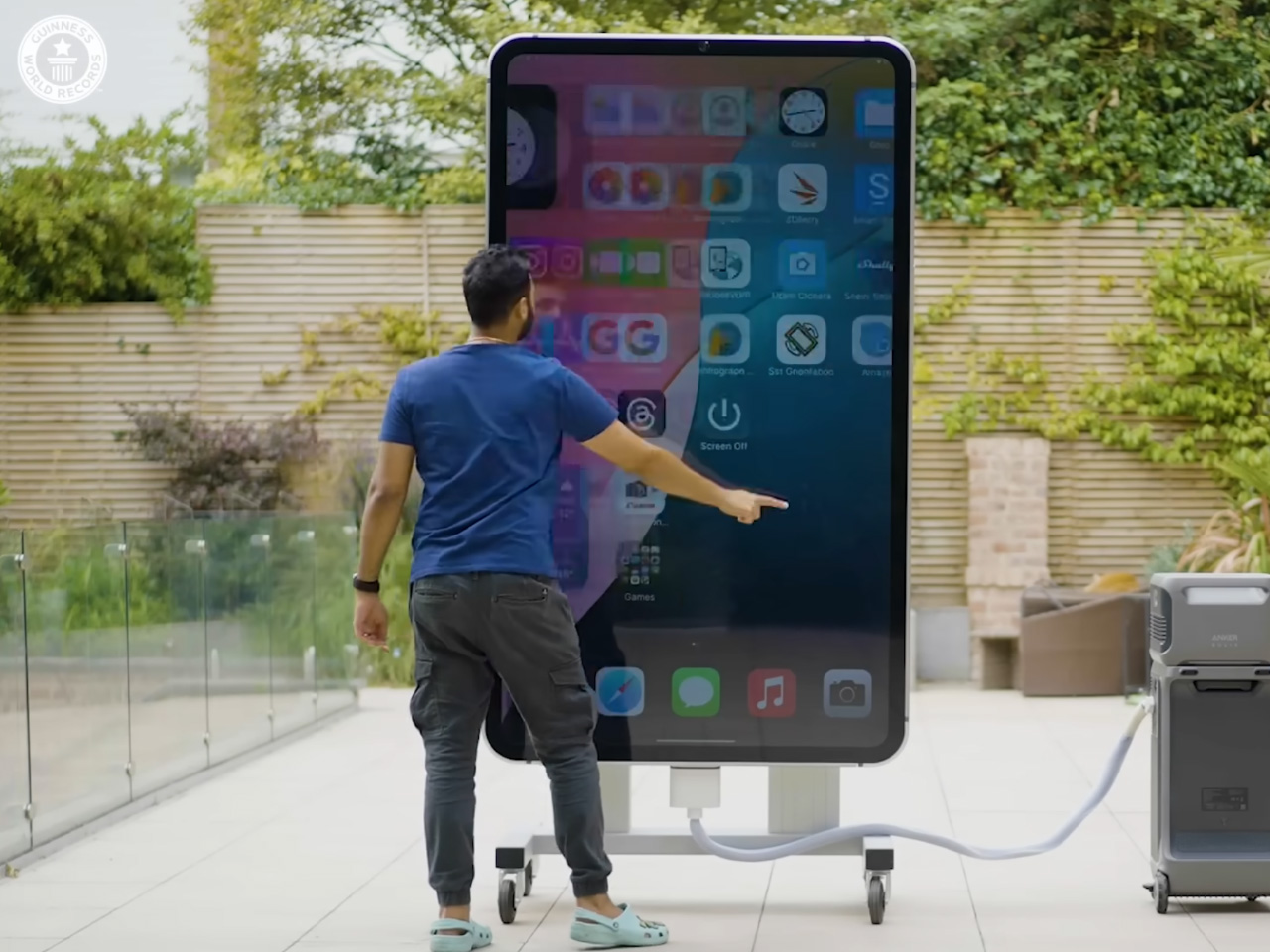


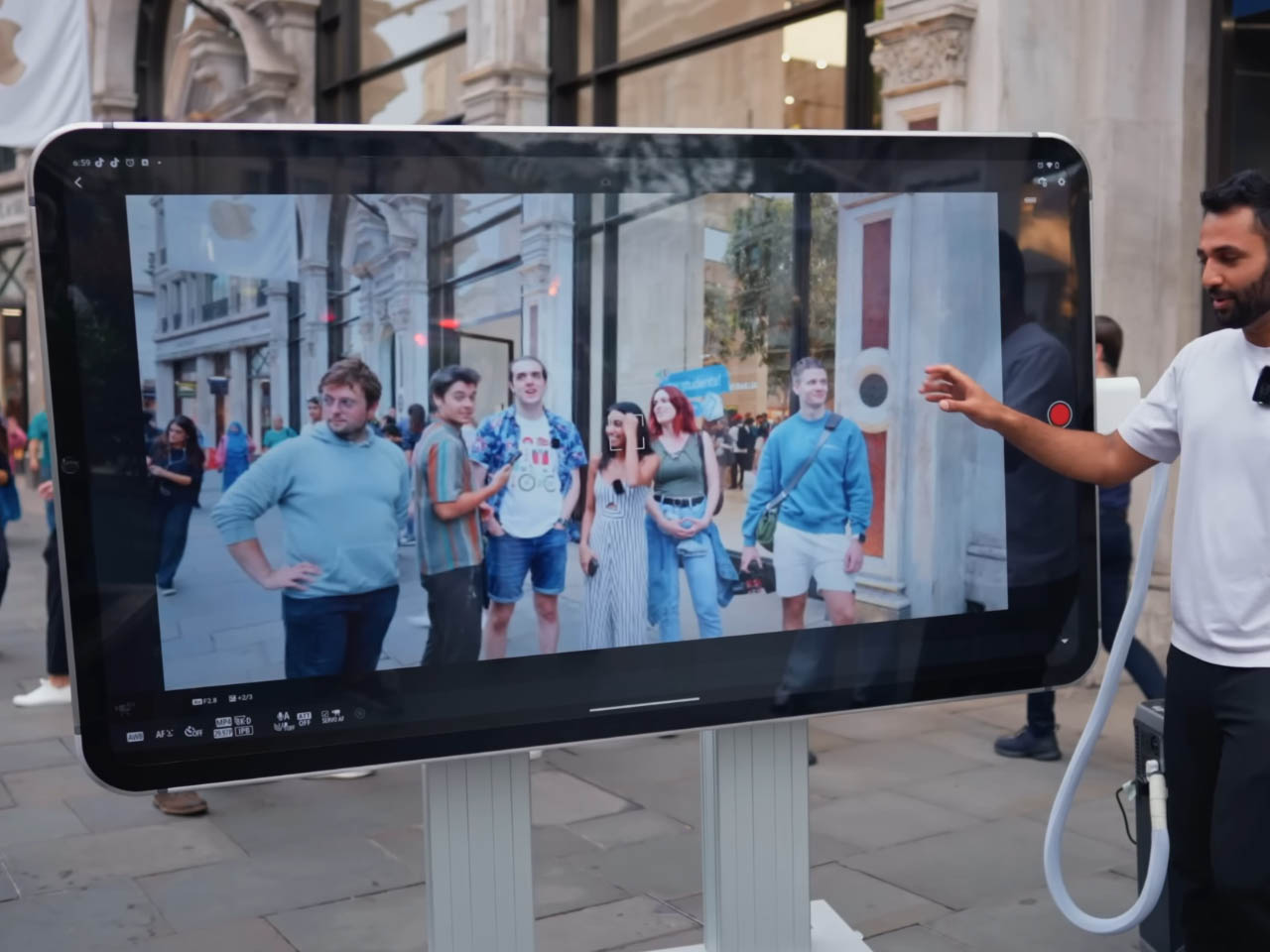
The post 7-foot iPhone 15 Pro Max is the world’s largest iPhone and it runs Android first appeared on Yanko Design.
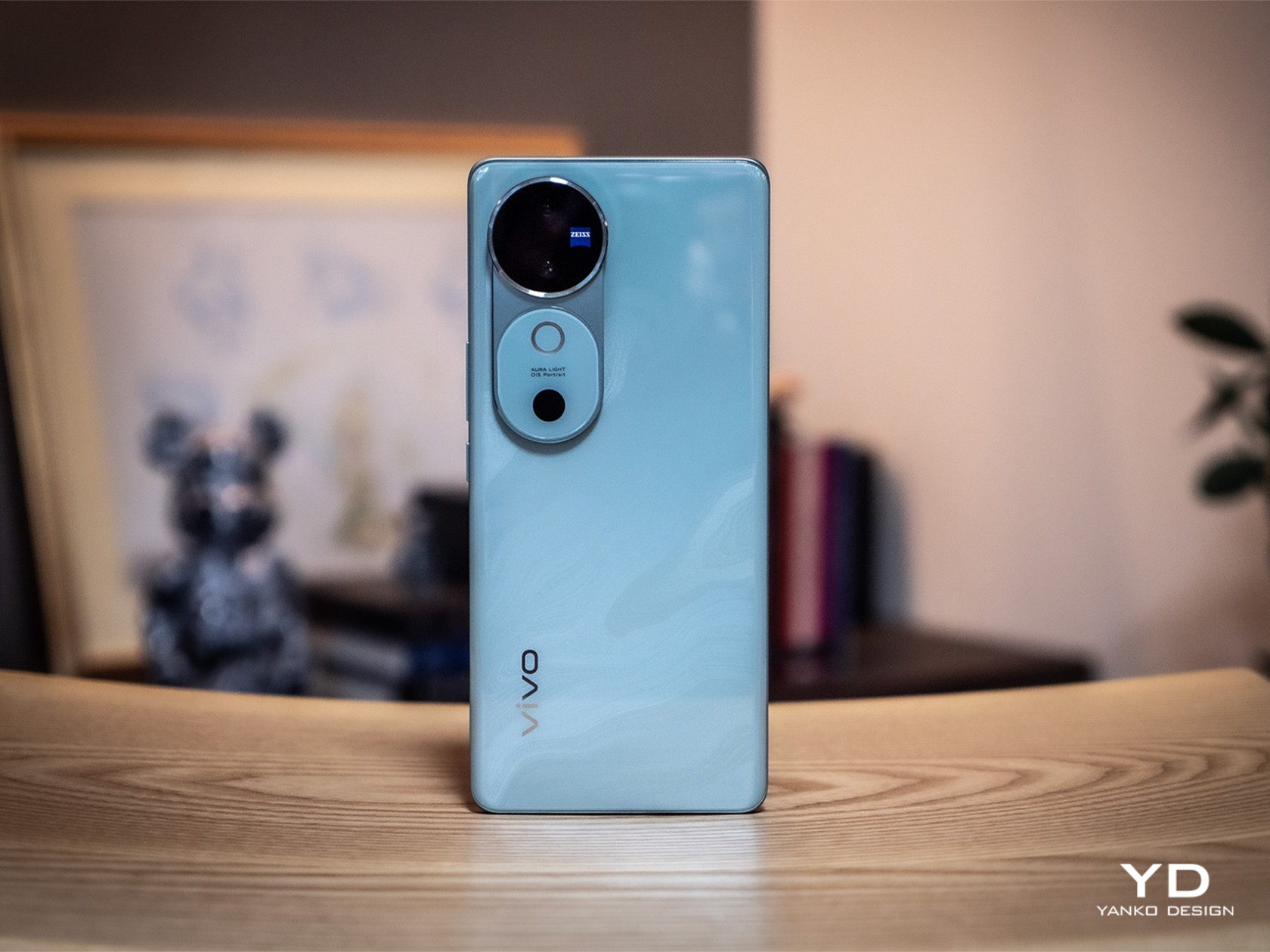
The smartphone market is a very congested and crowded place, not just with multiple competing brands but with each brand putting out multiple models per generation on multiple tiers. You’d think these companies want to just put their best foot forward, but instead, they try to target different audiences and budgets. Of course, there will have to be certain compromises for devices that aim for a lower market tier, but the question is just how much can you sacrifice before all you’re left with is an unusable, unappealing slab of metal, glass, and plastic. That’s the question that the Vivo V40 has to face in light of its well-received Pro sibling, and we give it a good try to see just how well it can perform under certain constraints.
Designer: Vivo
With so many smartphones now sporting more powerful and bigger cameras, it’s no surprise how many are scrambling to fit them in an elegant design and how some are failing to succeed. Given the two 50MP cameras on its back, it’s actually quite a pleasant surprise that Vivo managed to hit the nail on the head with its V40 series. There’s still a noticeable and technically thick bump on the rear, but it is presented in such an elegant way that you probably wouldn’t mind at all.
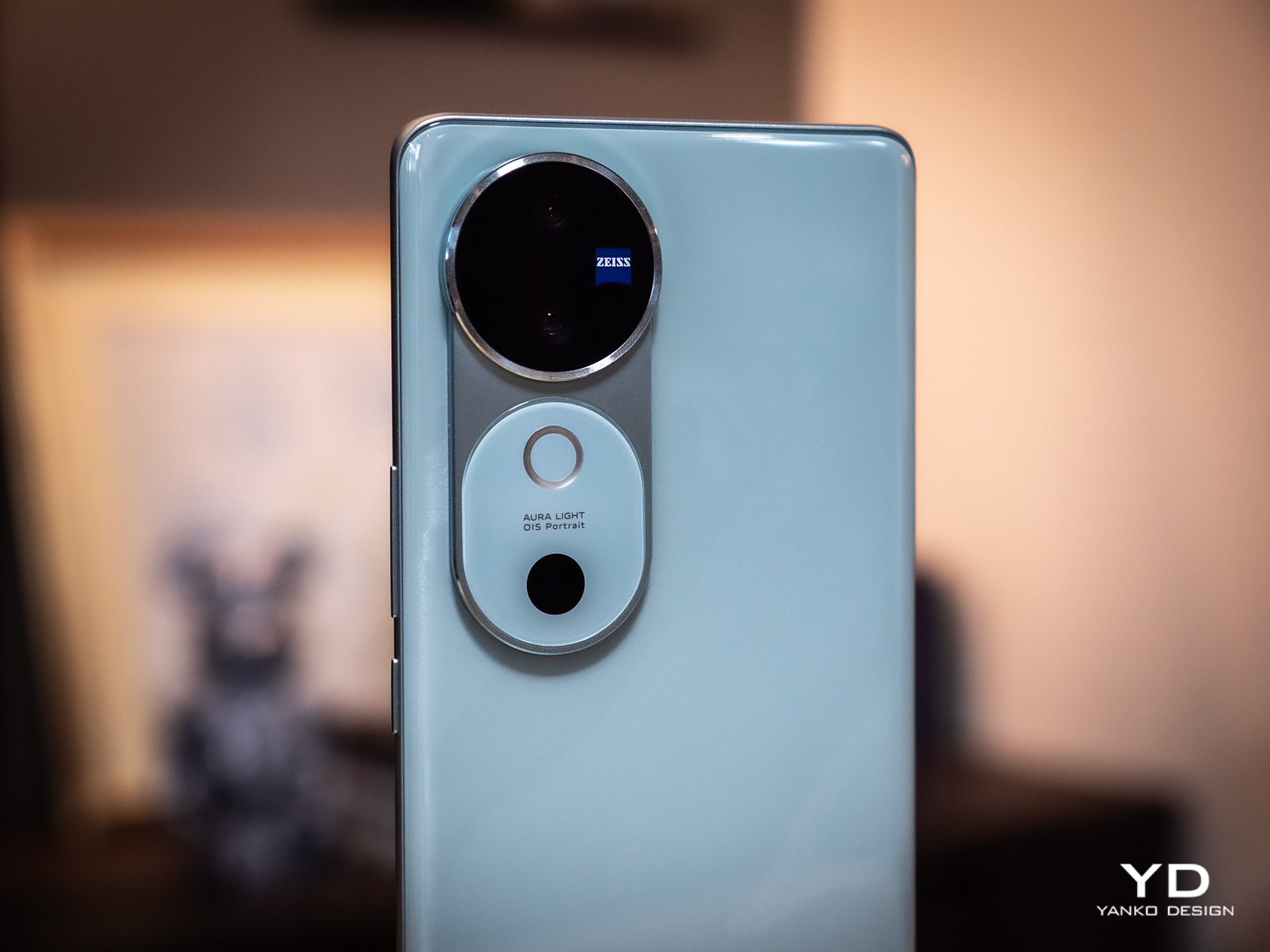
The key to this design is what Vivo dubbed the Gemini Ring, inspired by the constellation of the same name. It pairs two smaller circles in a bigger circle, playing on the “twin” theme. Technically speaking, the lower “ring” with the Aura Light is a bit taller and connects to the ring that houses the actual cameras, resulting in a shape that resembles a sleek keyhole. It’s an interesting visual element that grabs your attention but doesn’t scream at you.
The rest of the Vivo V40’s back is just as elegant as that camera design, with a variety of colors that add an artistic character to the phone. Our review unit, for example, is the Moonlight White which has a few patches of blue that resemble the surface of the moon at night. The back has a very glossy finish which, as you might have guessed, is a fingerprint magnet, though the color of the design at least makes those smudges harder to see.
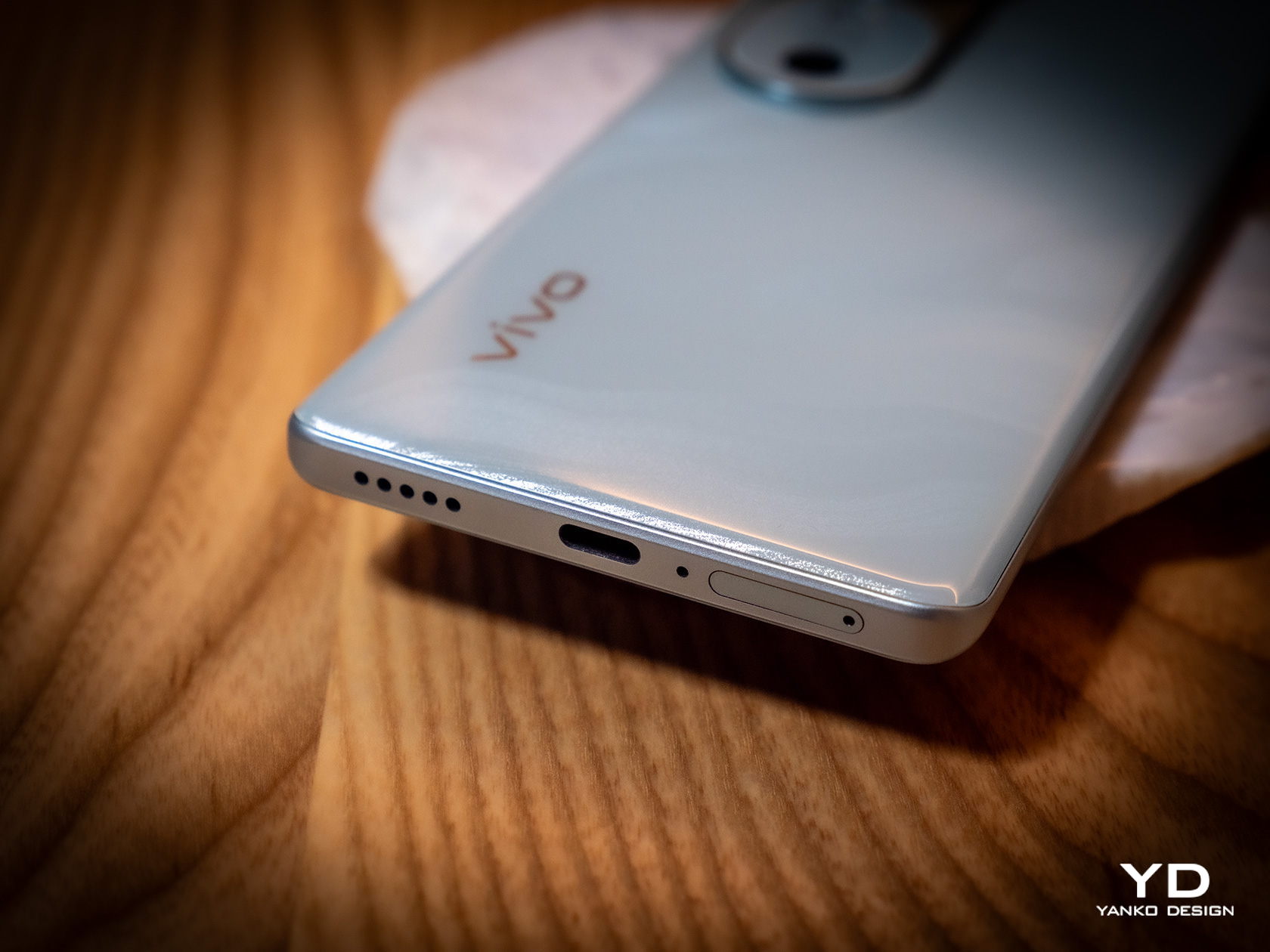
The Vivo V40’s large screen curves to the side, giving it the illusion of a thin profile. We seem to live in an age of flat screens and flat edges, so this “classic” design might offer some relief to fans. It does come with some usability consequences, though, depending on how you hold it, and not everyone finds this aesthetic that appealing these days.
At only 7.58mm thick and weighing only 190g (0.42 lbs), the Vivo V40 is incredibly thin and light, especially when you consider the extra-large battery it packs inside. It won’t strain your hand when holding the phone for a long time, but due to its size, you’re more likely to hold it with two hands unless you’re just idly scrolling away.
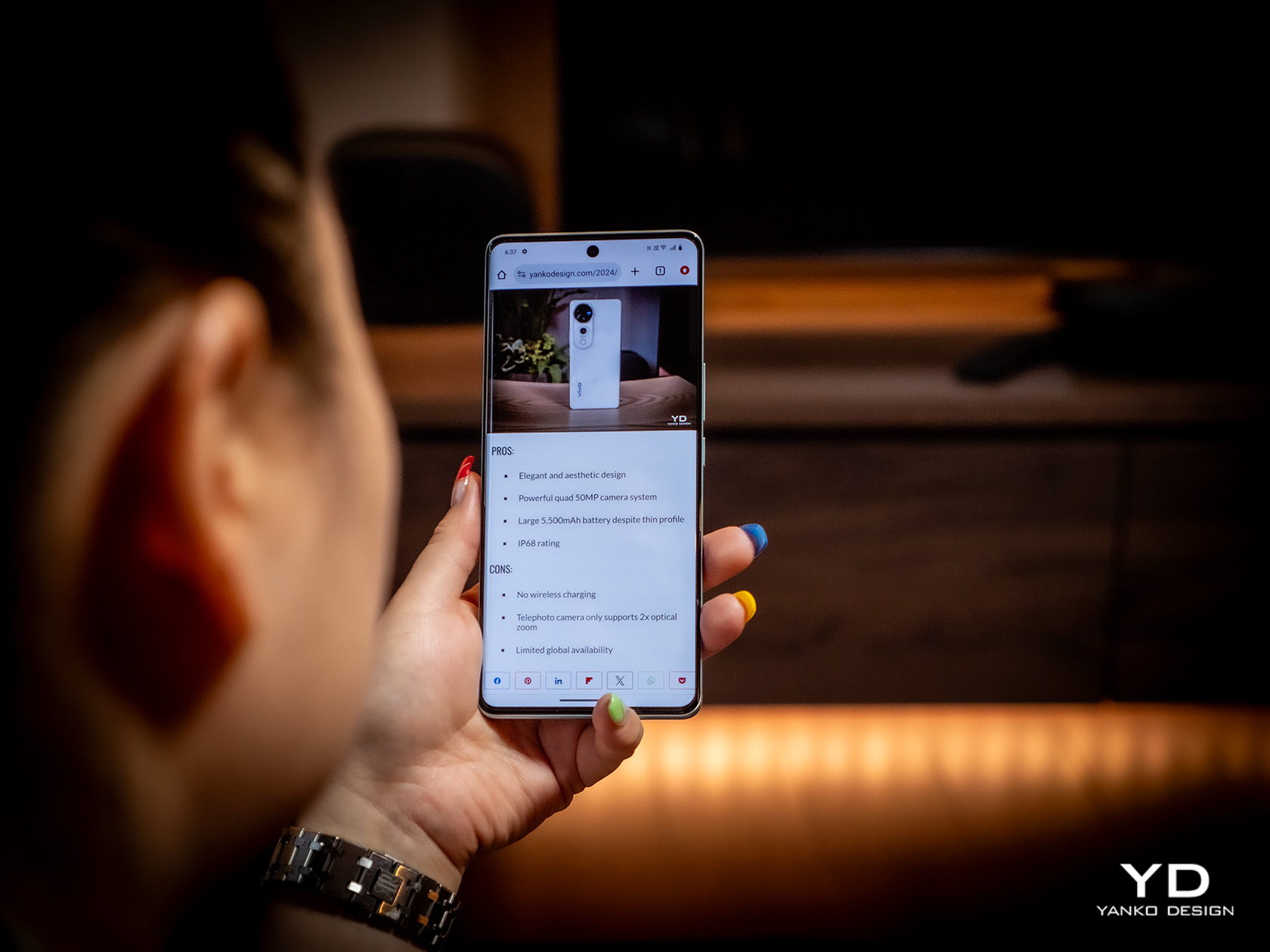
The curved edges of the screen are probably a bit more divisive. More than just a cosmetic design, it means that there will be parts of the screen at the edges that are not always visible, depending on the viewing angle, or might be accidentally triggered by parts of your palm or fingers. It doesn’t happen all the time, otherwise, this kind of design wouldn’t have lasted a year, but it might be something to consider when you notice “ghost” touches from time to time.
Underneath the sleek exterior of the Vivo V40 lies a rather sneaky secret. In many aspects, this is pretty much the Vivo V30 from early 2024, just with a few minor upgrades. It has the same Snapdragon 7 Gen 3 processor and the same basic memory and storage configuration. There are other similarities as well that we’ll get to later, but the bottom line is that, in terms of performance, you aren’t going to see a distinct generational upgrade.
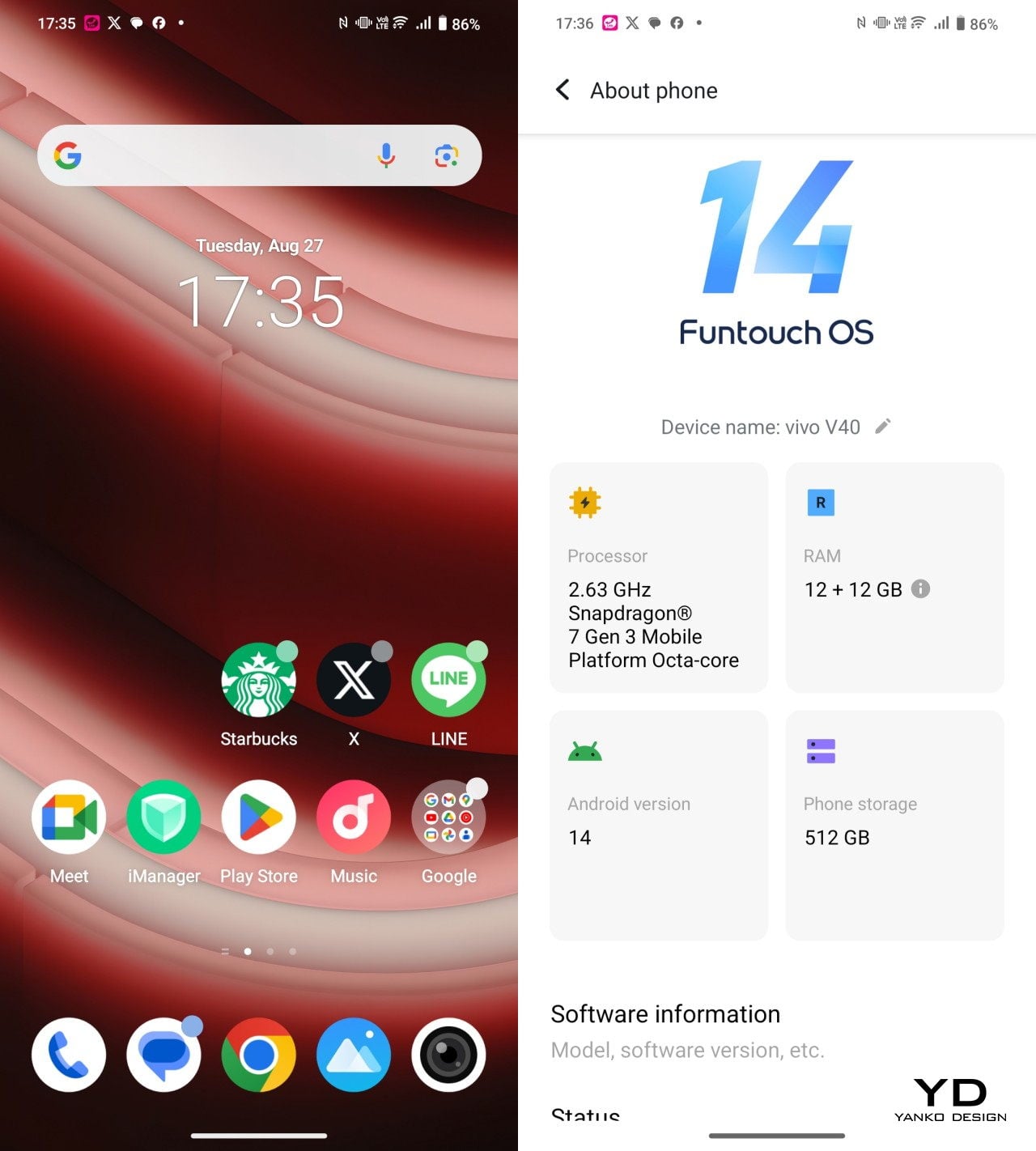
That means that what was true for the Vivo V30 is true for the Vivo V40, which thankfully means you do get a solid mid-range performer. With enough RAM allocation, which is 12GB plus another 12GB taken from the 512GB storage of our review unit, you have plenty of silicon muscle to get apps moving smoothly and fluidly. You’ll have to turn down the settings for games, but you’ll still be able to enjoy the latest action-packed titles. That said, there is a Snapdragon 7+ Gen 3 at this point, so it’s rather disappointing that Vivo didn’t push for that extra punch.
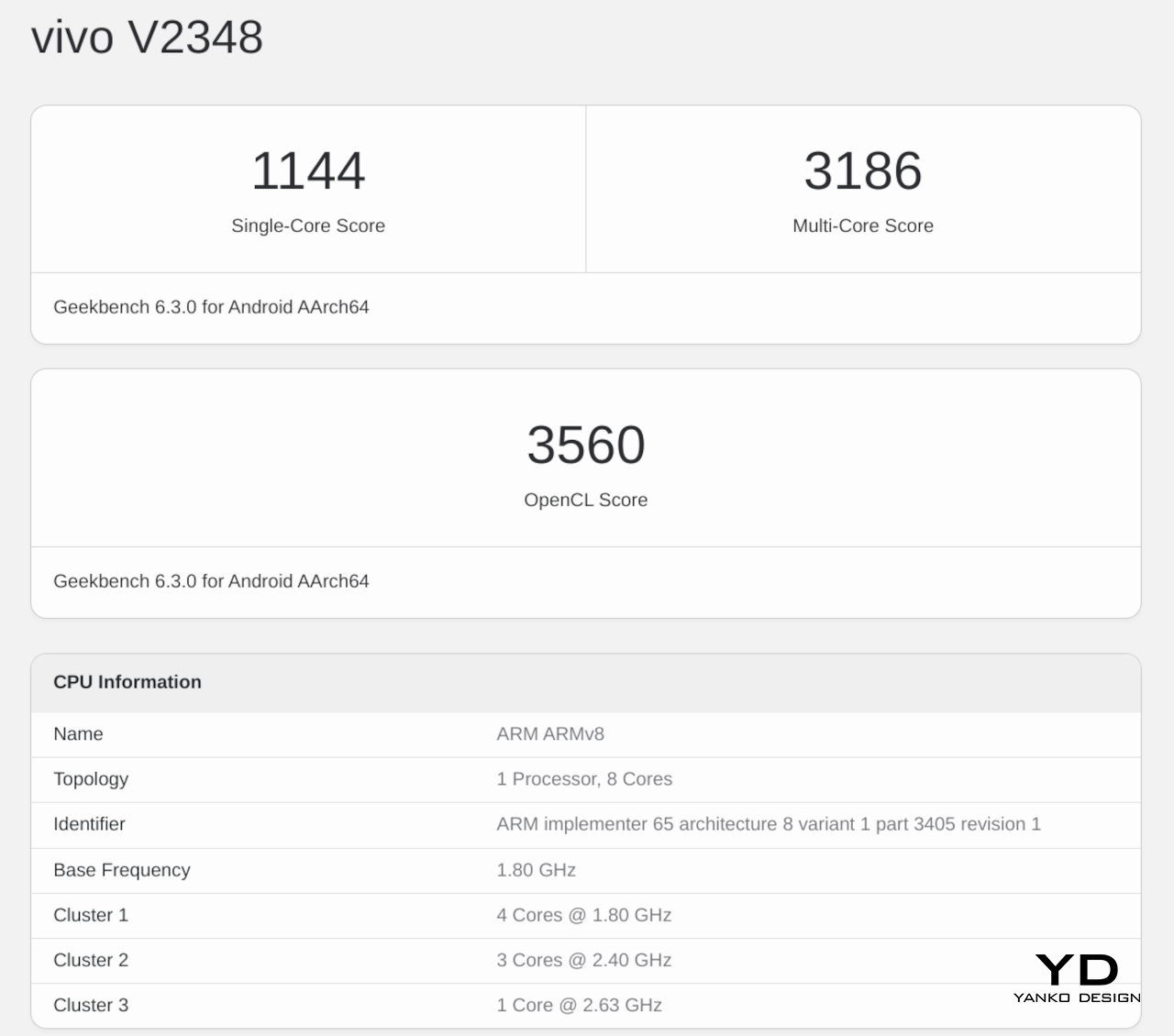
The screen is almost the same, a 6.78-inch 2800×1260 120Hz AMOLED display that’s quite vibrant and crisp. This year’s model, however, upgrades the brightness by a considerable margin, which makes the phone even more usable outdoors. It supports HDR10+ but oddly leaves out Dolby Vision, something that might be of concern to video aficionados.
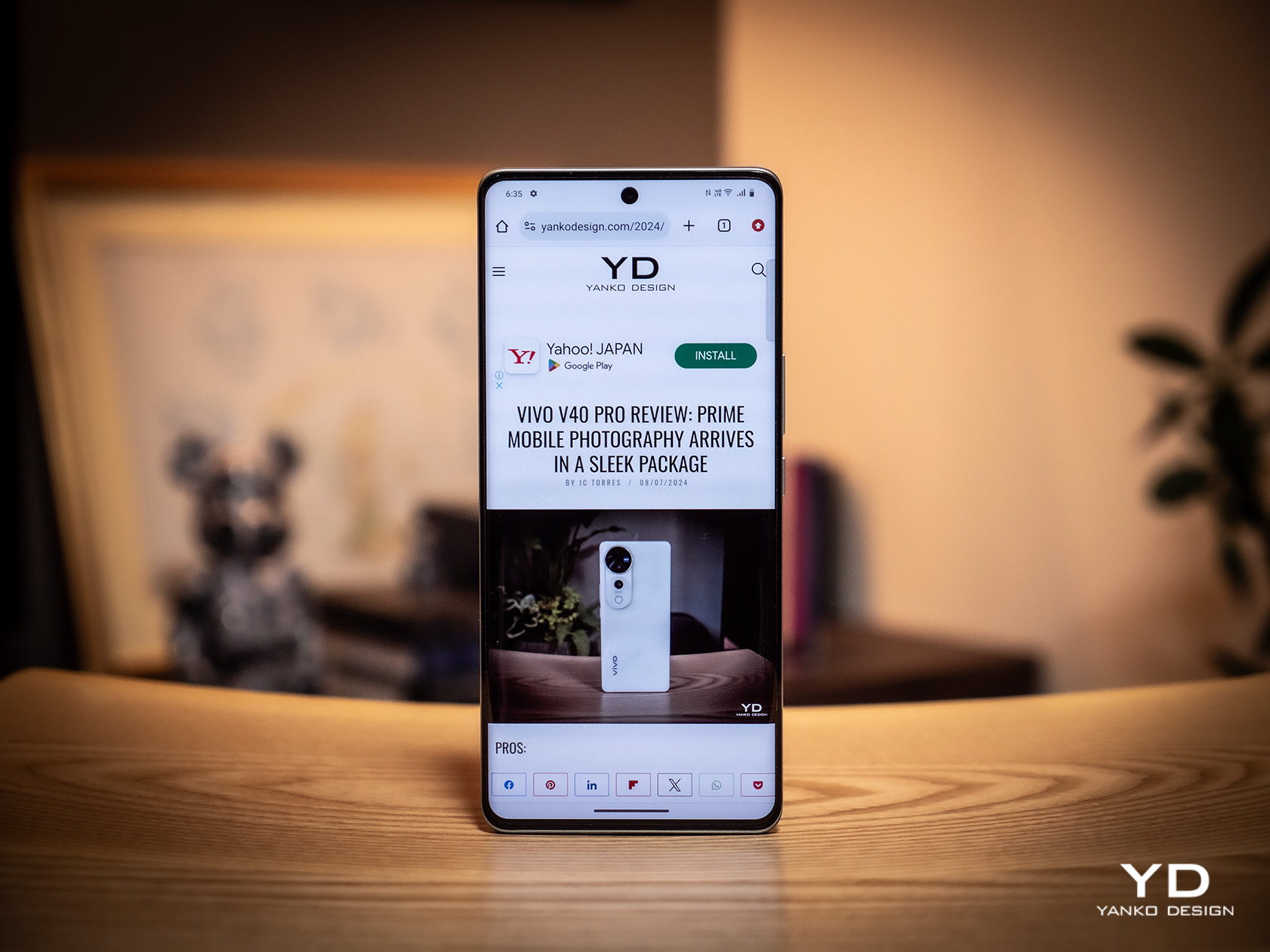
The biggest difference between the two generations is the 5,500mAh battery inside the Vivo V40, a whopping 500mAh increase from its predecessor. It does make the phone heavier and thicker than the V30, but not by much. The battery life gains pretty much make up for that anyway, with an uptime of almost 20 hours, depending on usage. It charges fast, too, at 80W, though not exactly record-breaking. The plot twist here is that Vivo doesn’t include a charger in the box, so you’ll have to find an 80W charger or higher on your own.



The cameras are where it’s all at, of course, and here the Vivo V40 doesn’t disappoint except in one aspect. Again, it’s the same combination of a 50MP f/1.9 main camera with OIS and a 50MP f/2.0 119-degree ultra-wide shooter. The front also gets a 50MP front-facing camera capable of shooting in 4K 30fps, which should probably make you a star in video meetings.


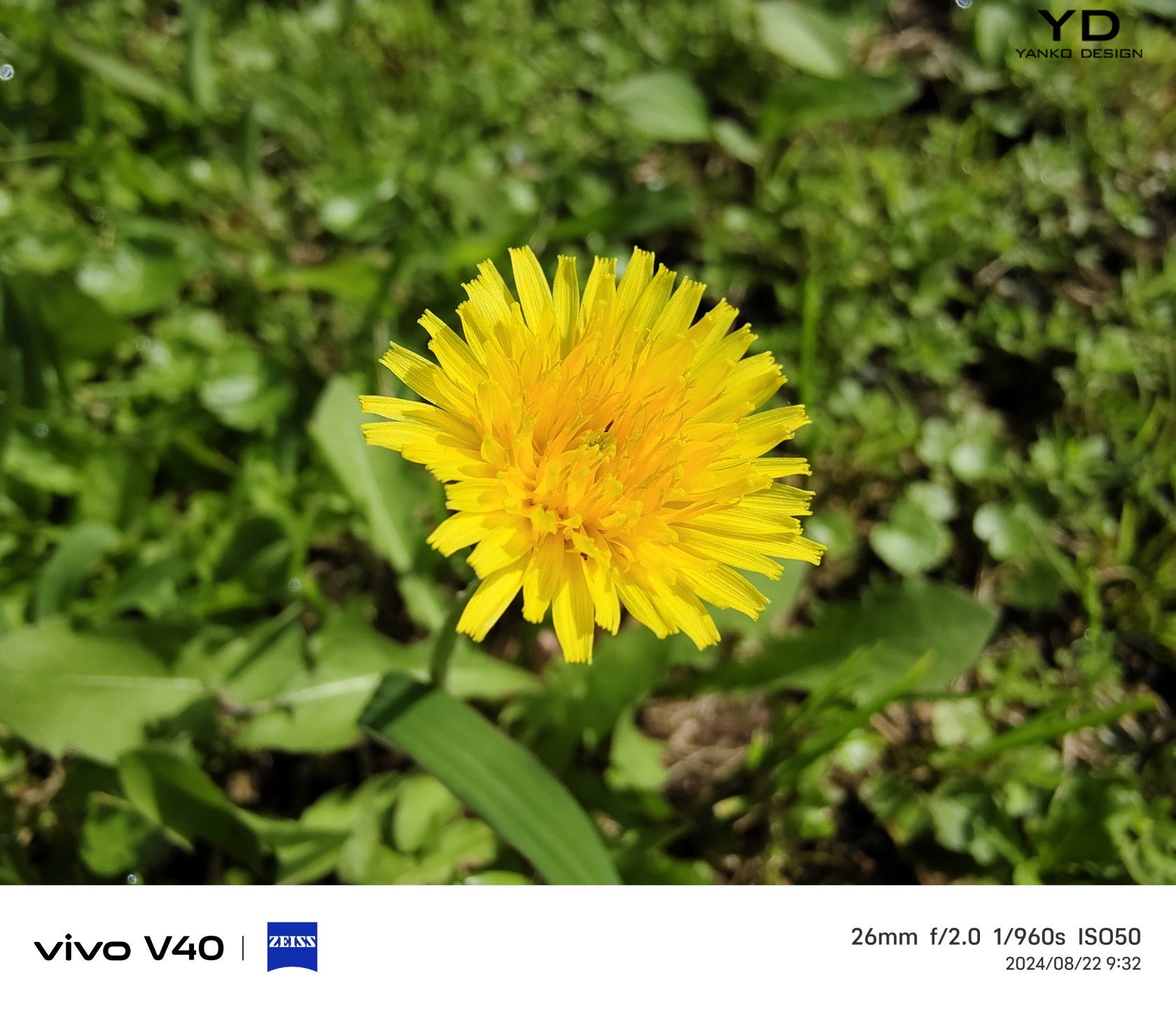
In practice, these ZEISS-tuned cameras deliver as promised, producing detailed and clear shots with natural colors and good exposure. That’s true both in broad daylight as well as low-light or nighttime shots, though the latter sometimes tend to get a little bit overexposed to the point of looking unnatural. Bokeh is pleasant and the separation of foreground and background is quite accurate. The Studio-quality Aura Light ring offers more flexibility with light temperature and intensity, creating more natural-looking lighting when needed. This stellar performance stops when you try to zoom in, though, even at just 2x. At that point, quality starts to degrade, which is to be expected from a camera system without a dedicated telephoto lens.
Vivo has been making big steps in improving its commitment to a greener future, and every little bit counts toward that goal. It might not be using recycled metals and plastics yet, but it might be slowly but surely getting on with the times. The Vivo V40, for example, doesn’t ship with a charger, helping decrease the potential e-waste from owning multiple chargers that do the same thing. Yes, you might have to buy a compatible charger if you still don’t have one, but that’s an investment that you will be able to use for other devices as well.
Perhaps the bigger step forward is taking this mid-range V series phone’s durability to the next level. From a measly IP54, the Vivo V40 now boasts an IP68 rating, putting it on the same level as more expensive flagship smartphones. What this means is that your phone won’t die on you so easily, prolonging its longevity and delaying its inevitable fate in the trash heap or recycling plant.
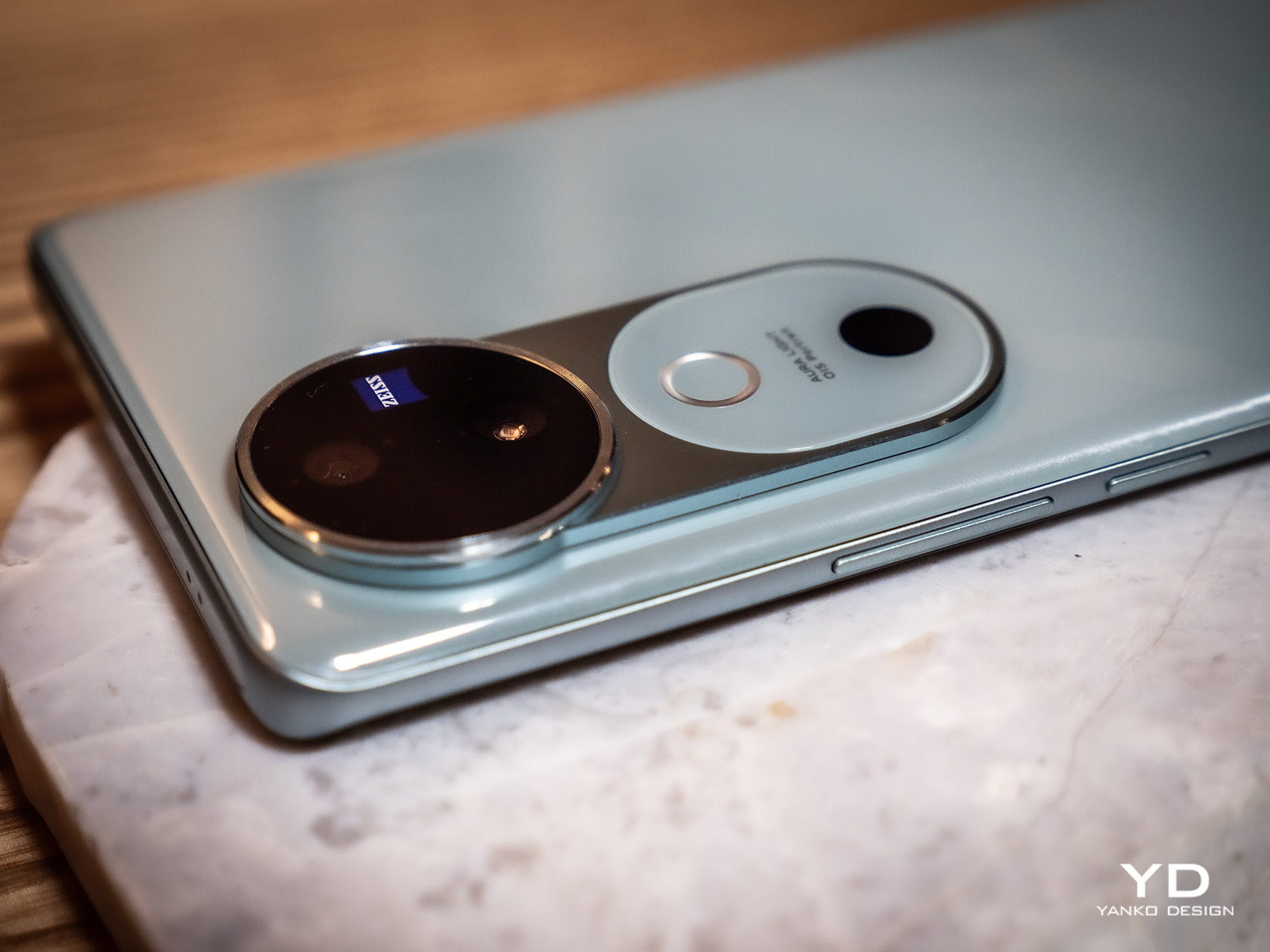
To be painfully blunt, the Vivo V40 doesn’t exactly have a standout feature. Yes, the 50MP ZEISS cameras perform well, but other mid-range phones can match its output and even have a telephoto shooter in the gang. Its hardware isn’t exactly fresh or notable, but it does get the job done. The slim and sleek design is definitely eye-catching, but they always say that beauty is in the eye of the beholder.
Instead, it’s actually the sum of its parts that give the Vivo V40 its value. It’s a solid performer with dependable cameras wrapped in a premium-looking design, delivering long battery life and durability on par with high-end rivals. And when you slap on the $430 price tag, you basically get a mobile partner that you can rely on, as long as you don’t make too many demands.
It is getting harder to stand out in a very crowded smartphone market, and some vendors have started making gimmicks, adopting exaggerated designs, or adding over-the-top features just to differentiate themselves. Sometimes it works, but most of the time you end up with an outlandish design that costs more than it’s worth. In contrast, the Vivo V40 opts for a simple yet solid design, delivering a well-rounded experience with a camera system that you can be proud of and a large battery that won’t let you down.
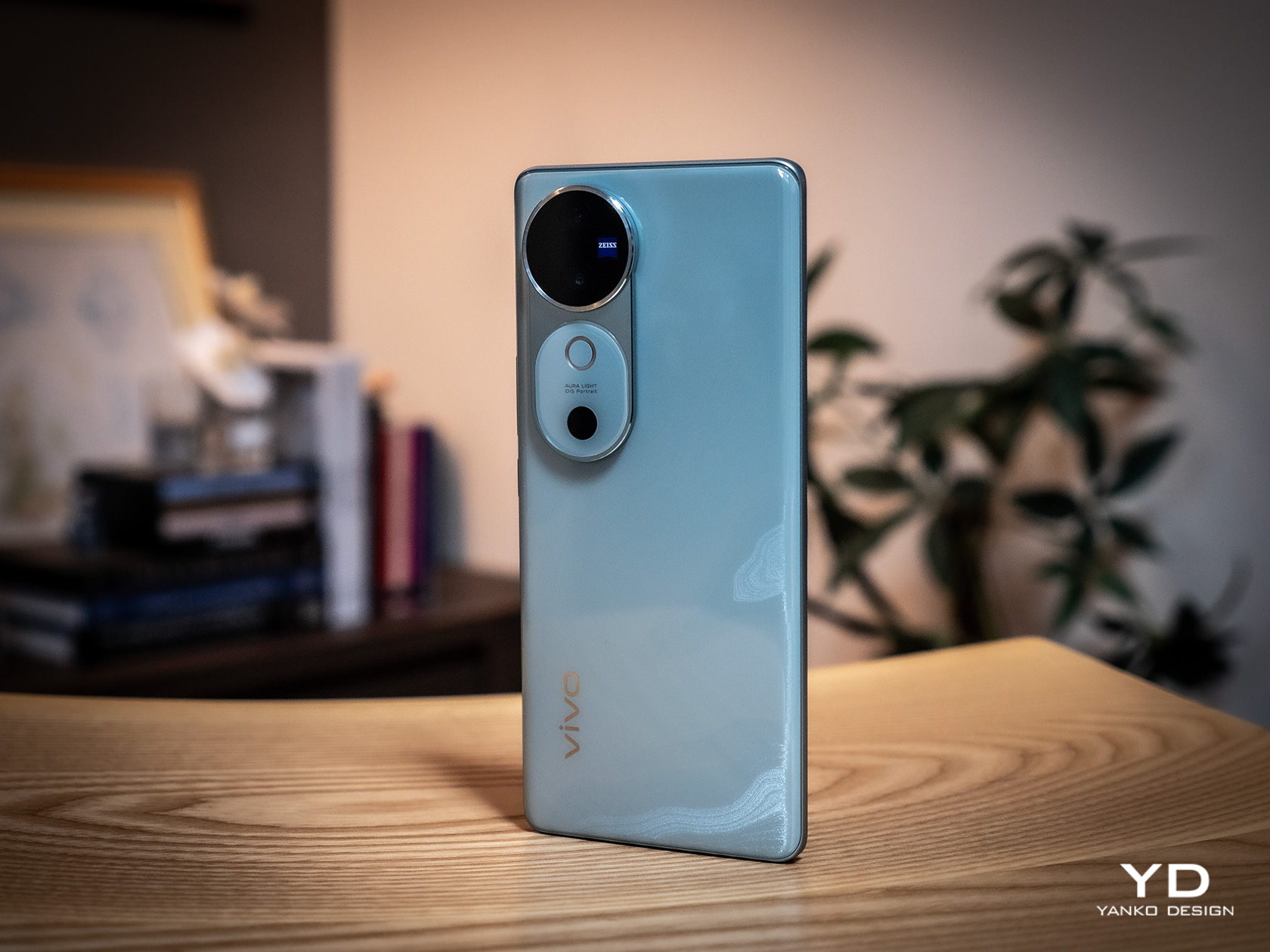
The post Vivo V40 Review: Keeping Things Simple and Sweet first appeared on Yanko Design.